
30 Sourcing / Market / Fairs / Innovations / Trends / Sustainability
FOTOSHOE
GLOBAL FASHION SRL
Sede: IL BARICENTRO – Piastra Torre B – 70010 Casamassima (BA) – SS 100 Km 18 c/o “il Baricentro” - T. +39 080.9263531
Sede Logistica: 76125 Trani (BT) – Via papa Giovanni XXIII, 101/26 T. +39 0883.950034 www.ecobiocalzature.com - info@globalfashion.it
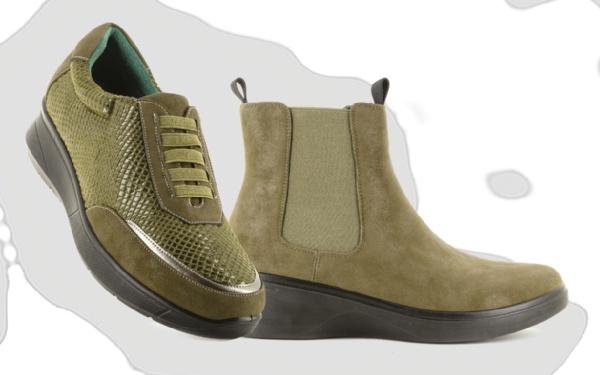


GLOBAL FASHION
we exhibit at Expo Riva Schuh 14-17/01/2023 HALL B2 - STAND C16


Sourcing / Market / Fairs / Innovations / Trends / Sustainability
FOTOSHOE
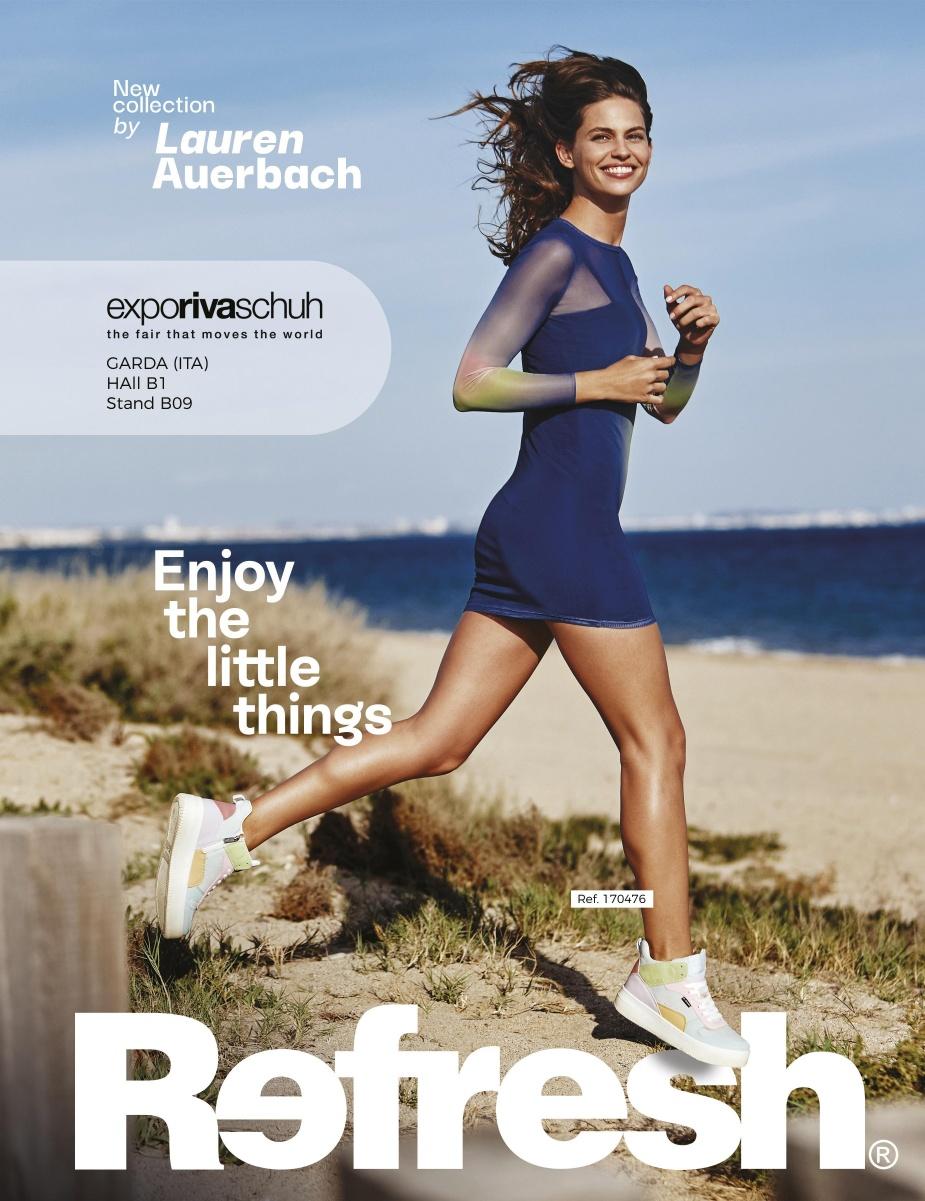
www.obucavesna.rs | vesna.footwear@gmail.com | Contact: +381 063.255.777 | IG: obucavesna EXPO RIVA SCHUH - Pav. B1 Stand E20

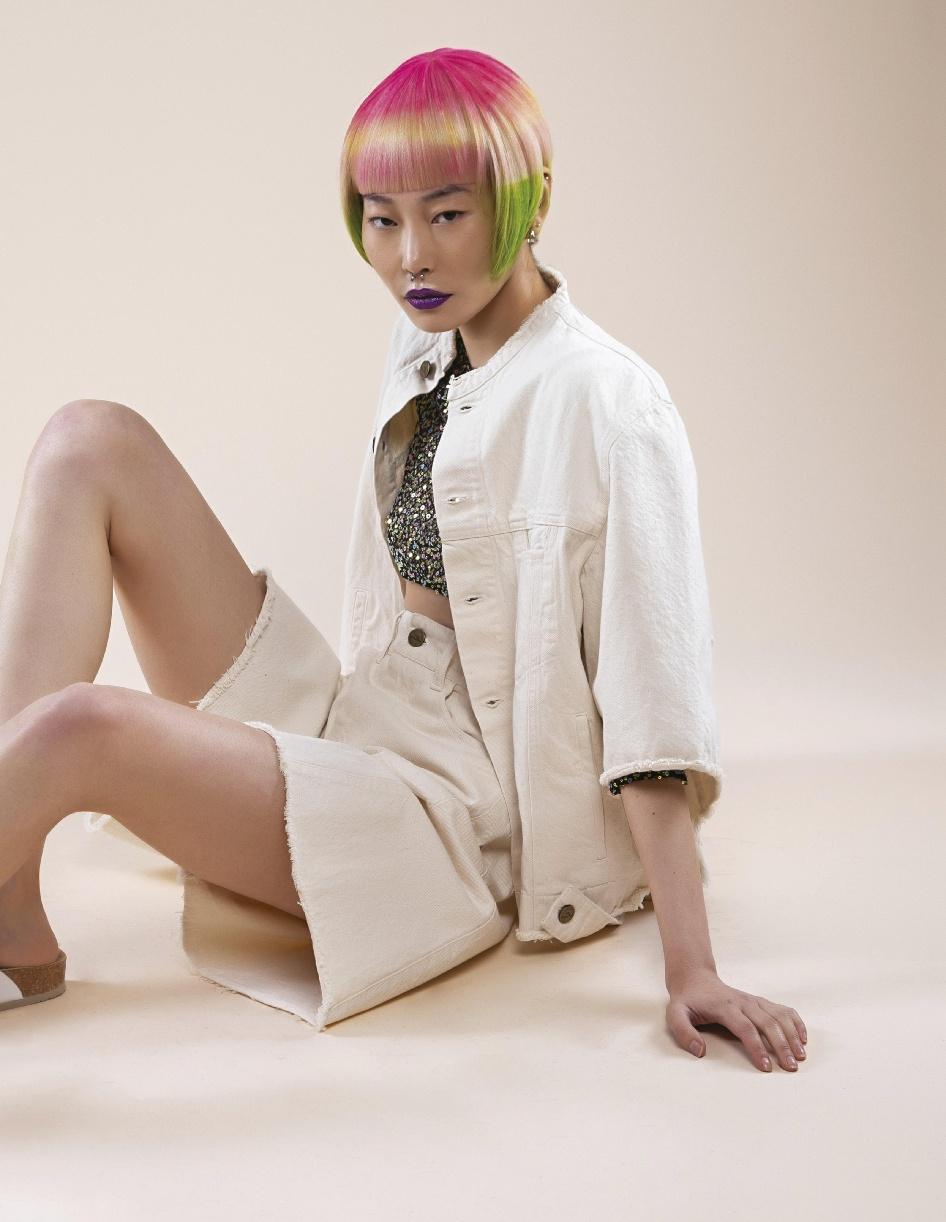



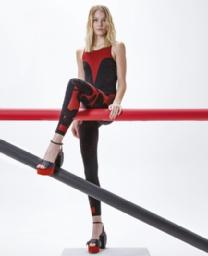
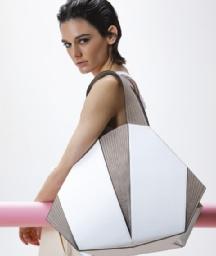
Contents 12 Expo Riva Schuh & Gardabags, the ingredients for a fair that is not just a fair Fairs 42 12 46 Four consumer trends anticipate the future of fashion and luxury 42 18 Expo Riva Schuh & Gardabags 2023: “We expect a significant volume of orders” 24 The innovation the retail sector needs Innovation 36 Deichmann Group’s market vision and new projects Market 46 Amazing design Fashion 74 Market Footwear sector in the ‘new China’

DIRETTORE RESPONSABILE
Matteo Pasca
DIRETTORE EDITORIALE
Roberto Pellegrini
ART DIRECTOR Angelo Lanza angelo.lanza@edizioniaf.com
FASHION EDITOR Luca Termine luca.termine@edizioniaf.com
GRAPHIC DESIGN Michele Alberti michele.alberti@edizioniaf.com
EDITORIAL Erika Alberti, Alessandro Dorio,
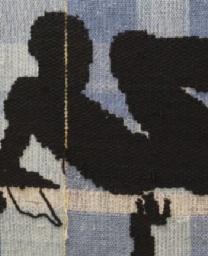



Mariacristina Ferraioli, Matteo Galuzzi, Enrico Martinelli, Sara Meneghetti, redazione@edizioniaf.com
DIGITAL Alessandro Capuzzi, Domiziana Desantis, Ilaria Marciò digital@edizioniaf.com
PR & MARKETING Mariella Catalano, Mariel Cuba subscription@edizioniaf.com

ADVERTISING Filippo Crepaldi, Giorgio Gori, Lucio Luiselli, Stefano Migliavacca, Jose Rivera adv@edizioniaf.com
OPERATIONS
Massimo Ledda, Elisa Trasi, Andrea Zampieri operations@edizioniaf.com
PRINTING
Porpora Group - porpora-group.it Aut. del trib. di Milano n. 392 del 5-12-69 Spedizione Posta Target. È vietata la produzione senza autorizzazione dei testi e delle immagini. Il trattamento dei dati personali dei destinatari di Foto Shoe 30 è svolto nel rispetto della Legge 675/96 sulla Privacy. È possibile chiedere la modifica o la cancellazione dei propri dati indirizzando la richiesta a: Edizioni Foto Shoe 30 srl, Via Ippolito Nievo, 3320145 Milano ai numeri di fax e di posta elettronica indicati.

Contents 92
110 144 153 The Punk revolution also changed the world of fashion 144 Trends Spring/Summer 2024 Inspirations, themes, materials and colours 153 Trends 92 Sustainable transition in the fashion industry is a strategic issue Sustainability 110 Fashion Shooting Fashion 100 Traceability is the only way to achieve lasting sustainability #01 January 2023 Anno LIV EDIZIONI FOTO SHOE 30 srl Via Ippolito Nievo, 33 - 20145 Milano Tel. +39 02 319121 - Fax +39 02 33611619 www.fotoshoemagazine.com info@edizionifotoshoe30.com Photo: Edizioni AF Production Send an e-mail to fotoshoe@edizioniaf.com to receive a link and read the next issues of FOTOSHOE online for free

Viva l’inverno
di Roberto Pellegrini Presidente Fierecongressi Riva del Garda
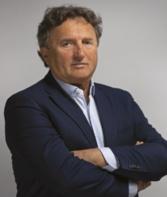
L’inverno è un’estate che non ti ha conosciuto”. Verso romantico di una hit che, però, nella stagione fredda vede solo tristezza e buio. Per noi non è così. Viva l’inverno. Un inverno che da sempre è stagione preziosa, in particolare per il mondo delle calzature, in termini di paia e di valore. Viva l’inverno che si aprirà a Expo Riva Schuh & Gardabags perché sarà senza dubbio ricco non solo di novità stilistiche (che in questo numero anticipiamo), ma anche e soprattutto di scambi commerciali. L’enorme lavoro di contatti e relazioni attivate a livello internazionale – dagli USA all’India, dall’Africa al Far East – porterà a Riva del Garda un gran numero di buyer che hanno alle spalle magazzini ormai vuoti e desiderano individuare fornitori e tendenze per piazzare ordini. Sì, sarà un inverno caldo e luminoso in cui scoprire le innovazioni dedicate al retail, i percorsi di tracciabilità più interessanti per una filiera sempre più sostenibile, le tendenze di prodotto e di mercato. Nelle prossime pagine qualche anticipazione di questi temi. E se non bastasse a placare la curiosità di sapere di chi è il verso che ho citato all’inizio, eccovi soddisfatti: Coma Cose – Fiamme negli occhi. Buon inverno a tutti!
Longlivewinter
"Winter is a summer that didn't know you”. Romantic verse of a hit that, however, sees only sadness and darkness in the cold season. For us, it does not. Long live winter. A winter that has always been a precious season, especially for the world of footwear, in terms of pairs and value.
Long live the winter that will open at Expo Riva Schuh & Gardabags because it will undoubtedly be rich not only in stylistic novelties (which we anticipate in this issue), but also and above all in business exchanges. The enormous work of contacts and relationships activated internationally - from the U.S. to India, from Africa to the Far East - will bring to Riva del Garda a huge number of buyers who have now empty warehouses and wish to identify suppliers and trends to place orders.
Yes, it will be a warm and bright winter in which to discover innovations dedicated to retail, the most interesting traceability paths for an increasingly sustainable supply chain, and product and market trends. In the next pages some previews of these topics. And if that is not enough to appease your curiosity to know whose verse I mentioned at the beginning, here you are satisfied: Coma Cose – Fiamme negli occhi.
Happy winter to all!
Editorial 10

Expo Riva Schuh & Gardabags, gli ingredienti per una fiera che non è solo una fiera
L’evento, che si terrà dal 14 al 17 gennaio 2023 a Riva del Garda, si propone anche come appuntamento irrinunciabile per tutti coloro che vogliono approfondire tematiche cruciali per conoscere e meglio affrontare le sfide di settore del presente e del futuro.
Molto mirate le tematiche selezionate dagli organizzatori e dal Comitato Scientifico della fiera che hanno individuato nella situazione dei mercati, nella sostenibilità e nell’innovazione dedicata al mondo del retail, gli snodi cruciali su cui focalizzare l’attenzione.
MERCATI
IFocus sui mercati, innovazione dedicata al retail, sostenibilità e tracciabilità sono i temi centrali dell’edizione di gennaio 2023. produttori ci sono. I compratori ci sono. Le associazioni di categoria internazionali ci sono. Gli esperti del settore ci sono. Ci sono tutti gli ingredienti per fare di Expo Riva Schuh & Gardabags un evento di caratura internazionale dedicato non solo a instaurare proficue relazioni commerciali fra i compratori di calzature e pelletteria e i produttori che offrono le novità più interessanti per il prossimo autunno/inverno 2023/24 o i riassortimenti per la stagione estiva.
Expo Riva Schuh & Gardabags è da sempre caratterizzata da una fortissima personalità internazionale. Sia l’offerta dei prodotti che la provenienza dei buyer coinvolgono operatori del settore provenienti da ogni parte del mondo. È perciò naturale che in tale contesto si approfondiscano e studino alcuni mercati di rilievo così come alcune piazze meno note.
I Market Focus di gennaio 2023 si concentreranno sull’area DACH, i principali Paesi europei di lingua tedesca, sull’America Latina (Guatemala, Perù, Uruguay), India, South East Asia (Indonesia, Malesia, Singapore) e USA.
SOSTENIBILITÀ
Una delle missioni che Expo Riva Schuh & Gardabags si è data è quella di fungere da aggregatore e facilitatore di un percorso che consenta al comparto internazionale di calzature e pelletteria di divenire sempre più attento e proattivo nei confronti delle tematiche della sostenibilità. Il Comitato Scientifico della fiera ha individuato nel tema della tracciabilità lo snodo fondamentale su cui ogni argomento di sostenibilità dovrebbe imperniarsi. Due gli appuntamenti in programma:

- Trasparenza nella filiera moda e calzatura: what’s next?
I temi della sostenibilità nella moda e nella calzatura sono sempre più al centro dell’attenzione dei governi, delle
12 Fair
imprese e dei consumatori e sempre più si fondono in una logica di trasparenza tra produttore e consumatore sulle materie prime e sui processi utilizzati. Ciò impone necessariamente una logica di filiera. Ma cosa ci riserva il prossimo futuro? Quali sono le strategie che le aziende stanno progettando per i prossimi anni? Attraverso l’opinione di esperti e di imprese del settore, il workshop sarà occasione per fare il punto su cosa è stato fatto fino ad oggi e quali siano le sfide del prossimo triennio.
- Il futuro è ora: la sfida delle nuove normative europee sulla sostenibilità e la tracciabilità
Per diverso tempo si è parlato di sostenibilità con verbi al futuro. Oggi, le nuove normative di alcuni importanti Paesi europei (Germania in particolare) impongono di parlarne al presente. Cosa cambia per le aziende della moda e della calzatura con l’applicazione delle nuove normative? Quali sono i requisiti per le aziende che vogliono continuare a essere presenti in questi mercati? Attraverso la descrizione di come stanno cambiando le regole competitive in alcuni grandi mercati europei, il workshop farà il punto su quali siano i costi e gli strumenti a disposizione delle aziende per adeguarsi ai nuovi requisiti.
INNOVAZIONE PER IL RETAIL
La terza edizione dell’Innovation Village Retail vedrà partecipare all’evento rivano 10 nuove startup che offrono soluzioni e servizi destinati a rinnovare o addirittura rivoluzionare il mondo del retail. Un’occasione unica per i compratori di investire non solo in nuove collezioni, ma di esplorare anche nuove idee per il proprio business. Potranno conoscere le proposte delle startup innovative sia durante la Startup Competition, il concorso che decreterà la startup più innovativa, sia durante i 3 workshop a loro dedicati, gli Innovation Village Input:

- Reinventing the Customer Experience
- Reinventing Operations and Reducing Impact
- Disruptive Business Models in Footwear
LEISURE
Non si può vivere di solo lavoro. Così Expo Riva Schuh & Gardabags ha pensato di offrire una particolare esperienza capace di concedere un piacevole svago ai propri ospiti, pur nell’alveo di un contesto professionale. Wine & Shoes, una degustazione di vini del territorio guidata da un rinomato sommelier capace di stuzzicare il gusto degli invitati e al tempo stesso offrire un curioso gancio con gli stili di calzature e borse più in tendenza
Focus on markets, innovation dedicated to retail, sustainability and traceability are the central themes of the January 2023 edition.
The manufacturers are there. The buyers are there. The international trade associations are there. The industry experts are there. All the ingredients are there to make Expo Riva Schuh & Gardabags an event of international caliber dedicated not only to establishing profitable business relationships between buyers of footwear and leather goods and the manufacturers offering the most interesting new products for the upcoming fall/winter 2023/24 or reassortments for the summer season. The event, which will be held from January 14-17, 2023 in Riva del Garda, also aims to be a must-attend event for all those who want to delve into crucial issues to know and better face the sector challenges of the present and future. Very targeted are the themes selected by the organizers and the Scientific Committee of the fair, which have identified the situation of markets, sustainability and innovation dedicated to the retail world as the crucial junctures on which to focus attention.
13 Fair
ExpoRivaSchuh&Gardabags, theingredientsforafairthatis notjustafair
MARKETS
Expo Riva Schuh & Gardabags has always been characterized by a very strong international personality. Both the product offerings and the provenance of the buyers involve industry players from all over the world.
It is therefore natural that in this context, some major markets as well as some lesser-known marketplaces are explored and studied.
Market Focuses in January 2023 will center on the DACH area, the main German-speaking European countries, Latin America (Guatemala, Peru, Uruguay), India, South East Asia (Indonesia, Malaysia, Singapore) and the USA.
SUSTAINABILITY
One of the missions that Expo Riva Schuh & Gardabags has given itself is to act as an aggregator and facilitator of a pathway for the international footwear and leather goods industry to become increasingly attentive and proactive toward sustainability issues. The fair's Scientific Committee has identified the theme of traceability as the fundamental pivot on which every sustainability topic should hinge.
Two events are scheduled:
- Transparency in the fashion and footwear supply chain: what's next?
Sustainability issues in fashion and footwear are increasingly at the center of attention of governments, businesses and consumers, and are increasingly merging into a logic of transparency between producer and consumer about the raw materials and processes used. This necessarily imposes a supply chain logic. But what does the near future hold for us? What strategies are companies planning for the coming years? Through the opi-
nions of experts and companies in the sector, the workshop will be an opportunity to take stock of what has been done so far and what the challenges are for the next three years.
- The future is now: the challenge of new European regulations on sustainability and traceability
For quite some time, sustainability has been talked about with verbs in the future tense. Today, new regulations in some major European countries (Germany in particular) force us to talk about it in the present tense. What changes for fashion and footwear companies with the implementation of the new regulations? What are the requirements for companies that want to continue to be present in these markets? Through a description of how competitive rules are changing in some major European markets, the workshop will take stock of what the costs and tools are for companies to adapt to the new requirements.
INNOVATION FOR RETAIL
The third edition of Innovation Village Retail will feature 10 new startups at the Riva event that offer solutions and services designed to renew or even revolutionize the retail world. A unique opportunity for buyers to not only invest in new collections, but also explore new ideas for their business.

They will be able to learn about the proposals of innovative startups both during the Startup Competition, the competition that will decree the most innovative startup, and during the 3 workshops dedicated to them, the Innovation Village Input:
- Reinventing the Customer Experience
- Reinventing Operations and Reducing Impact
- Disruptive Business Models in Footwear
LEISURE
One cannot live by work alone. So, Expo Riva Schuh & Gardabags has thought of offering a special experience capable of granting a pleasant diversion to its guests, while still within the framework of a professional context. Wine & Shoes, a tasting of local wines led by a renowned sommelier capable of tickling the taste buds of guests and at the same time offering a curious hook with the trendiest styles of shoes and bags.
Per essere aggiornati in tempo reale su giorni, orari e location dei vari appuntamenti fare riferimento all’app di Expo Riva Schuh & Gardabags o alla pagina del sito.
To real time updating on the days, times and locations of the various events refer to the Expo Riva Schuh & Gardabags App or the website page.

14 Fair
Wine & Shoes:
l’abbinamento tra vini e stili proposto da Expo Riva Schuh & Gardabags
L’evento rivano porta alla scoperta di prodotti italiani e dei temi stilistici presenti in fiera attraverso una particolare degustazione di vini volta ad ispirare e divertire.
Il primo appuntamento con Wine & Shoes si è svolto a Londra lo scorso 2 novembre per inaugurare la ripresa, a seguito della pandemia, di Expo Riva Schuh & Gardabags Around The World, il format business-oriented che prevede una serie di appuntamenti nazionali e internazionali volti a incentivare le relazioni tra operatori del settore. In quell’occasione, per incontrare i retailers inglesi in un contesto fuori dal comune, è stato organizzato l’evento “Wine Tasting and Innovative Ideas for the footwear industry“, una degustazione di vini italiani li ha accompagnati nella scoperta di alcuni dei temi stilistici presenti in fiera: Casual Fashion, Fashion Forward, Sport Fashion, Classical Evening wear, Classical Urban chic.


I partecipanti hanno molto apprezzato la particolarità dell’evento, così, durante le giornate di Expo Riva Schuh & Gardabags di gennaio 2023, il format Wine & Shoes verrà ripreso all’interno del Business Club, la nuova area esclusiva della fiera a cui è possibile accedere solo su invito. Gli incontri favoriranno occasioni di business mentre i palati verranno deliziati con la degustazione dei vini selezionati in alcune delle più rinomate cantine italiane.
TheRivadelGardaFairleadstothediscoveryofItalianproductsandstylistic themesatthefairthroughaspecialwinetastingaimedatinspiringandentertaining.
The first Wine & Shoes event took place in London on 2 November to inaugurate the resumption, following the pandemic, of Expo Riva Schuh & Gardabags Around The World, the business-oriented format that is base on a series of national and international appointments aimed at fostering relations between sector operators. On that occasion, the event "Wine Tasting and Innovative Ideas for the footwear industry" was organised to meet British retailers in an unusual context. A tasting of Italian wines accompanied them in the discovery of some of the style themes present at the fair: Casual Fashion, Fashion Forward, Sport Fashion, Classical Evening wear, Classical Urban chic. Participants greatly appreciated the special nature of the event, and so, during the days of Expo Riva Schuh & Gardabags in January 2023, the Wine & Shoes format will be resumed in the the Business Club, the new exclusive area of the fair to which access is by invitation only. Meetings will encourage business opportunities while palates will be delighted with the tasting of selected wines from some of Italy's most renowned wineries.
15 Fair
Wine & Shoes: the combination of wines and stylesproposedbyExpoRivaSchuh&Gardabags

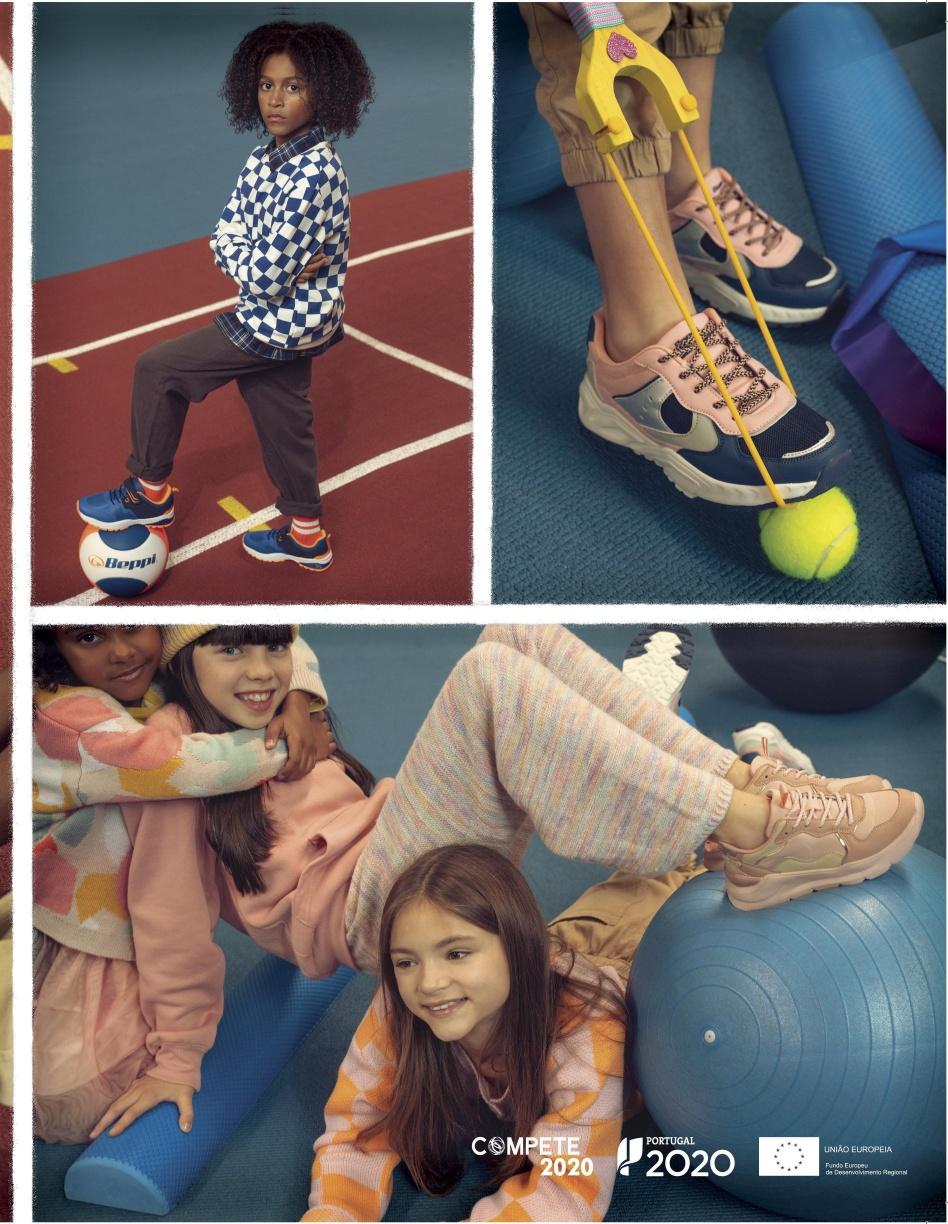
PLANITOI BEPPI
Expo Riva Schuh & Gardabags 2023:
“Ci aspettiamo un volume di ordini importante”
Il ‘sentiment’ di aziende e compratori fa prevedere un’edizione caratterizzata da ordini importanti e con una forte attenzione rivolta ai progetti Innovation Village Retail e Sostenibilità, sui quali la manifestazione rivana ha investito con decisione. Andiamo alla scoperta di ERS 2023 nelle parole di Alessandra AlbarelliDirettrice Generale Riva del Garda Fierecongressi, e GianPaola PedrettiExhibition Manager.
LPartiamo dalla prossima edizione: volendole dare un ‘titolo’, quale sarebbe?
Alessandra Albarelli: “Siamo all’interno di uno scenario globale caratterizzato da un aumento dei costi di produzione per la maggior parte delle imprese, dovuti al conflitto in Ucraina e all’aumento dei costi dell’energia e dei trasporti. Quindi è quanto mai importante per le imprese investire in attività in grado di dare dei ritorni concreti. Come organizzatori di una manifestazione leader quale è Expo Riva Schuh & Gardabags, siamo consapevoli che in questo contesto il ruolo della fiera è quello di creare delle connessioni economiche forti, che permettano alle imprese di entrare in contatto con nuovi mercati e potenziali clienti e dar vita a un business remunerativo. Se volessimo dare, quindi, un titolo che caratterizza questa edizione rispetto alle precedenti, direi che è ‘un evento motore di business’”.
Qual è il ‘sentiment’ che avete raccolto dalla voce delle aziende e dei compratori in questi mesi?
Alessandra Albarelli: “L’impressione che abbiamo raccolto in questi mesi nei contatti avuti con le imprese espositrici e i compratori, è che è ormai terminato il periodo dell’emergenza post pandemia, in cui si è attinto a piene mani alle scorte di magazzino. Oggi i buyer – e parliamo anche di grandi catene, così come di GDO - si trovano di fronte alla necessità di tornare ad un livello di ordini e di completezza della collezione che è proprio del periodo pre Covid, e attendono il momento di tornare in fiera per trovare novità di prodotto e varietà di modelli, e fare ordini per rispondere alla ripresa della domanda e dei consumi. Abbiamo quindi superato lo stallo pandemico, e anche le aziende, naturalmente, hanno colto questa voglia e questa necessità dei compratori di fare nuovi ordini e dare un avvio decisivo al business. Per tutti questi motivi, gli operatori si apprestano a tornare a Riva del Garda dopo il successo di giugno con l’aspettativa di incontrare
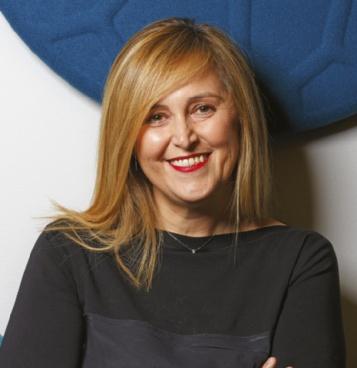
18 Fair
Alessandra Albarelli - General Director Riva del Garda Fierecongressi
molti più buyer, soprattutto dall’estero, e di fare ordini importanti. Al di là quindi dei numeri in termini di espositori e visitatori che caratterizzeranno questa edizione di gennaio della manifestazione, ci aspettiamo una crescita delle transazioni generate in fiera, un aumento delle paia vendute, e questo perché i grandi player sono intenzionati a cercare novità e varietà che si tradurranno in ordini importanti”.
Expo Riva Schuh è, fin dalla sua nascita, un appuntamento fortemente internazionale: come si è evoluto questo concetto nel tempo e cosa vuole dire per ERS essere internazionali oggi?
GianPaola Pedretti: “In questo momento storico per noi questo significa avere delle relazioni solide e continuative in paesi strategici, attraverso una rete di rappresentanti presenti in loco, con l’obiettivo di monitorare questi mercati, coglierne le esigenze e i cambiamenti in atto, nonché stringere dei rapporti continuativi e solidi con le aziende produttrici e i buyer di questi paesi. Expo Riva Schuh & Gardabags, infatti, si è dotata di un network di rappresentati in una ventina di paesi esteri, che coprono le aree strategiche del mondo: nord Africa, Turchia e bacino del Mediterraneo, nord Europa, India e Sud est asiatico, Israele e America Latina. Queste sorti di ‘antenne internazionali’ permetteranno alla fiera di crescere ancora di più a livello internazionale, organizzando Road Show ed eventi locali, oltre che attivando progetti di incoming a Riva del Garda”.
Ci potete dire qualcosa di più sull’incoming dei buyer internazionali?
GianPaola Pedretti: “Nella prossima edizione sarà potenziata l’attività di incoming di compratori esteri, con un centinaio di hosted buyer, dei quali una ventina provenienti da nuovi paesi target, su cui stiamo puntando perché di particolare interesse per lo sviluppo della manifestazione. Inoltre, un’attenzione particolare è stata data al mercato americano, in rappresentanza del quale ci sarà una delegazione consistente di compratori selezionati. Ci saranno delegazioni importanti - sia dal punto di vista numerico, sia del profilo del buyer - provenienti dall’india, con rappresentanti di catene che hanno oltre 600 punti vendita, così come saranno presenti delegazioni di rilievo dal Sud America (Perù, Guatemala, Uruguay), che esprimono mercati di grande interesse e potenziale. Per la prima volta, inoltre, avremo rappresentanti provenienti da Israele - un mercato importante per la sua capacità di spesa -, e dal sud est asiatico (Singapore, Malesia, Indonesia). Infine, non mancheranno naturalmente i buyer provenienti da mercati tradizionali e target, come il nord Europa, la Germania e la Gran Bretagna”.
Grazie alla creazione di un Comitato Scientifico concepito ‘ad hoc’, Expo Riva Schuh & Gardabags è oggi pioniere e leader nella selezione dei temi e delle case histories dedicati al settore calzaturiero. Possiamo dire che Expo Riva Schuh & Gardabags è oggi una fiera autorevole anche nell’ambito dei talk?
Alessandra Albarelli: “Senza dubbio, tanto che spesso fanno riferimento ai nostri topic anche altre manifestazioni ed eventi del settore. E questo perché la scelta di creare un comitato scientifico ‘ad hoc’ e di alto livello, che si dedica durante l’intero arco dell’anno alla selezione di temi e contenuti che concretamente interessano il settore e che sono affrontati con competenza e completezza, è un servizio importante che offriamo alle aziende e ai visitatori, così come il lavoro di scouting di case history che possono essere di aiuto alle imprese. Expo Riva Schuh & Gardabags si conferma, così, appuntamento di business, ma anche momento di approfondimento e innovazione al servizio di aziende e visitatori. Non a caso è proprio dal lavoro del Comitato scientifico che è nato l’approfondimento e lo sviluppo di temi quali la sostenibilità e l’innovazione con le start up dell’Innovation Village Retail”.
Parlando proprio di sostenibilità: come risponde Expo Riva Schuh & Gardabags a quella che ormai è un’esi-
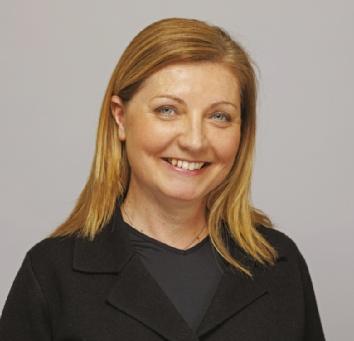
19 Fair
GianPaola Pedretti - Exhibition Manager
genza per aziende, buyer e consumatori?
GianPaola Pedretti: “Nel settore della moda nel suo complesso, e non solo della calzatura, c’è oggi una forte attenzione al tema della sostenibilità, che riguarda tutti i mercati, anche se in misura diversa. In particolare, le aziende sono sempre più impegnate in azioni concrete a tutela dell’ambiente e dell’uomo, e alla ricerca di uno sviluppo realmente sostenibile, soprattutto nei mercati più maturi, come quelli del nord Europa. Expo Riva Schuh & Gardabags ha da sempre anticipato e riflesso le tendenze del mercato calzaturiero e in questo senso si è da tempo mossa con azioni concrete volte a diffondere la cultura della sostenibilità. In questa edizione, in particolare, ci saranno delle sessioni dedicate al tema normativo e di etichettatura, che appare molto complesso e diverso da paese a paese, e approfondimenti dedicati al prodotto con la presentazione di alcune Case Histories.
Un altro aspetto importante che caratterizza Expo Riva Schuh & Gardabags è l’attenzione all’innovazione, cui è dedicato uno spazio apposito come l’Innovation Village Retail. Quali novità ci sono per l’edizione di gennaio?
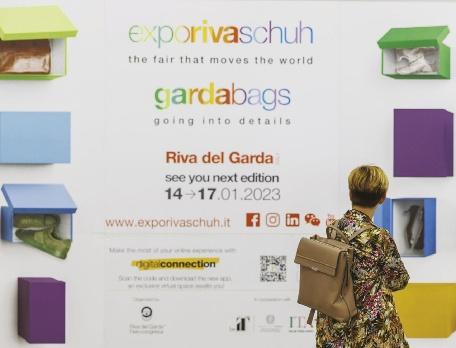
Alessandra Albarelli: “Dato il grande successo delle passate edizioni, tornerà anche a gennaio l’Innovation Village Retail, uno spazio ‘dedicato’ che propone, ogni sei mesi, una nuova e attenta selezione delle giovani aziende e start up utili e funzionali all’innovazione dello sviluppo del business in ambito retail. Riteniamo che il lavoro di scouting svolto da Retail Lab nella selezione delle start
up partecipanti al bando sia di grande importanza per gli operatori, anche perché oggi il costo che le aziende devono sostenere per l’innovazione necessaria per essere competitivi in ambito globale è sempre più elevato, e i cambiamenti sempre più veloci. L’Innovation Village rappresenta quindi un servizio di grande valore aggiunto, e non solo per i visitatori. Anche le start up e le giovani aziende che partecipano al progetto hanno un importante ritorno, perché dalla presenza in fiera spesso acquisiscono un respiro globale, con l’avvio di collaborazioni importanti con aziende internazionali leader nel mercato della calzatura: quindi si tratta sicuramente di una vetrina privilegiata e di un importante trampolino di lancio sul mercato globale. Chi viene in fiera e visita l’Innovation Village Retail porta a casa senza dubbio del valore aggiunto”.
The 'sentiment' of companies and buyers points to an edition characterised by important orders and with a strong focus on Innovation Village Retail and Sustainability projects, in which the Riva event has decisively invested. Let's discover ERS 2023 in the words of Alessandra AlbarelliGeneral Manager of Riva del Garda Fierecongressi, and GianPaola Pedretti - Exhibition Manager.
20 Fair
2023:"Weexpectasignificant volume of orders"
ExpoRivaSchuh&Gardabags
Let's start with the next edition: if you wanted to give it a 'title', what would it be?
Alessandra Albarelli: "We are lining a global scenario characterised by an increase in production costs for most companies, due to the conflict in Ukraine and the rise in energy and transport costs. Therefore, it is more important than ever for companies to invest in activities that can provide concrete returns. As the organisers of a leading event such as Expo Riva Schuh & Gardabags, we are aware that in this context the role of the trade fair is to create strong economic connections, which allow companies to make contact with new markets and potential customers and create profitable business. If we wanted to give, therefore, a title that characterises this edition compared to previous ones, I would say that it is 'a business driving event'.
What is the 'sentiment' you have gathered from the voice of companies and buyers in recent months?
Alessandra Albarelli: 'The impression we have gathered over the past few months in our contacts with exhibiting companies and buyers is that the post-pandemic emergency period, in which we drew heavily on stocks, is now over. Today, buyers - and we are also talking about large chains, as well as large-scale retail chains - are faced with the need to return to a level of orders and completeness of the collection that is typical of the pre-Covid period, and they are waiting for the time to return to the fair to find new products and a variety of models, and to place orders to meet the recovery in demand and consumption. We have therefore overcome the pandemic stalemate, and the companies, of course, have also picked up on this desire and this need of buyers to place new orders and get business off to a decisive start. For all these reasons, operators are preparing to return to Riva del Garda after the success of June with the expectation of meeting many more buyers, especially from abroad, and of placing important orders. Therefore, beyond the numbers in terms of exhibitors and visitors that will characterise this January edition of the event, we expect a growth in the transactions generated at the fair, an increase in pairs sold, and this because the big players are looking for novelty and variety that will translate into important orders".
Expo Riva Schuh has been a strongly international event since its inception: how has this concept evolved over time and what does it mean for ERS to be international today?
GianPaola Pedretti: 'At this point in time for us this means having solid and ongoing relationships in strategic countries, through a network of representatives on site, with the aim of monitoring these markets, grasping their needs and the chan-
ges taking place, and forging ongoing and solid relationships with manufacturers and buyers in these countries. Expo Riva Schuh & Gardabags, in fact, has set up a network of representatives in some twenty foreign countries, covering strategic areas of the world: North Africa, Turkey and the Mediterranean basin, Northern Europe, India and South East Asia, Israel and Latin America. These 'international antennas' will allow the fair to grow even more internationally, organising road shows and local events, as well as activating incoming projects to Riva del Garda".
Can you tell us more about the incoming of international buyers?

GianPaola Pedretti: 'In the next edition, the incoming activity of foreign buyers will be stepped up, with about one hundred hosted buyers, of which about twenty from new target countries, which we are focusing on because they are of particular interest for the development of the event.
In addition, special attention has been given to the American market, representing which there will be a substantial delegation of selected buyers. There will be important delegations - both in terms of numbers and buyer profile - from India, with representatives from chains with over 600 sales outlets, as well as important delegations from South America (Peru, Guatemala, Uruguay), which express markets of great interest and potential. For the first time, we will also have representatives from Israel - an important market due to its spending capacity - and South East Asia (Singapore, Malaysia, Indonesia). Finally, buyers from traditional and target markets, such as Northern Europe, Germany and Great Britain, will of course not be missing'.
21 Fair
Thanks to the creation of a Scientific Committee conceived 'ad hoc', Expo Riva Schuh & Gardabags is now a pioneer and leader in the selection of themes and case histories dedicated to the footwear sector. Can we say that Expo Riva Schuh & Gardabags is now also an authoritative trade fair in the area of talks?
Alessandra Albarelli: 'Undoubtedly, so much so that our topics are often referred to by other trade fairs and events in the sector. And this is because the decision to create an 'ad hoc' and high-level scientific committee, which devotes itself throughout the year to selecting topics and content that are of concrete interest to the sector and that are addressed with competence and completeness, is an important service that we offer to companies and visitors, as is the work of scouting case histories that can be of help to companies. Expo Riva Schuh & Gardabags thus confirms itself as a business event, but also as an opportunity for in-depth analysis and innovation at the service of companies and visitors. It is no coincidence that the work of the Scientific Committee has led to the in-depth analysis and development of topics such as sustainability and innovation with the Innovation Village Retail start-ups.
Speaking precisely of sustainability: how does Expo Riva Schuh & Gardabags respond to what is now a requirement for companies, buyers and consumers?


GianPaola Pedretti: 'In the fashion industry as a whole, and not just footwear, there is now a strong focus on the issue of sustainability, which affects all markets, albeit to varying degrees. In particular, companies are increasingly committed to concrete actions to protect the environment and mankind, and to the search for truly sustainable development, especially in more mature markets, such as those in northern Europe. Expo Riva
Schuh & Gardabags has always anticipated and reflected the trends in the footwear market and has long been moving in this direction with concrete actions aimed at spreading the culture of sustainability. In this edition, in particular, there will be sessions dedicated to the topic of regulations and labelling, which appears very complex and differs from country to country, and in-depth sessions dedicated to the product with the presentation of some Case Histories.
Another important aspect that characterises Expo Riva Schuh&Gardabagsisthefocusoninnovation,towhich a special space such as the Innovation Village Retail is dedicated.WhatnoveltiesaretherefortheJanuaryedition?
Alessandra Albarelli: "Given the great success of past editions, the Innovation Village Retail, a 'dedicated' space that offers, every six months, a new and careful selection of young companies and start-ups that are useful and functional for innovative business development in the retail sector, will be back in January. We believe that the scouting work carried out by Retail Lab in selecting the start-ups taking part in the call for entries is of great importance for operators, not least because today the cost that companies have to bear for the innovation needed to be competitive in the global arena is increasingly high, and the changes are accelerating. The Innovation Village therefore represents a service of great added value, and not only for visitors. Start-ups and young companies that take part in the project also have an important return, because from their presence at the fair they often acquire a global outlook, with the start-up of important collaborations with leading international companies in the footwear market: so this is certainly a privileged showcase and an important springboard to the global market. Those who come to the fair and visit the Innovation Village Retail undoubtedly take home added value'.
22 Fair

L’innovazione di cui il retail ha bisogno
Si può criticare il Black Friday, ci mancherebbe altro. Quello che non si può fare è negare che il ‘venerdì nero’, espressione più clamorosa del commercio online, abbia modificato radicalmente l’idea di acquisto e di shopping. Non è possibile evitare la domanda: cosa può fare oggi il retail per rimanere al passo con i tempi e le aspettative dei clienti?
Expo Riva Schuh, insieme ad alcuni partner esperti del settore, se lo chiede già da due anni, selezionando e suggerendo al mondo della distribuzione l’esperienza di startup innovative, grazie al progetto Innovation Village Retail.
Cosa serve oggi al retail, in particolare a quello fisico dei negozi, per offrire un’esperienza d’acquisto al passo con i tempi e con le aspettative e richieste dei consumatori? Deve offrire un’esperienza misurabile.
Con Massimo Volpe, Co-Founder Retail Hub, e Alberto Mattiello, Partner & Head of Innovation Retail Hub, scopriamo quali sono i temi più caldi in vista del prossimo appuntamento con l’Innovation Village Retail di gennaio 2023.
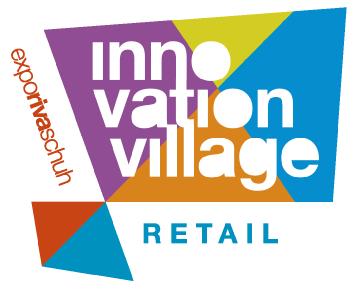
CHE COS’È INNOVAZIONE
Partiamo dalle basi. Per entrambi gli esperti un’idea può definirsi innovativa se è in grado di risolvere un problema o soddisfare una necessità. Se non risolve un problema, non vale la pena prenderla in considerazione. Per Volpe “le idee più interessanti sono quelle che non per forza hanno già definito una soluzione in ogni minimo dettaglio, ma sono in grado di delineare molto bene il problema da affrontare. Anche perché le soluzioni, soprattutto quando si parla di startup early stage, non sono mai definitive. Sono più simili a concetti che a mano a mano che si confrontano col mercato diventano reali, si aggiustano e si adattano ai contesti. Possono anche cambiare totalmente pelle e modificarsi completamente”. Per Volpe, poi, la faccenda si fa ancora più interessante quando si individuano problemi che gli stessi attori del settore non vedevano o non riuscivano a identificare: “Per questo motivo, quando ho fondato Retail Hub, ho deciso fin dal primo giorno di istituire una divisione che si oc-
24 Innovation
cupasse di formazione. È inutile parlare di innovazione se il tuo interlocutore non la capisce o non possiede gli strumenti per coglierne le implicazioni”.

Per Mattiello si aggiunge un dato qfondamentale: “Niente che non sia sostenibile. Se non è sostenibile non è innovazione”.
DI QUALI INNOVAZIONI HA BISOGNO IL RETAIL
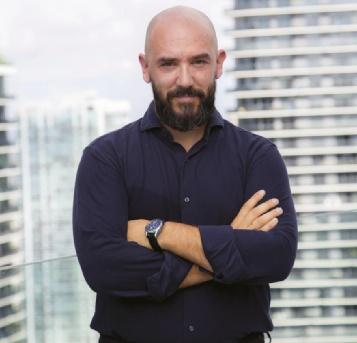
Nella visione di Retail Hub la distribuzione è un settore estremamente fluido, in continuo mutamento, il primo su cui si riversano i cambiamenti sociali. Lo si è visto chiaramente durante il Covid e lo si vede oggi con l’impennata dell’inflazione. Di conseguenza, ogni volta che la società evolve il settore retail deve evolvere di conseguenza. Per questo necessita di strumenti adeguati che lo aiutino nella continua analisi e nel costante adattamento. “Fino a qualche tempo fa – spiega Massimo Volpe - si diceva che il limite dell'online fosse il non essere in grado di costruire una vera esperienza di shopping, ma che restituisse solo un freddo acquisto. Oggi il paradigma si è invertito. L’online è un’esperienza di shopping innovativa che consente di ‘navigare’ in diversi negozi, informarsi, condividere, emozionarsi e acquistare anche mentre si è sul tram. Il negozio fisico deve tornare a costruire un'esperienza all’altezza di quelle proposte in rete, altrimenti le persone non vi faranno più affidamento. Ed è quanto di peggio possa succedere, perché è il negozio il luogo in cui si fa realmente engagement, dove un commesso può condurre un’efficace azione di cross selling e, quindi, alzare il valore dello scontrino medio, oltre che fidelizzare l’acquirente.
Lo store fisico deve riappropriarsi della leadership nel creare esperienze che conquistino i clienti.
Inoltre, alla luce dei profondi mutamenti della società portati dal mondo digitale, non può che farlo realizzando esperienze misurabili, il plus più eclatante di cui si fregia l’e-commerce.
Un compito non facile per il retail fisico: come posso misurare l’efficacia di una vetrina? Eppure, oggi non è ammissibile che anche un solo elemento del processo di acquisto in store non sia misurabile. Questa è senza dubbio la necessità più rilevante del retail”.
Il tema è sottolineato anche da Alberto Mattiello che lo definisce come la “capacità del retail di ascoltare i propri interlocutori”. Alcuni strumenti per farlo già esistono: “In questo momento l'intelligenza artificiale, i sensori e gli algoritmi stanno ampliando la possibilità per il retail di ‘ascoltare’ i propri clienti. Penso a una tecnologia come quella sviluppata da Wonderflow, uno dei vincitori del contest riservato alle startup, organizzato da Expo Riva Schuh & Gardabags. L’applicazione è in grado di analizzare tutti i riscontri che i consumatori lasciano online. Una quantità di informazioni molto preziosa per il retail che non può più permettersi di essere cieco, ma deve disporre in tempo reale di tutte le indicazioni necessarie per valutare gli investimenti e coinvolgere la clientela”. Mattiello aggiunge un punto: “Il retail dovrebbe anche cominciare a riflettere su possibili cambi di modello di business, prendendo spunto dal grande successo che stanno riscuotendo i servizi su abbonamento”.
25 Innovation
Massimo Volpe, Co-Founder Retail Hub
Alberto Mattiello, Partner & Head of Innovation Retail Hub
TRACCIABILITÀ E RETAIL
Si parla molto di tracciabilità, soprattutto in ambito produttivo. È un tema che ha senso anche per il retail? Moltissimo, secondo Mattiello, che ritiene la tracciabilità “l’unica via per realizzare prodotti effettivamente sostenibili e permettere al consumatore di confrontarli fra loro”.
Inoltre, tracciare la catena del valore ha il merito di rendere la distribuzione molto più consapevole delle problematiche e delle complessità che caratterizzano la produzione, consentendo una collaborazione più stretta fra le due realtà al fine di prevenire e non solo reagire a eventuali opportunità o crisi (carenza di materie prime, rincari, nuovi mercati…).
“La tracciabilità è cruciale per garantire l’autenticità dei prodotti di lusso che si acquistano. È decisiva nel crescente mondo del second-hand (o pre-loved, come a molti piace chiamarlo): per essere certi dell’origine di un prodotto, delle modifiche che sono state apportate a un oggetto (un orologio, un accessorio…) o delle mani per cui è passato”, sottolinea Volpe.
LE INNOVAZIONI PIÙ INTERESSANTI (ANCHE PER IL RETAIL)
“Mi piace frequentare il CES di Las Vegas - racconta Volpe -, una grande fiera di tecnologia che permette di individuare nuove tecnologie non dedicate al retail, ma che in qualche modo potrebbero esservi traslate. Proprio a Las Vegas, quest’anno, ho provato per la prima volta la guida autonoma di Tesla. Finché certe tecnologie non le sperimenti di persona non ti rendi conto di quanto potrebbero cambiare il mondo. In questo caso penso al mondo della logistica e della delivery”. Ma per Volpe la vera innovazione, quella che potrebbe rappresentare una nuova frontiera per il retail, è Airbnb: “Non se ne sono ancora accorti, forse, ma hanno per le mani una rete commerciale dalle potenzialità incredibili”. Mattiello sposta l’attenzione sulle possibilità dischiuse da alcuni software: “Le nuove tecnologie ‘Text to Something’ potrebbero cambiare il modo in cui ideare, realizzare e vendere le collezioni di scarpe e borse, nonché per i consumatori di avanzare le proprie richieste. Grazie all'intelligenza artificiale è già possibile scrivere in un computer un testo che descriva una qualunque cosa per far sì che la macchina ne visualizzi un'immagine. Una tecnologia che ha ricadute impensabili in molti campi, soprattutto in quelli creativi. Potrebbe rivelarsi una modalità nuova di sviluppare collezioni di calzature: baste-
rebbe indicare come ci si immagina il modello, con quali materiali lo si realizzerebbe, con che forme e colori, e lasciare che la macchina generi la collezione di conseguenza, unendo creatività umana e artificiale”.
EXPO RIVA SCHUH E L’INNOVAZIONE
Il cambio di contesto tecnologico è talmente radicale che nessun settore può permettersi di ignorarlo.
Per Mattiello “non è strano che una fiera come Expo Riva Schuh & Gardabags si preoccupi di stimolare il suo comparto di riferimento con queste tematiche. È strano chi non lo fa”.
Del resto, la fiera, in quanto punto di raccordo tra distribuzione e produzione, è il momento perfetto per ispirare entrambi al cambiamento.
“L’Innovation Village Retail ha la lodevole funzione di approfondire ogni anno un tema diverso e, quindi, selezionare le startup migliori, che già lavorano con il mondo dell’industria. Una scrematura molto utile per le aziende che altrimenti dovrebbero confrontarsi con un’offerta troppo ampia e confusa”.
Per Volpe, attraverso questa iniziativa, Expo Riva Schuh & Gardabags potrebbe anche svolgere un ruolo di capofila “in grado di aggregare aziende e incentivare sperimentazioni che un singolo soggetto non potrebbe sostenere”. Molti i temi sul piatto e tante e complesse le soluzioni innovative che potrebbero rivoluzionare il retail di oggi e di domani.
We can criticise Black Friday, by all means. What we cannot do is deny that as the most striking expression of online commerce, it has radically changed the idea of buying and shopping. There is no escaping the question: what can retail do today to keep up with the times and customer expectations?
26 Innovation
The innovation the retail sector needs
What does retail, particularly physical stores, need today to offer a shopping experience in keeping with the times and with consumer expectations and demands? It must offer a measurable experience
Expo Riva Schuh, together with some expert partners in the sector, has been asking this question for two years, selecting and proposing to the retail world the experience of innovative start-ups, through the Innovation Village Retail project.
With Massimo Volpe, Co-Founder of Retail Hub, and Alberto Mattiello, Partner & Head of Innovation of Retail Hub, we find out what the hottest topics are ahead of the next Innovation Village Retail in January 2023.
WHAT IS INNOVATION?
Let's start with the basics. For both experts, an idea can be called innovative if it can solve a problem or satisfy a need. If it does not solve a problem, it is not worth considering.
For Massimo, “the most interesting ideas are those that have not necessarily already defined every detail of a solution, but those that are able to provide a very clear outline of the problem to be tackled. Also because solutions, especially when it comes to early stage start-ups, are never definitive. They are more like concepts that gradually become a reality as they come into contact with the market, adjusting and adapting to the environment. They can also change their whole appearance and end up completely different”.
For Massimo, innovations are even more interesting when they identify problems that industry players themselves did not see or could not identify: “That's why, when I founded Retail Hub, I decided from day one to set up a division to deal with training. It’s no use talking about innovation if your partner does not understand it or does not have the tools to grasp its implications”.
Alberto adds a fundamental point: “Nothing that isn’t sustainable. If it’s not sustainable, it’s not innovation”.
WHAT INNOVATIONS DOES RETAIL NEED?
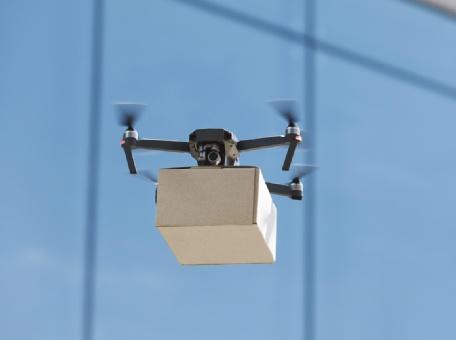
According to Retail Hub's vision, retail is an extremely fluid, ever-changing sector, the first to feel the effects of social change. We saw this clearly during Covid and we see it today with the spike in inflation.
Consequently, every time society evolves, the retail sector must evolve accordingly. That is why it needs the right tools to help it in its process of continuous analysis and adaptation.
As Massimo Volpe says: “Until recently, the limitation of online was said to be that it was unable to build a real shopping experience, but only delivered a cold purchase. Today, the paradigm has been reversed. Online is an innovative shopping experience that allows people to “browse” through different shops, get information, share, get excited and buy even while on the tram. Physical stores must get back to building an experience on a
par with those offered online, otherwise people will no longer count on it. And that's as bad as it can get, because it’s the shop where the real engagement takes place, where a salesperson can conduct effective cross-selling and thus raise the value of the average receipt, as well as build buyer loyalty”.
“Physical stores must regain their position of leadership in creating experiences that captivate customers”.
“Furthermore, in light of the profound changes in society brought about by the digital world, they can only do so by creating measurable experiences, the most obvious asset offered by e-commerce”.
“Not an easy task for physical retail: how can I measure how effective a shop window is? Yet, today it is unacceptable that even one element of the in-store shopping experience is not measurable. This is undoubtedly the most pressing need in retail”. The issue is also highlighted by Alberto Mattiello, who defines it as the “ability of retail to listen to its customers”. There are already some tools to do this: “Right now, artificial intelligence, sensors and algorithms are enhancing the ability of retail to “listen” to its customers. Consider a technology like that developed by Wonderflow, one of the winners of the start-up contest organised by Expo Riva Schuh & Gardabags. The application can analyse all the feedback left by consumers online. This amount of information is very valuable for retail, which can no longer allow itself to be blind, but must have all the necessary information in real time to evaluate investments and engage customers”.
Alberto adds another point: “Retail should also start thinking about possible changes to its business models, taking a cue from the great success of subscription-based services”.
27 Innovation
TRACEABILITY AND RETAIL
There is a lot of talk about traceability, especially in manufacturing. Is it a topic that also makes sense for retail? Very much so, according to Alberto Mattiello, who considers traceability “the only way to make products that are truly sustainable and allow consumers to compare them with each other”.
Furthermore, tracing the value chain has the benefit of making retail much more aware of the problems and complexities involved in production, allowing closer cooperation between the two sectors in order to prevent and not just react to possible opportunities or crises (shortage of raw materials, price hikes, new markets, etc.).
“Traceability is crucial to guaranteeing the authenticity of the luxury products we buy. It is key in the expanding world of second-hand (or pre-loved, as many like to call it): to be certain of a product’s origin, of the modifications that have been made to an object (a watch, an accessory, etc.) or of the hands it has passed through”, says Massimo.
THE MOST INTERESTING INNOVATIONS (ALSO FOR RETAIL)

“I love going to CES in Las Vegas”, says Massimo Volpe, “a big technology show that allows you to identify new technologies that are not dedicated to retail, but that could in some way be transferred to it. It was in Las Vegas this year that I tried Tesla's self-driving technology for the first time. Until you experience certain technologies first hand, you don't realise how much they could change the world. In this case, I’m thinking of the world of logistics and delivery”.
But for Massimo, the real innovation, that which could be a game changer for retail, is Airbnb: “They may not have realised it yet, but what they have is a commercial network with incredible potential”.
Alberto Mattiello shifts the focus onto the possibilities opened up by certain software: “New Text to Something technologies could change the way shoe and bag collections are designed, made and sold, and enable consumers to put forward their own requests. Artificial intelligence already enables us to write a text describing anything into a computer, which can then display an image of it. This technology has inconceivable implications in many fields, especially in creative environments. It could turn out to be a new way of developing footwear collections: all you would need to do is specify how you imagine the model, what materials you would make it out of, what shapes and colours, and then let the computer generate the collection, combining human and artificial creativity”.
EXPO RIVA SCHUH AND INNOVATION
The technological environment is changing so radically that no sector can afford to ignore it.
For Alberto Mattiello, “it is not strange that a trade show like Expo Riva Schuh & Gardabags should be concerned with stimulating its sector with these topics. It is strange if it does not”. After all, as the interface between distribution and production, a trade show is the perfect time to inspire both to change.
“Innovation Village Retail has the laudable task of exploring a different theme in depth every year and thus selecting the best start-ups, which already work with industry. This provides a very useful screening for companies that would otherwise have to deal with an excessively broad and confusing offer”.
For Massimo, through this initiative, Expo Riva Schuh & Gardabags could also play a leading role “in bringing companies together and incentivising experiments that a single entity could not sustain”.
There are many topics on the agenda and many complex innovative solutions that could revolutionise the retail world of today and tomorrow.
28 Innovation

Torna a ERS & Gardabags 2023 l’Innovation Village Retail
Dopo il grande successo delle passate edizioni, torna in fiera il villaggio espositivo dedicato ai progetti di innovazione nel retail selezionati dal Comitato Scientifico di Expo Riva Schuh & Gardabags.
AAnche a gennaio 2023 è presente il progetto realizzato dalla fiera di Riva del Garda, in collaborazione con Retail Hub e con il coordinamento scientifico di Alberto Mattiello - membro del Comitato Scientifico di Expo Riva Schuh & Gardabags -, dedicato alle startup e alle giovani imprese più innovative nel retail del settore pellettiero e calzaturiero. In uno spazio ‘dedicato’ sono, quindi, presentati i progetti di innovazione delle aziende selezionate tra quelle partecipanti al bando e dedicati in particolare alla tracciabilità: gestione, movimentazione dei prodotti; analisi dei dati di vendita per la strategia; creazione e gestione delle relazioni con i clienti B2B e B2C; comunicazione e trasparenza in relazione al prodotto e al suo processo produttivo. Per espositori e visitatori della fiera, l’Innovation Village Retail rappresenta un’occasione preziosa per trovare riunite in uno stesso spazio, e conoscere in anteprima, le innovazioni più rilevanti per il settore retail dell’accessorio, ma anche per le aziende emergenti coinvolte nel progetto questo si presenta come un importante trampolino di lancio sul mercato globale.
The Innovation Village Retail returns to ERS & Gardabags 2023
After the great success of past editions, the exhibition village dedicated to retail innovation projects selected by the Scientific Committee of Expo Riva Schuh & Gardabags is back at the fair.
Also in January 2023 the project realized by the Riva del Garda fair, in collaboration with Retail Hub and with the scientific coordination of Alberto Mattiello - member of the Scientific Committee of Expo Riva Schuh & Gardabags - is present, dedicated to the most innovative startups and young companies in retail in the leather and footwear sector. In a ‘dedicated’ space are, therefore, presented the innovation projects of the companies selected from those participating in the call for entries and dedicated in particular to traceability: management, handling of products; analysis of sales data for strategy; creation and management of B2B and B2C customer relations; communication and transparency in relation to the product and its production process.
For exhibitors and visitors to the fair, the Innovation Village Retail represents a valuable opportunity to find united in the same space, and get a preview of, the most relevant innovations for the accessory retail sector, but also for the emerging companies involved in the project this presents itself as an important springboard to the global market.
30
Innovation
ACBC
www.acbc.com
Acronimo di “Anything Can Be Changed”, è una startup innovativa italiana specializzata nella progettazione e produzione di sneakers e prodotti responsabili con materiali riciclati, bio-based e animal-free, tutti con certificazione di sostenibilità. Prima azienda calzaturiera italiana a essere ufficialmente Bcorp, una delle più autorevoli certificazioni di sostenibilità riconosciute a livello internazionale, ACBC offre anche servizi di consulenza.
Acronym for “Anything Can Be Changed,” is an Italian innovative startup specializing in the design and production of responsible sneakers and products with recycled, bio-based and animal-free materials, all with sustainability certification. The first Italian footwear company to be officially Bcorp, one of the most authoritative internationally recognized sustainability certifications, ACBC also offers consulting services.
Hive Technologies Italy
www.hive.app
Presente in 5 paesi, Hive è un’azienda di logistica full stack che fornisce servizi per i marchi DTC: il fulcro del business è l’adempimento nei propri magazzini, ma offre anche servizi di trasporto, imballaggio, espansione paneuropea e un’app per l’esperienza del cliente finale.
Present in 5 countries, Hive is a full stack logistics company providing services for DTC brands: the core of the business is fulfillment in its own warehouses, but also offers transportation services, packaging, pan-European expansion, and an app for the end customer experience.
31 Innovation
HopShop
www.hopshop.ai
HopShop è lo SHAZAM della moda e dell’abbigliamento. Un’ applicazione mobile che individua qualsiasi prodotto legato alla moda a partire dalle immagini e/o dai video caricati dagli utenti, e lo collega direttamente ai rivenditori da cui il consumatore può acquistarlo. Basta caricare una foto di qualsiasi articolo di abbigliamento attraverso l’app HopShop, scegliere tra una selezione di opzioni e acquistare!
iHeel Technology
www.iheel.it

iHeel è la prima tecnologia al mondo applicata alle calzature da donna in cui la struttura della scarpa e il tacco diventano elementi dinamici che si muovono su 3 altezze diverse. iHeel, infatti, permette di far scorrere la forma della scarpa e del tacco, consentendo alla calzatura di adattarsi a diverse altezze dello stesso tacco e, di conseguenza, in grado di adattarsi ai diversi impegni quotidiani dell’utente finale.
HopShop is the SHAZAM of fashion and apparel. A ‘mobile app that identifies any fashion-related product from images and/or videos uploaded by users, and links it directly to retailers from which consumers can purchase it. Simply upload a photo of any clothing item through the HopShop app, choose from a selection of options, and buy!
iHeel is the world’s first technology applied to women’s footwear in which the structure of the shoe and the heel become dynamic elements wich move over 3 different heights. iHeel, in fact, allows the shape of the shoe and the heel to slide, enabling the footwear to adapt to different heights of the same heel and, as a result, able to adapt to different daily engagements of the end user.
Innovation 32
Invrsion
www.invrsion.com
Invrsion è una società di realtà virtuale fondata in Italia nel 2015, con uffici a Milano e New York City, il cui obiettivo è di modernizzare e trasformare l’e-Commerce, sia B2B che B2C, sulla strada del Metaverso, grazie ad un software costruito per gestire simulazioni immersive di rendering in tempo reale, con un focus sul settore retail. Invrsion si distingue, in particolare, per il livello unico di realismo e specializzazione che è valso all’azienda la nomina Innovatori IDC 2021.
Invrsion is a virtual reality company founded in Italy in 2015, with offices in Milan and New York City, whose goal is to modernize and transform e-Commerce, both B2B and B2C, on the road to the Metaverse, thanks to software built to handle immersive simulations of real-time rendering, with a focus on the retail sector. Invrsion stands out, in particular, for its unique level of realism and specialization which earned the company the IDC 2021 Innovators designation.
Up2You
www.u2y.io

Startup B Corp e società Benefit, Up2You lavora ogni giorno per fornire ad aziende e persone gli strumenti per ridurre il proprio impatto ambientale e ad azzerare le emissioni di CO2. E’ l’unica azienda in Europa che, oltre a essere autorizzata a gestire Crediti di Carbonio certificati VERRA e Gold Standard, lo fa utilizzando la Blockchain. Supporta progetti sostenibili con impatto sociale e ambientale, capaci di catturare CO2, preservare foreste, tutelare ecosistemi, e sviluppare tecnologie sostenibili.
Startup B Corp and Benefit company, Up2You works every day to provide companies and people with the tools to reduce their environmental impact and to zero CO2 emissions. It is the only company in Europe that, in addition to being authorized to manage VERRA and Gold Standard certified Carbon Credits, does so using the Blockchain. It supports sustainable projects with social and environmental impact, able to capture CO2, preserve forests, protect ecosystems, and develop sustainable technologies.
33 Innovation
WonderStore
www.wonderstore.ai
WonderStore si basa sulle più recenti tecnologie IoT, Computer Vision, AI e storytelling analytics per profilare, contare, tracciare e analizzare i clienti. Tutti i dati raccolti sono rigorosamente anonimi e conformi al GDPR. I clienti sono profilati con dati su sesso, età, emozioni, presenza di barba, occhiali, postura della testa, tempo di permanenza, tasso di conversione, flussi di visitatori e, nelle prossime release, quali clienti navigano, come navigano, quali vestiti indossano e molte altre caratteristiche determinate dall’analisi del volto e dalla tecnologia di visione artificiale. L’azienda sta inoltre mettendo a punto nuovi modelli di computer vision per aiutare le aziende ad ottimizzare la merce nei magazzini e ridurre gli sprechi.
WonderStore relies on the latest IoT, Computer Vision, AI, and storytelling analytics to profile, count, track, and analyze customers. All data collected is strictly anonymous and GDPR compliant. Customers are profiled with data on gender, age, emotions, presence of beards, glasses, head posture, dwell time, conversion rate, visitor flows and, in upcoming releases, which customers browse, how they browse, what clothes they wear and many other characteristics determined by facial analysis and computer vision technology. The company is also developing new computer vision models to help companies optimize goods in warehouses and reduce waste.
Infinity ID
www.infinity-id.com
InfinityID firma l’innovazione nel settore dell’identificazione automatica, progettando soluzioni 4.0 e sistemi RFID tecnologicamente avanzati e con un’originale design Made in Italy. Le soluzioni proposte consentono di ottimizzare la gestione aziendale, migliorando l’organizzazione e l’operatività quotidiana e velocizzando i processi interni con un notevole risparmio di tempo e risorse. Il SW InfinityID, “Logic”, permette inoltre di raccogliere dati in tempo reale, offrendo al cliente un importante strumento in termini di big data analisys e di identificazione dei KPI di processo/produzione. Grazie all’utilizzo della tecnologia RFID, è possibile avere una tracciabilità completa della catena di fornitura, attraverso processi certificati che garantiscono la sostenibilità della produzione.
InfinityID signs innovation in the automatic identification sector, designing technologically advanced 4.0 solutions and RFID systems with original Made in Italy design. The proposed solutions optimize business management, improving organization and daily operations and speeding up lining processes with significant savings in time and resources. The InfinityID SW, “Logic,” also allows real-time data collection, offering the customer an important tool in terms of big data analyisys and identification of process/production KPIs. Thanks to the use of RFID technology, it is possible to have complete traceability of the supply chain, through certified processes that ensure the sustainability of production.

Innovation 34
INTERNATIONAL FAIRS GUIDE 2023

Tutto il mondo delle fiere a tema Calzature, Pelletteria e Sicurezza.
The world of footwear, leather goods and safety fairs.
Un fantastico aiuto per aziende e professionisti che vogliono orientarsi nel mondo delle fiere B2B riguardo calzature, pelletteria e sicurezza.
A great help for companies and professionals who want to orient themselves in the world of b2b fairs of footwear, leather goods and safety.
VISITA IL SITO
VISIT THE WEBSITE edizioniaf.com/fairs

La visione di mercato e i nuovi progetti del Gruppo Deichmann

I cambiamenti del mercato europeo, i piani di espansione a breve termine, il commercio online, le nuove proposte per l’inverno 2024: ne parliamo con Salvo RomanoCEO in Italia di Deichmann, la catena di negozi di scarpe più grande d'Europa, tra i buyer protagonisti di ERS & Gardabags.
A“A causa della pandemia, ma anche per le conseguenze della guerra in Ucraina, la domanda di calzature si è sicuramente modificata. Quando le persone lavorano da casa in smart working, non hanno un’intensa vita sociale, rinunciano alle vacanze e anche la moda passa in secondo piano. Per noi era ed è importante capire cosa cercano i clienti in questa situazione ‘estrema’”, spiega Salvo Romano, CEO in Italia di Deichmann, la catena di negozi di scarpe più grande d'Europa.
Cosa hanno cercato e cosa cercano, quindi?
La domanda di pantofole è comprensibilmente aumentata durante il periodo della pandemia, e siamo stati capaci di reagire rapidamente a questa nuova esigenza del consumatore. Parlando, poi, del mercato delle calzature per bambini, le richieste sono fortemente influenzate dalla rapida crescita dei più piccoli, così come vanno considerate le esigenze legate alle condizioni atmosferiche, che sono sempre un problema, e le offerte vantaggiose sono naturalmente ben accolte dai clienti. Inoltre, tutti sappiamo che il retail no food è stato duramente colpito dalla pandemia e molti negozi sono stati costretti a cessare l'attività. Attualmente il mercato europeo delle calzature sta subendo grandi cambiamenti. Nonostante tutto, però, noi di DEICHMANN guardiamo al futuro con fiducia: i nostri clienti hanno particolarmente gradito, durante la pandemia e anche in seguito, la buona qualità dei nostri prodotti e i prezzi ragionevoli. Alla luce delle attuali sfide che tutti dobbiamo affrontare, è importante per noi, come azienda, concentrarci su quanto siamo forti, su ciò che possiamo fare e su ciò che abbiamo già imparato con successo, investendo sulla capacità di reazione al cambiamento e cercando nuove opportunità di sviluppo. Ricordiamoci che le scarpe sono sempre necessarie, sia come accessorio di moda, che come bene di prima necessità.
Quali sono i vostri piani di espansione in Italia?
L'Italia ha un significato molto speciale nel nostro Gruppo e nella nostra Casa Madre tedesca, per due ragioni. La prima è di carattere storico: il Dr. Heinz-Horst Deichmann, che nel dopoguerra ha sviluppato l'azienda partendo da un unico negozio, già negli anni '50 si recava in Italia per acquistare scarpe e conosceva bene il Paese
36 Market
Salvo Romano - CEO in Italy of Deichmann
e il suo saper-fare. Il secondo motivo è che l'Italia è senza dubbio la madrepatria del buon gusto, e all’Italia sono associati i concetti di moda, eleganza e stile di vita. Anche per questi motivi, all'inizio dell'anno DEICHMANN ha dato il via al ‘Progetto Italia 2.0’, un ambizioso piano di espansione con l'obiettivo di aumentare l'immagine, la notorietà del marchio e la presenza nel Paese. Il concept 2.0 dei negozi è totalmente nuovo: ad esempio, sono presenti nuovi colori per ogni reparto uomo, donna e bambino, rispettivamente grigio, rosa aragosta e lime, colori tenui dall’impatto piacevole ed elegante. Sono stati introdotti nuovi tipi di mobili modulari per la presentazione di alcuni prodotti (donna e bambino) più bassi rispetto allo standard, e il "total white" per dare ancora più risalto alle scarpe. Sempre nel reparto donna, è stata inserita una parete espositiva per dare maggior risalto alle calzature di alcuni marchi di punta. Un'importante novità è anche la posizione della cassa, che non si trova più all'ingresso ma al centro, come se tutto ruotasse intorno a essa. Dall'inizio dell'anno, sono stati aperti 23 nuovi negozi e 10 sono stati completamente rinnovati. Entro il 2023 sono previste indicativamente altre 30 aperture. Dall'inizio dell'anno sono stati creati più di 400 posti di lavoro e abbiamo investito 15 milioni di euro, con la previsione di investirne entro il 2023 altri 24 milioni. Grazie al feedback positivo dei clienti e al fatturato in crescita, continuiamo ad incrementare il numero dei nostri negozi in Italia, che attualmente sono 99, distribuiti da nord a sud, cui si affianca un pluripremiato negozio online, dove è possibile acquistare un vasto assortimento di scarpe di qualità a prezzi accessibili per tutta la famiglia.
Quale tipo di calzatura è oggi più richiesto dal consumatore?
Dopo il periodo della pandemia, le donne sono tornate alla ricerca di modelli più eleganti rispetto al passato, come décolleté, stivaletti e stivali al ginocchio. L’uomo si muove sostanzialmente tra due mondi, l’elegante e formale, e le sneakers. Per i più piccoli, invece, la richiesta è di scarpe sportive e casual, con un particolare focus sulle sneaker per il maschietto e gli stivaletti con dettagli in glitter o metallici per la femminuccia. In generale, il più importante aspetto nel mercato della calzatura è il rapporto qualità/prezzo, anche a causa della diminuzione del potere d’acquisto. Il consumatore cerca quindi la possibilità di scegliere fra tanti modelli (dal basico al prodotto moda) di buona qualità, ma a basso prezzo.
Quanto pesa nel vostro business la vendita online rispetto a quella offline?
Abbiamo aperto i nostri primi negozi in Italia nel 2008 e da allora siamo cresciuti costantemente. Disporre di negozi attraenti e moderni, con un servizio personalizzato, resta la nostra priorità, ma oggi siamo un rivenditore omnichannel, che combina il meglio delle vendite in negozio, con il meglio dell’offerta online su deichmann.com. Il nostro obiettivo è rendere lo shopping il più comodo e facile possibile per i nostri clienti, 24 ore su 24, 7 giorni su 7, attraverso qualsiasi canale.
Per questo offriamo servizi che combinano lo shopping in negozio con l'acquisto online, come ad esempio lo "Ship to Home", che consente ai clienti che non trovano la taglia o il colore del loro modello di scarpe preferito in negozio, di ordinarlo e riceverlo comodamente a casa senza costi di spedizione. Per ottimizzare ulteriormente il percorso del cliente, all'inizio di settembre è stata lanciata la nuova App DEICHMANN Plus per dispositivi Android e sistemi iOS, con un'interfaccia semplice e intuitiva. Grazie a DEICHMANN Plus è possibile navigare nello shop online, visualizzare l'elenco dei punti vendita in Italia, tenere traccia dei propri acquisti e raccogliere punti per sconti e promozioni.
Come ha inciso sulle vostre strategie l’aumento di tutte le voci di costo?
Come tutti i retailer, stiamo affrontando un significativo aumento dei costi a causa dell'incremento dei prezzi delle materie prime e dell'energia, degli elevati costi logistici, soprattutto in Asia, ma anche della scarsità di risorse. Tuttavia, la nostra priorità resta quella di offrire ai nostri clienti il miglior rapporto qualità-prezzo del mercato. Per questo motivo non trasferiremo gli aumenti dei costi sui nostri clienti in modo lineare e sull'intera collezione, ma cerchiamo di compensare gli aumenti, per quanto possibile, attraverso le quantità e l'ulteriore ottimizzazione dei processi e della logistica. Tuttavia, ci saranno moderati aggiustamenti per alcune collezioni e singoli prodotti. Ma continueremo ad offrire un’ampia e completa proposta di collezioni, soprattutto nelle fasce di prezzo più basse.
Quali sono i paesi fornitori che guardate con maggiore interesse?
Lavoriamo con fornitori selezionati in 40 Paesi del mondo, in grado di soddisfare i nostri requisiti di qualità e, allo stesso tempo, di produrre a prezzi convenienti e
37 Market
nel rispetto degli standard sociali del nostro Codice di Condotta. La maggior parte delle nostre scarpe proviene dall'Asia, come consuetudine nel settore della moda: ci riforniamo per circa l'80% da Cina e Vietnam, proprio come i nostri concorrenti. I consumatori si aspettano giustamente che i prodotti che acquistano siano fabbricati in condizioni sostenibili e siano di buona qualità. Noi possiamo dire di conoscere bene i nostri fornitori grazie a rapporti di lunga data e, quando assegniamo i contratti, non consideriamo solo gli standard qualitativi, ma anche quelli sociali dei nostri fornitori e ci impegniamo a garantire condizioni di lavoro adeguate. Inoltre, abbiamo un Codice di Condotta che è parte vincolante dei contratti di fornitura. I produttori vengono regolarmente controllati da Istituti indipendenti e anche i nostri dipendenti visitano e ispezionano regolarmente le fabbriche.
Quale ruolo svolgono gli appuntamenti fieristici, e in particolare Expo Riva Schuh, per il vostro business?
Le fiere svolgono un ruolo molto importante per il nostro business. In ogni edizione incontriamo i nostri fornitori abituali, ma cerchiamo anche nuovi partners al fine di sviluppare nuove relazioni commerciali, così da migliorare la proposta di scarpe e borse presente nei nostri negozi.
Quali sono i trend moda della prossima stagione invernale su cui vi focalizzerete?
Per la prossima stagione, nella nostra collezione italiana, il trend dominante è l’elegante per l’uomo e la donna, ma a prezzi contenuti, mentre per i bambini il focus sono le scarpe fashion, ma confortevoli.
Oggi non si può non parlare di sostenibilità: come vi state muovendo in quest’ambito?
Per noi la sostenibilità è tradizionalmente una priorità e i prodotti sostenibili rivestono un ruolo sempre più importante. Si tratta sia di articoli i cui componenti soddisfano i criteri di sostenibilità, sia di processi produttivi che influenzano positivamente l'impronta ecologica. Nei nostri prodotti, ad esempio, vengono utilizzati e pelli, privi di sostanze chimiche indesiderate, o adesivi privi di solventi. Per gli imballaggi, ci affidiamo a materie prime riciclate. Offriamo anche scarpe, borse e sneakers realizzate in parte con materiali riciclati, come le bottiglie in PET. Laboratori indipendenti controllano e certificano l'uso e l'origine dei materiali riciclati. Abbiamo constatato che questi aspetti sono sempre più apprezzati dai clienti.
Deichmann Group's market vision and new projects

Changes in the European market, short-term expansion plans, online trade, and new proposals for winter 2024: we talk about it with Salvo Romano - CEO in Italy of Deichmann, Europe's largest chain of shoe stores, among the leading buyers at ERS & Gardabags.
"Because of the pandemic, but also because of the consequences of the war in Ukraine, the demand for footwear has definitely changed. When people work from home in smart work, they don't have a busy social life, they give up vacations, and even fashion takes a back seat. It was and is important for us to understand what customers are looking for in this 'extreme' situation," says Salvo Romano, CEO in Italy of Deichmann, Europe's largest shoe store chain.
38 Market
What did they look for and what are they looking for, then?
The demand for slippers understandably increased during the pandemic period, and we were able to react quickly to this new consumer need. Speaking, then, of the children's footwear market, demands are strongly influenced by the rapid growth of toddlers, as well as weather-related needs, which are always an issue, must be considered, and favorable offers are naturally well received by customers. In addition, we all know that nonfood retail has been hard hit by the pandemic, and many stores have been forced out of business. Currently, the European footwear market is undergoing great changes. In spite of everything, however, we at DEICHMANN look to the future with confidence: our customers particularly liked, during the pandemic and also afterwards, the good quality of our products and reasonable prices. In light of the current challenges we all face, it is important for us as a company to focus on how strong we are, what we can do and what we have already learned successfully, investing in responsiveness to change and seeking new opportunities for development. Let's remember that shoes are always necessary, both as a fashion accessory and as a basic commodity.
What are your expansion plans in Italy?
Italy has a very special meaning in our Group and in our German parent company, for two reasons. The first is historical: Dr. Heinz-Horst Deichmann, who developed the company after the war from a single store, was already traveling to Italy in the 1950s to buy shoes and knew the country and its know-how well. The second reason is that Italy is undoubtedly the motherland of good taste, and Italy is associated with the concepts of fashion, elegance and lifestyle. Also for these reasons, at the beginning of the year DEICHMANN kicked off the 'Italy 2.0 Project,' an ambitious expansion plan with the aim of increasing image, brand awareness and presence in the country. The 2.0 concept of the stores is totally new: for example, there are new colors for each of the men's, women's and children's departments, respectively gray, lobster pink and lime, soft colors with a pleasant and elegant impact. New types of modular furniture have been introduced for the presentation of some products (women's and children's) lower than the standard, and "total white" has been introduced to give even more prominence to shoes. Also in the
women's department, a display wall has been included to give greater prominence to footwear from some top brands. An important change is also the location of the cash desk, which is no longer located at the entrance but in the center, as if everything revolves around it. Since the beginning of the year, 23 new stores have been opened and 10 have been completely renovated. By 2023, approximately 30 more openings are planned. Since the beginning of the year, more than 400 jobs have been created and we have invested 15 million euros, with plans to invest another 24 million by 2023. Thanks to positive customer feedback and growing sales, we continue to increase the number of our stores in Italy, which currently number 99, spread from north to south, complemented by an award-winning online store, where you can buy a wide assortment of quality shoes at affordable prices for the whole family.
What type of footwear is most in demand by consumers today?
After the pandemic period, women are back in search of more elegant styles than in the past, such as pumps, ankle boots, and knee-high boots. Men are basically moving between two worlds, the elegant and formal, and sneakers. For little ones, on the other hand, the demand is for sporty and casual shoes, with a particular focus on sneakers for the little boy and ankle boots with glitter or metallic details for the little girl. In general, the most important aspect in the footwear market is value for money, partly due to the decrease in purchasing power. Therefore, the consumer is looking for the possibility to choo-
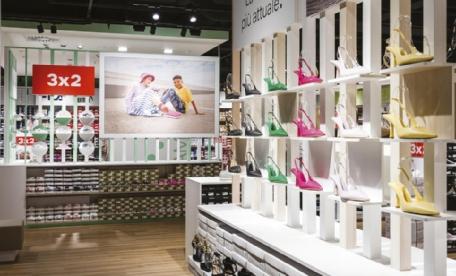
39 Market
se from many models (from basic to fashion product) of good quality, but at a low price.
How much does online versus offline sales weigh in your business?
We opened our first stores in Italy in 2008 and have been growing steadily ever since. Having attractive, modern stores with personalized service remains our priority, but today we are an omnichannel retailer, combining the best of in-store sales, with the best of online offerings on deichmann.com. Our goal is to make shopping as convenient and easy as possible for our customers, 24/7, through any channel.
That's why we offer services that combine in-store shopping with online shopping, such as "Ship to Home," which allows customers who can't find the size or color of their favorite shoe model in store to order it and receive it conveniently at home without shipping costs. To further optimize the customer journey, the new DEICHMANN Plus App for Android devices and iOS systems was launched in early September, with a simple and intuitive interface. Thanks to DEICHMANN Plus, it is possible to browse the online shop, view the list of stores in Italy, keep track of one's purchases, and collect points for discounts and promotions.
How has the increase in all cost items affected your strategies?
Like all retailers, we are facing significant cost increases due to rising raw material and energy prices, high logistics costs, especially in Asia, and also resource scarcity. However, our priority remains to offer our customers the best value for money in the market. For this reason, we will not pass cost increases on to our customers in a linear manner and across the entire collection, but we try to offset the increases as far as possible through quantities and further optimization of processes and logistics. However, there will be moderate adjustments for some collections and individual products. But we will continue to offer a broad and comprehensive collection offering, especially in the lower price ranges.
Which supplier countries do you look at with the most interest?
We work with selected suppliers in 40 countries around the world who can meet our quality requirements while
producing at affordable prices and in compliance with the social standards of our Code of Conduct. Most of our shoes come from Asia, as is customary in the fashion industry: we source about 80 percent from China and Vietnam, just like our competitors. Consumers rightly expect that the products they buy are made under sustainable conditions and are of good quality. We can say that we know our suppliers well because of long-standing relationships, and when we award contracts, we consider not only the quality standards, but also the social standards of our suppliers, and we are committed to ensuring proper working conditions. In addition, we have a Code of Conduct that is a binding part of supply contracts. Manufacturers are regularly inspected by independent institutes, and our employees also regularly visit and inspect factories.
What role do trade fairs, and Expo Riva Schuh in particular, play for your business?
Trade fairs play a very important role for our business. In each edition we meet our regular suppliers, but we also look for new partners in order to develop new business relationships, so as to improve the proposal of shoes and bags in our stores.
What are the fashion trends for the coming winter season that you will focus on?
For next season, in our Italian collection, the dominant trend is elegant for men and women, but at affordable prices, while for children the focus is fashionable but comfortable shoes.
Today, you can't not talk about sustainability: how are you doing in this area?
Sustainability has traditionally been a priority for us, and sustainable products play an increasingly important role. These are both items whose components meet sustainability criteria and production processes that positively influence the ecological footprint. For example, hides and skins, free of unwanted chemicals, or solvent-free adhesives are used in our products. For packaging, we rely on recycled raw materials. We also offer shoes, bags and sneakers made partly from recycled materials, such as PET bottles. Independent laboratories check and certify the use and origin of recycled materials. We have found that these aspects are increasingly appreciated by customers.
40 Market
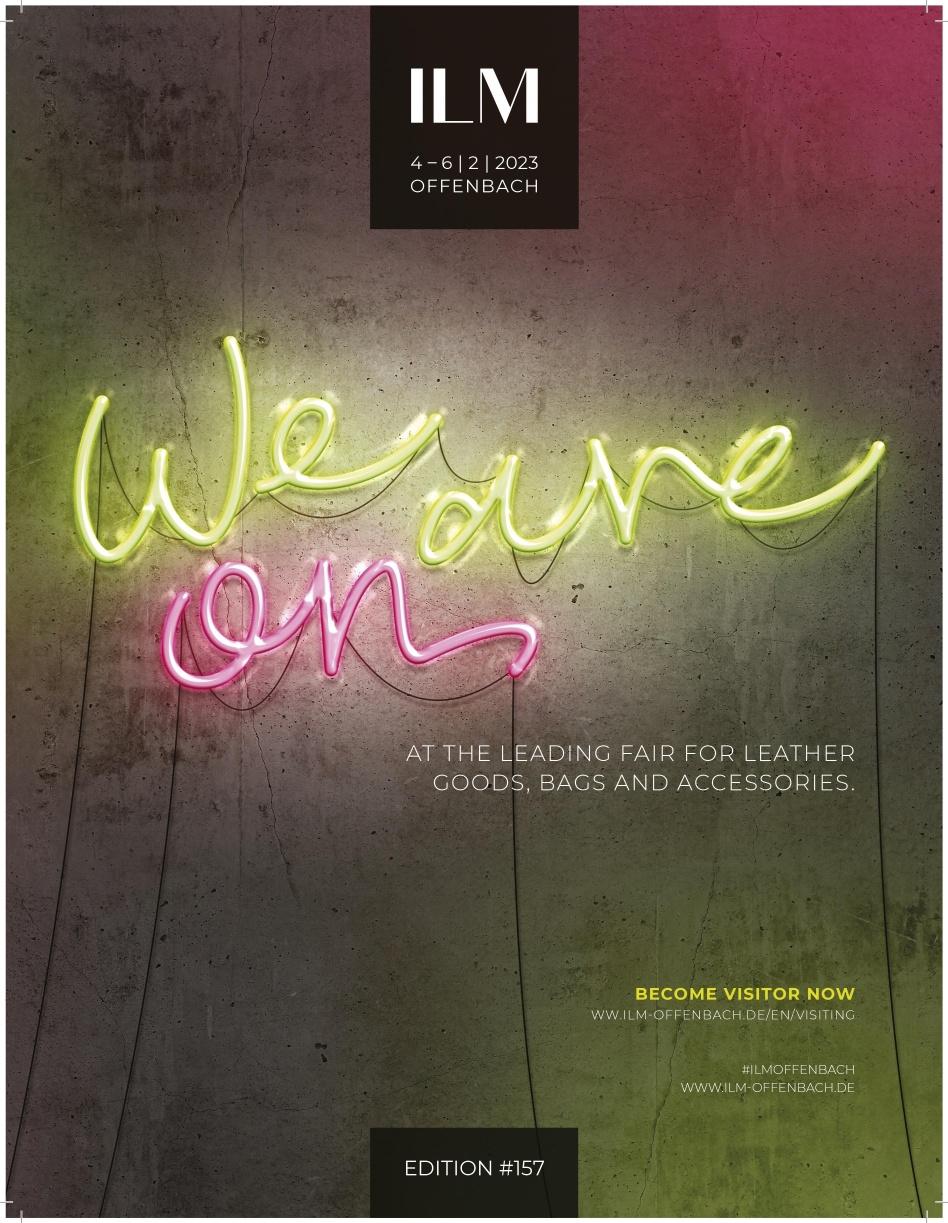
Quattro trend di consumo anticipano il futuro della moda e del lusso
Dopo le sfide degli ultimi anni, per la moda e il lusso è ora di guardare avanti. La nuova ricerca “CUBE: Fashion Takes Shape” di Vogue Business e Google individua le quattro tendenze che caratterizzeranno la crescita del settore nei prossimi cinque anni.
Per il settore retail, compreso quello della moda e del lusso, gli ultimi sono stati anni molto impegnativi, caratterizzati da una forte incertezza economica e da moltissimi cambiamenti. Ora, però, è arrivato il momento di guardare avanti, abbracciando con fiducia il futuro.
Alcune linee guida importanti su come affrontare al meglio il prossimo futuro arrivano dalla ricerca “CUBE: Fashion Takes Shape” presentata da Vogue Business e Google, che individua i quattro trend di consumo che caratterizzeranno la crescita del settore nei prossimi cinque anni.

Comunicare la personalità del brand
Da quanto emerso dalla ricerca, già oggi l’82% dei consumatori afferma di sentire il bisogno di esprimersi anche attraverso la moda e il lusso. Tendenza, questa, che richiede ai brand una maggior empatia, per ascoltare i bisogni degli acquirenti e riuscire a soddisfarli. Per stabilire connessioni solide, sarà necessario instaurare con le persone rapporti che vadano oltre l’estetica, basati su una profonda condivisione di etica e valori. Sarà fondamentale, per i brand, delineare una personalità riconoscibile, autentica e credibile.
Rispondere agli “ultramatum”
Con “ultramatum” si intende l’ultima chiamata all’azione per salvare il pianeta, che proviene direttamente dai consumatori verso i brand. Questa tendenza vede i consumatori sempre più attenti nell’effettuare acquisti sostenibili, nei confronti dell’ambiente ma anche degli animali, della società e delle persone. Lo confermano i dati del Vogue Business Index Spring, che attestano che il 76% dei consumatori italiani cerca informazioni sulla responsabilità sociale dei marchi che acquistano. I brand del fashion dovranno quindi essere in grado di inserirsi in questo dibattito internazionale con azioni concrete, per dimostrare il loro impegno verso la cura del pianeta.
42 Market
Rafforzare le connessioni tra più canali
Il 73% dei consumatori si definisce indifferente quando si tratta di scegliere su quali canali acquistare. Questo significa che in un mondo iper-connesso i confini tra fisico e online si fanno sempre più sottili e che, con il passare del tempo, le persone non percepiranno più differenze tra un mezzo e l’altro. Sempre più immersi in uno spazio ibrido tra reale e virtuale, i consumatori abbandoneranno i percorsi d’acquisto lineari per fare shopping in maniera fluida, sul canale che meglio soddisfa la comodità e la disponibilità di quel momento.
Abbracciare lo straordinario
Il 73% di chi acquista lusso considera tra i fattori decisivi per l’acquisto il fatto che i brand siano innovativi e sperimentino tecnologie fuori dall’ordinario. Un dato che fa riflettere e che mette in evidenza un altro aspetto che i brand di moda e del lusso non dovranno assolutamente trascurare nelle loro strategie future, ovvero la capacità di abbracciare un nuovo modo di comunicare, fuori dall’ordinario, in grado di stupire i consumatori. Sarà importante stabilire delle relazioni più autentiche con le comunità locali e i creator, per meglio andare incontro alle loro esigenze ma anche per scoprire nuove opportunità per innovare. Saranno loro, infatti, i veri anticipatori delle tendenze.

43 Market
After the challenges of the last few years, it is time for fashion and luxury to look ahead. The new research 'CUBE: Fashion Takes Shape' by Vogue Business and Google identifies the four trends that will mark the growth of the industry over the next five years.

For the retail industry, including the fashion and luxury sector, the last few years have been very challenging, due to economic uncertainty and a lot of change. Nevertheless, now it is time to look forward and embrace the future with confidence. Some important guidelines on how best to face the near future come from the research 'CUBE: Fashion Takes Shape' presented by Vogue Business and Google, which identifies the four consumer trends that will drive the growth of the sector over the next five years.
Create Characters
According to the research, 82% of consumers already feel the need to express themselves through fashion and luxury. This trend demands greater empathy from brands in order to listen to buyers' needs and succeed in satisfying them. To make strong connections, it will be necessary to establish relationships with people that go beyond aesthetics, based on a deep sharing of ethics and values. It will be crucial for brands to outline a recognisable, authentic and credible personality.
Unlock “Ultramatums”
'Ultramatum' means the ultimate call to action to save the planet, coming directly from consumers to brands. This trend sees consumers becoming more and more careful in making sustainable purchases, with respect to the environment but also to animals, society and people.
This is confirmed by data from the Vogue Business Index Spring, which shows that 76% of Italian consumers seek information on the social responsibility of the brands they buy. Fashion brands should therefore be able to enter this international debate with concrete actions to demonstrate their commitment to care for the planet.
Build Bridges
73% of consumers describe themselves as indifferent when it comes to choosing which channels to buy on. This means that in a hyper-connected world, the boundaries between physical and online are becoming increasingly blurred and that, over time, people will no longer perceive differences between one medium and another. Increasingly immersed in a hybrid space between real and virtual, consumers will abandon linear purchasing paths to shop fluidly, on the channel that best suits their convenience and availability at the time.
Embracing Extr(a)ordinary
73% of luxury buyers consider the fact that brands are innovative and experiment with out-of-the-ordinary technologies to be a decisive factor in their purchase. This is a thought-provoking statistic that highlights another aspect that fashion and luxury brands should definitely not neglect in their future strategies, namely the ability to embrace a new way of communicating, out of the ordinary, capable of surprising consumers. It will be important to establish more authentic relationships with local communities and creators, to better meet their needs but also to discover new opportunities to innovate. They will be the real trendsetters of the future.
44 Market
Fourconsumertrendsanticipate thefutureoffashionandluxury


Arsutoria School - Alumni 2022
Amazing design
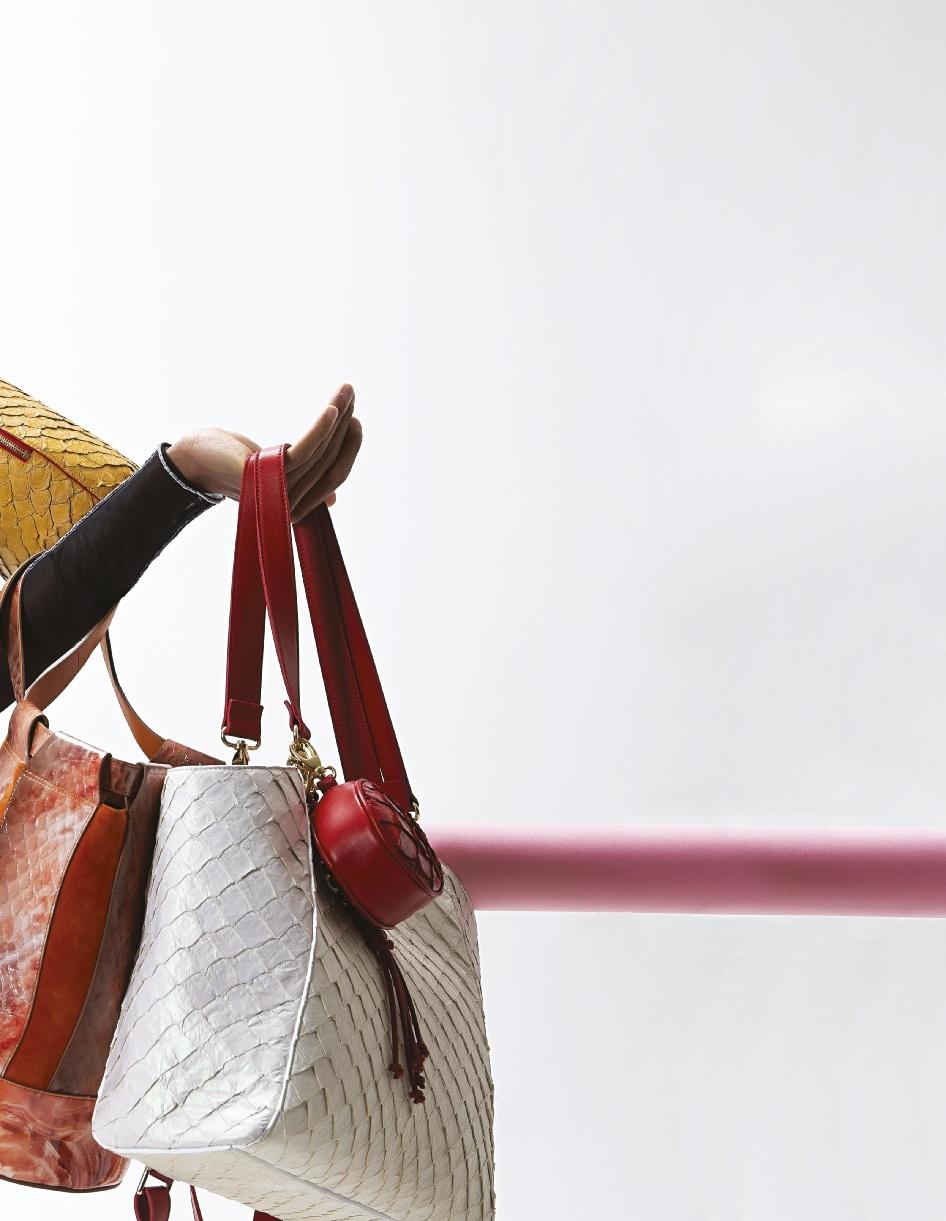
A AF Production

MASHA KROSHINSKAYA Arsutoria School - Alumni 2022

Arsutoria School - Alumni 2022
MASHA KROSHINSKAYA

LAURA GIANCOLA Arsutoria School - Alumni 2022
LAURA GIANCOLA Arsutoria School - Alumni 2022

 ALEXANDROS VASDEKIS Arsutoria School - Alumni 2022
ALEXANDROS VASDEKIS Arsutoria School - Alumni 2022

VASDEKIS Arsutoria School - Alumni 2022
ALEXANDROS
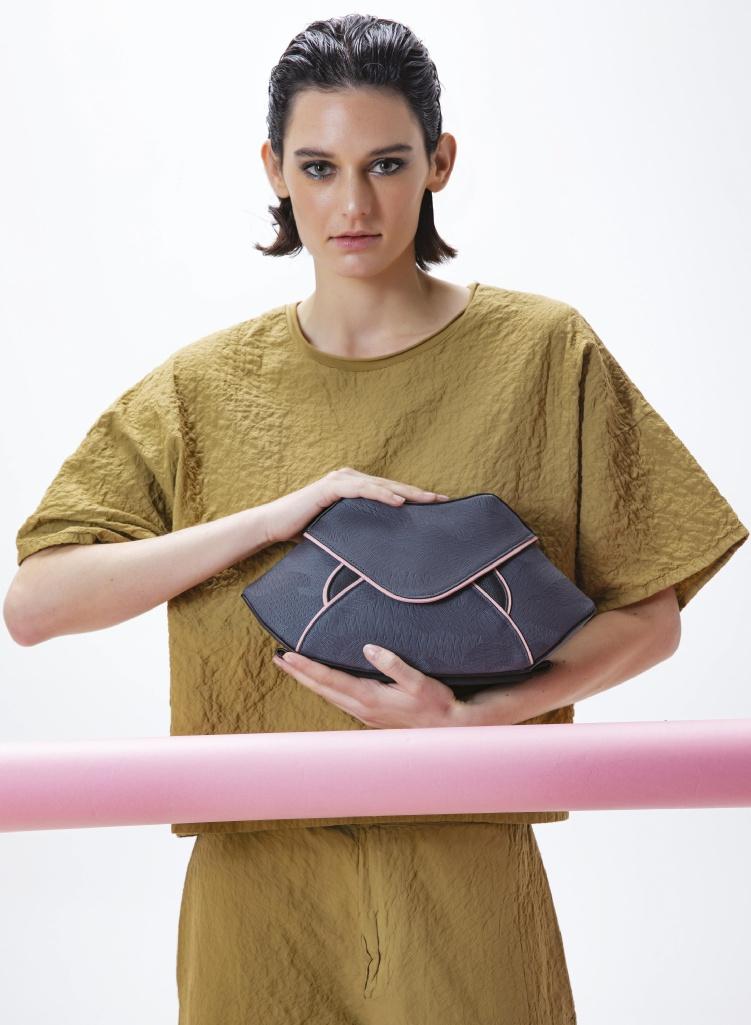 VINCENZO CARPENTIERI Arsutoria School - Alumni 2022
VINCENZO CARPENTIERI Arsutoria School - Alumni 2022
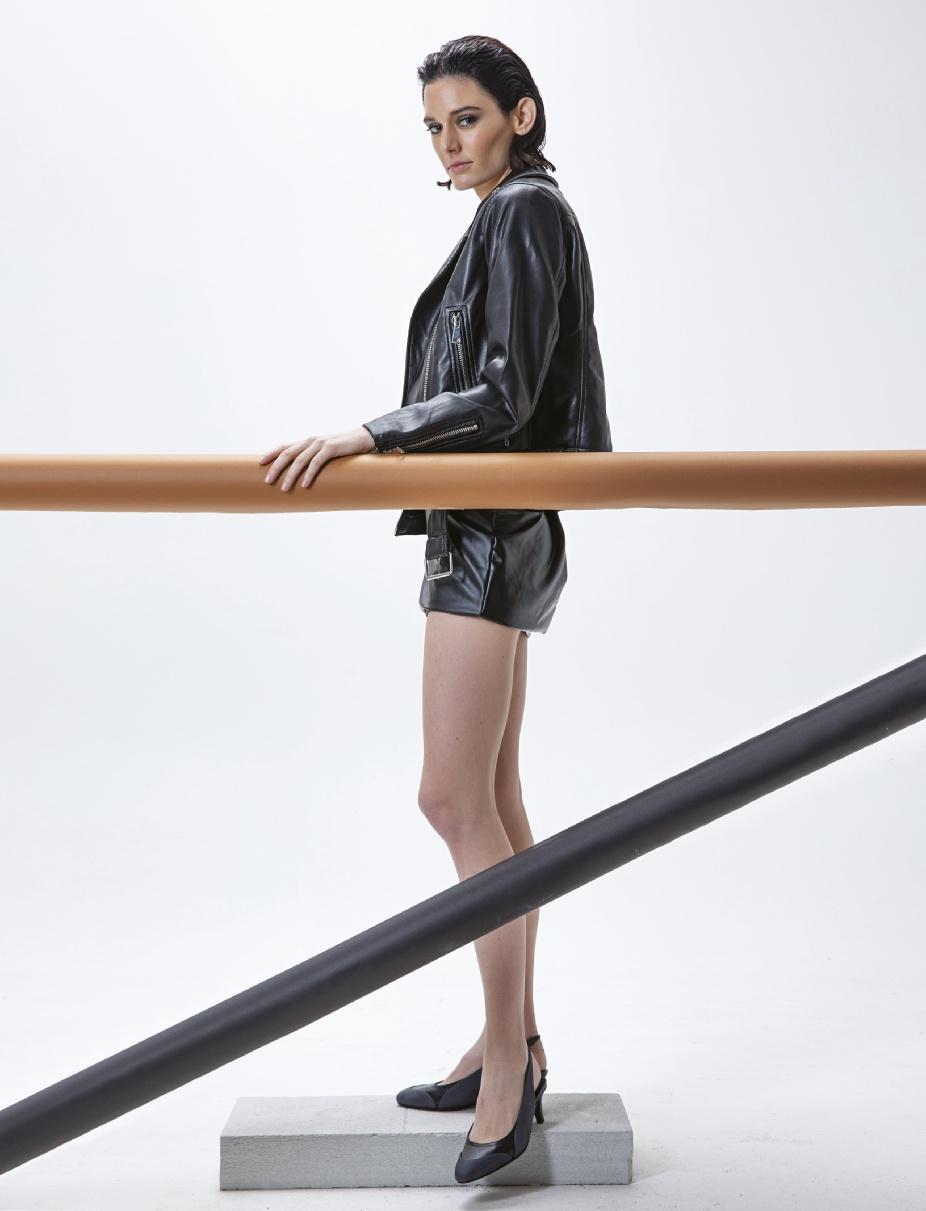
Arsutoria School - Alumni 2022
VINCENZO CARPENTIERI

KIANA Arsutoria School - Alumni 2022

KIANA Arsutoria School - Alumni 2022
 KARISMA NANAVATI Arsutoria School - Alumni 2022
KARISMA NANAVATI Arsutoria School - Alumni 2022
KARISMA NANAVATI Arsutoria School - Alumni 2022

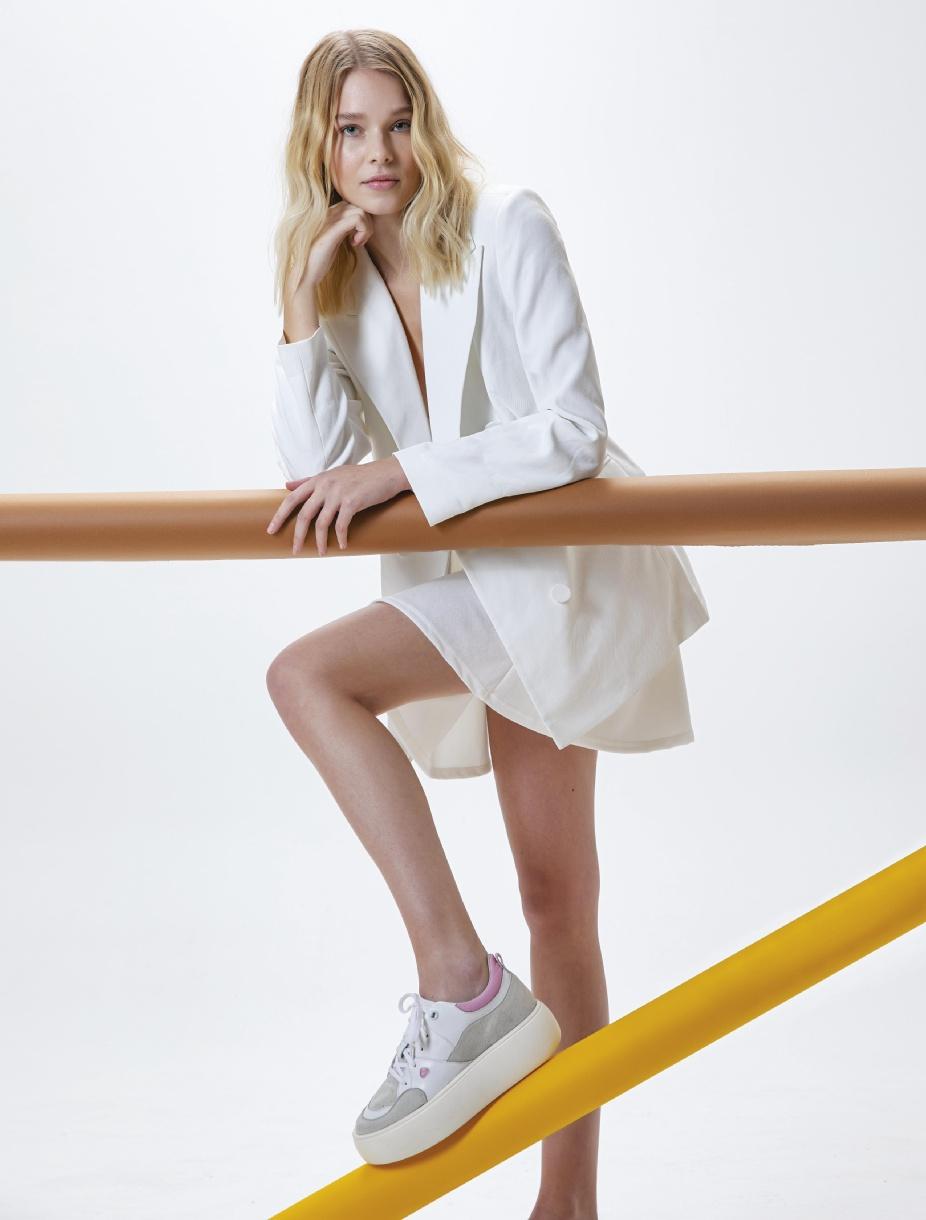
SONIA Arsutoria School - Alumni 2022

SONIA Arsutoria School - Alumni 2022

PIETRO Arsutoria School - Alumni 2022

JOSH Arsutoria School - Alumni 2022
 GISELE GERMANY Arsutoria School - Alumni 2022
GISELE GERMANY Arsutoria School - Alumni 2022

GERMANY Arsutoria School - Alumni 2022
GISELE

ANTONIO Arsutoria School - Alumni 2022
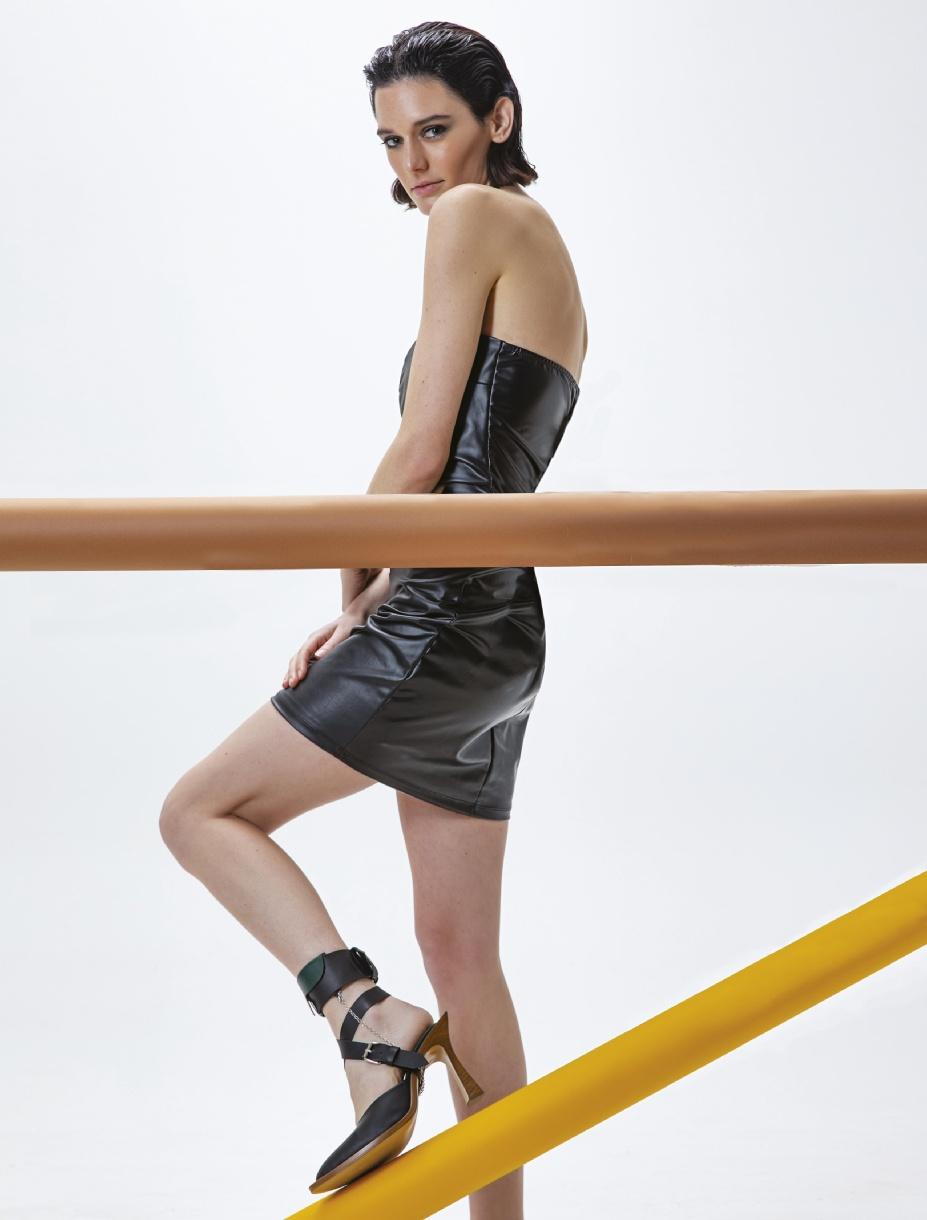
CHILI Arsutoria School - Alumni 2022

JESSICA Arsutoria School - Alumni 2022
 RICCARDO
Arsutoria School - Alumni 2022
RICCARDO
Arsutoria School - Alumni 2022

MADELEINE Arsutoria School - Alumni 2022
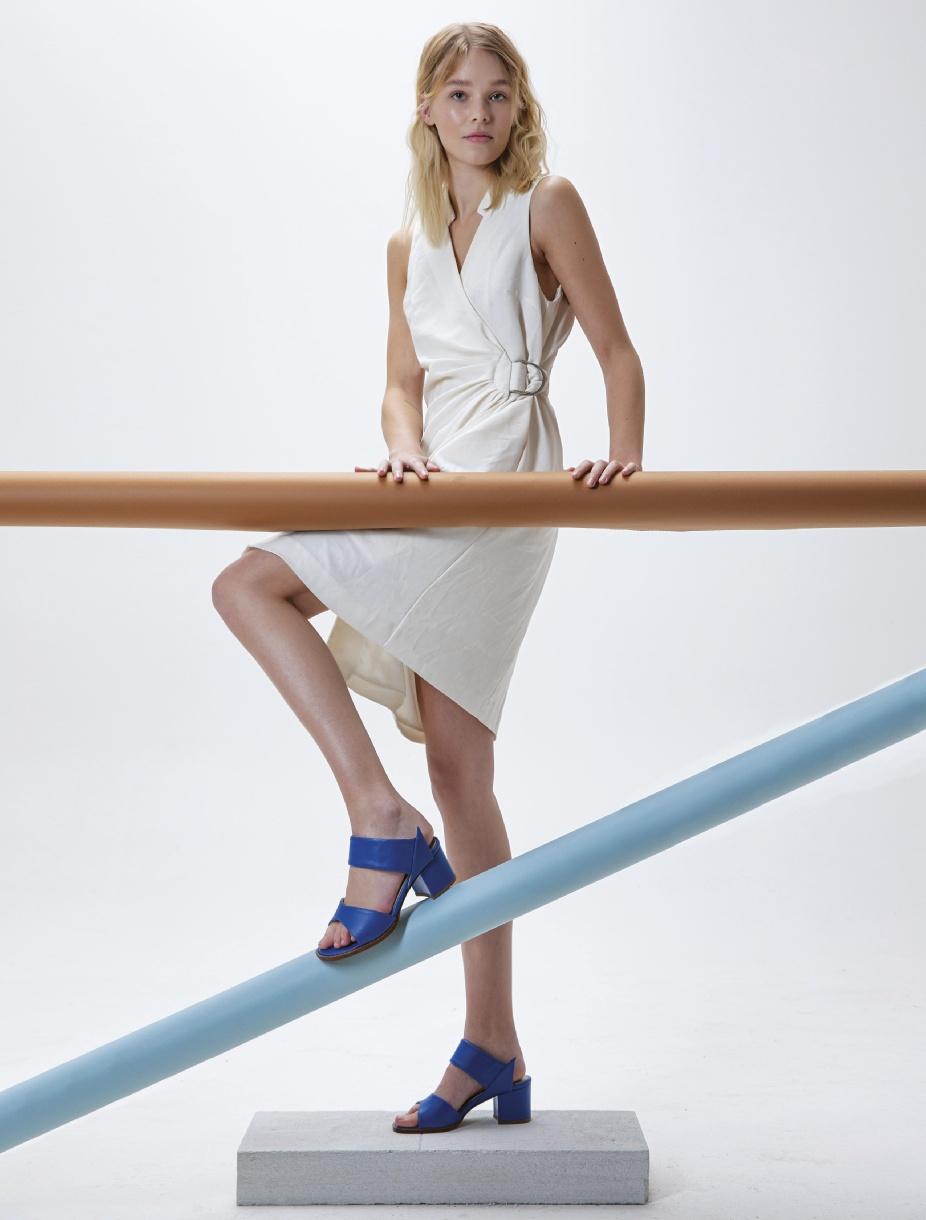
Arsutoria School - Alumni 2022
ROSARIA TORQUATI
TOMMY AMBIYO Arsutoria School - Alumni 2022

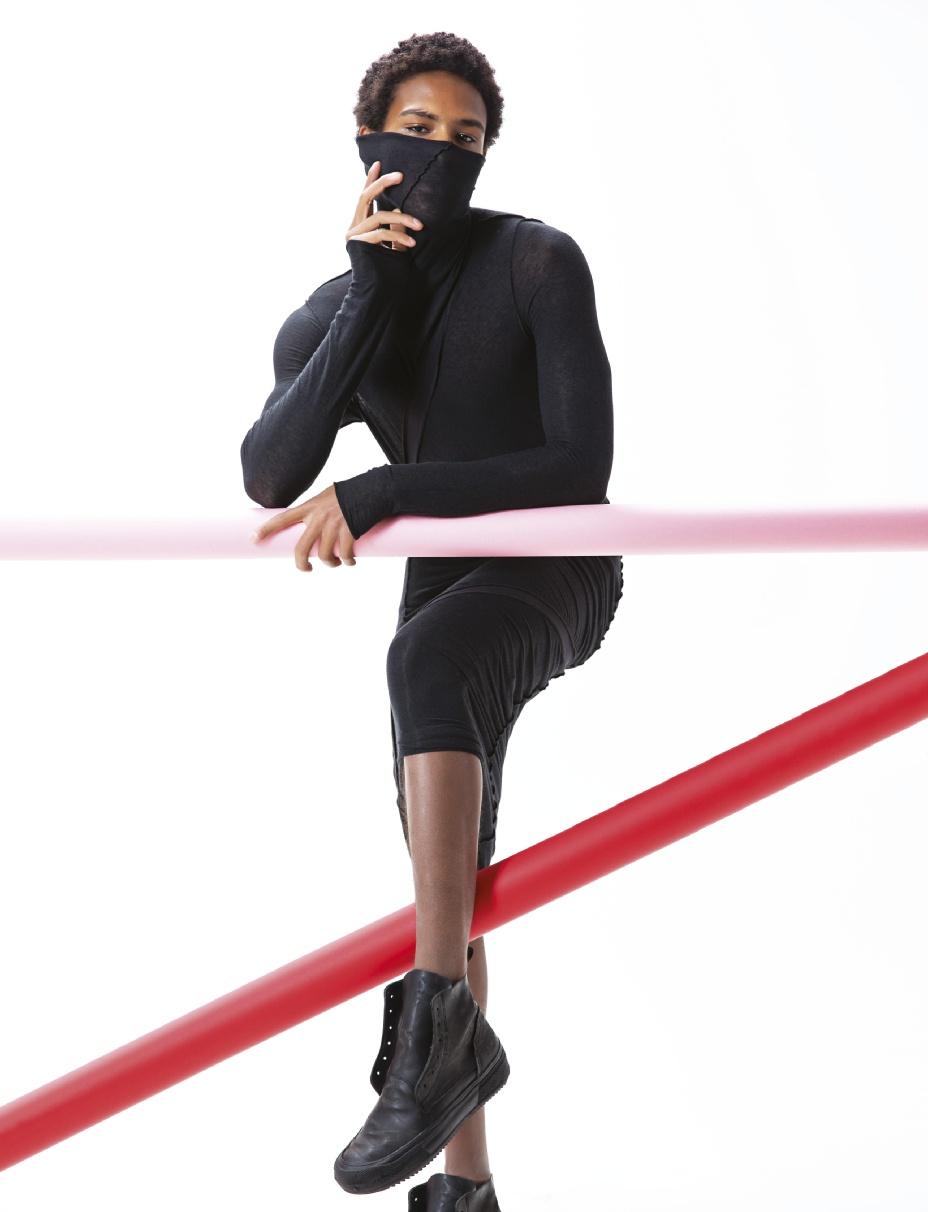
RICCARDO & ANTONIO Arsutoria School - Alumni 2022
Il calzaturiero nella ‘nuova Cina’
Tra lockdown, crisi dei consumi, delocalizzazioni e nuove prospettive di sviluppo, un profondo conoscitore del gigante asiatico come Gianpaolo Bruno di ICE/ITA ci racconta come sta cambiando quello che resta il leader mondiale del settore calzature/pelletteria e quali minacce e opportunità si profilano all’orizzonte.
Gianpaolo Bruno - Trade Commissioner - Beijing Office Coordinator di ICE/ITA Offices in Cina e Mongolia - ci racconta di un paese in profonda trasformazione, che sta progressivamente abbandonando il modello “fabbrica del mondo” a basso costo e a bassa tecnologia, per proporsi come concorrente aggressivo e competitivo anche nei mercati globali più avanzati. Ma anche un paese che sta perdendo il proprio ruolo di monopolio della produzione e dell’export mondiale di calzature a favore di altri paesi asiatici, a cominciare dal Vietnam.

Lockdown che creano malcontento, apparente crisi dei consumi, delocalizzazioni produttive, tensioni e tentativi di riavvicinamento con gli USA: è difficile cogliere lo “stato d’animo” della Cina in questo momento. Voi che idea vi siete fatti? Sicuramente esistono alcune sfide contingenti che il paese sta affrontando, a causa dell’evoluzione dell’attuale crisi pandemica e della sua complessa gestione, ma occorre considerare che si tratta di una situazione temporanea destinata ad essere presto superata. La Cina ha sempre dato prova di tenace resilienza rispetto agli shock asimmetrici di breve periodo e di saper calibrare le proprie risorse verso il raggiungimento dei propri obiettivi strategici. I fondamentali dell’economia del paese restano saldi e ritengo che ben presto il mercato ritornerà ad offrire un ampio spettro di opportunità per le imprese che sapranno coglierne il potenziale, attraverso una virtuosa impostazione delle proprie strategie di internazionalizzazione. Anzi, come recita un famoso motto confuciano, è proprio nei momenti di crisi che si individuano fonti di opportunità, magari riuscendo ad acquisire vantaggi tattici rispetto ai propri concorrenti.
Importare dalla Cina ed esportare verso la Cina: quali sono i pro e i contro in questo momento per entrambe le direzioni commerciali?
74 Market
Gianpaolo Bruno - Trade Commissioner - Beijing Office Coordinator ICE/IT
La Cina rappresenta uno dei principali motori del commercio internazionale e continuerà ad esercitare questa sua funzione, dato, da un lato, l’importantissimo ruolo svolto dalla propria offerta produttiva nell’ambito delle catene globali di approvvigionamento e, dall’altro lato, come conseguenza dell’enorme dimensione del proprio mercato interno, nonché le sue dinamiche di crescita potenziale. Tuttavia, è chiaro che per poter rispondere compiutamente alla domanda occorre valutare le condizioni specifiche di rischio-opportunità che caratterizzano la situazione di singole imprese, e di determinate filiere produttive. Per quanto concerne le importazioni dalla Cina, esistono infatti realtà economiche che dipendono intensamente dalle forniture cinesi, grazie alle quali risulta possibile ottenere sistematici vantaggi competitivi altrimenti non conseguibili. Alternativamente, in particolari settori potrebbero sussistere situazioni di eccessiva dipendenza dall’offerta cinese tali da comportare un sensibile aumento della percezione del rischio geo-politico, soprattutto in questa complessa fase di ridefinizione dei processi di globalizzazione.
Dal lato delle esportazioni verso la Cina, per alcune imprese il mercato cinese assume un’importanza strategica imprescindibile ed è quindi fondamentale continuare a presidiarlo e svilupparne le potenzialità, intensificando le azioni di internazionalizzazione commerciale. Per altre aziende, invece, la grande complessità del mercato cinese può rappresentare un ostacolo tale da influire negativamente nelle proprie valutazioni di convenienza economica. Di sicuro, la Cina attualmente rappresenta il mercato più grande al mondo per dimensione e il suo futuro sviluppo sarà destinato a catalizzare importanti opportunità di proiezione per una vasta serie di settori, pur nella necessità di dover affrontare rilevanti sfide competitive.
Per l’approccio al mercato cinese, alle aziende è sempre stato consigliato di affidarsi a partner locali. Vale ancora questa regola?
Anche in questo caso ritengo non si possa esprimere una valutazione in termini assoluti. Infatti, per alcune imprese, soprattutto piccole e medie, con un’organizzazione limitata e con la necessità di mantenere sotto controllo i propri costi di struttura, il partner locale rappresenta una scelta quasi obbligata. In questo caso, anzi, il partner locale assume un valore prezioso nel facilitare i processi di internazionalizzazione sul mercato, in quanto con la propria conoscenza delle dinamiche operative e con la propria esperienza è in grado di risolvere tutta una serie
di problematiche, soprattutto sotto il profilo dello sdoganamento e della libera circolazione delle merci provenienti dall’estero. Inoltre, per un’impresa straniera che si affaccia su su un mercato dalle dimensioni così rilevanti e di elevata complessità, il potersi affidare ad un partner locale consente di usufruire delle sue reti di vendita e delle capacità di marketing (cosiddetto “piggyback”), senza la necessità di doverne sostenere gli investimenti. È chiaro, tuttavia, che questo modello presenta dei limiti nel lungo periodo. Quando, infatti, la presenza sul mercato diventa più consolidata e si ha la necessità di presidiarlo in modo diretto per azionare autonomamente le leve del marketing mix, allora occorre superare la fase dell’utilizzo dell’intermediario locale, per affrontare una strategia di internazionalizzazione più matura ed articolata, attraverso formule di radicamento organizzativo ed operativo, valutando attentamente i trade-off rischio-opportunità’.
Mercato interno, logistica e delocalizzazione produttiva. Come si sta muovendo la Cina rispetto a queste tematiche cruciali per capire il futuro del Paese?
Nel 2020 la Cina ha lanciato una nuova strategia per riorientare i propri futuri processi di sviluppo economico, nota come “doppia circolazione”, che peraltro rappresenta un aspetto centrale del 14° Piano Quinquennale, il documento programmatico a fondamento delle attuali politiche economiche del paese, con orizzonte temporale di medio periodo (2021-2025). La doppia circolazione rappresenta lo sforzo finalizzato, da un lato, a riequilibrare la dipendenza del paese dalle esportazioni, riducendone la vulnerabilità rispetto alle pressioni geo-politiche esogene - elevandone allo stesso tempo la qualità – e, dall’altro lato, a rafforzare le catene di approvvigionamento domestiche ed a promuovere il ruolo dei consumi privati e dei servizi all'interno dell'economia del paese. Di conseguenza, nelle intenzioni delle autorità cinesi, il mercato interno e la domanda per consumi dovranno diventare un elemento centrale per la propulsione dell’attività economica, generando di conseguenza rilevanti opportunità per le imprese – anche straniere – che offrono beni di consumo di elevato livello qualitativo, tali da soddisfare consumatori sempre più esigenti e sofisticati. A corollario di queste dinamiche, il settore logistico cinese - già uno dei più avanzati al mondo - continuerà a costituire uno snodo centrale delle catene di approvvigionamento internazionali, grazie al ruolo preminente giocato dalla Cina nel commercio mondiale e nella divisione internazionale del lavoro, nonostante le problematiche affrontate nella
75 Market
fase più critica della pandemia. Caratterizzato da una recente ondata di fusioni ed acquisizioni, il settore logistico è stato anche oggetto di robusti investimenti in automazione e digitalizzazione, soprattutto nel campo dell’ecommerce, e si prevede continuerà nel prossimo futuro ad assorbire innovazione tecnologica ed a guadagnare ulteriormente efficienza e flessibilità, eliminando i colli di bottiglia esistenti e migliorando sistematicamente i livelli di servizio ai clienti. Per quanto riguarda il tema della delocalizzazione produttiva, occorre considerare i profondi mutamenti nella politica industriale cinese avvenuti negli ultimi anni. Il nuovo paradigma che si è venuto ad affermare, formalizzato nel documento strategico Made in China 2025, lanciato nel 2015 ma incorporato nell’attuale 14° Piano Quinquennale (2021-2025), è basato sulla profonda trasformazione e riqualificazione della manifattura tradizionale e sul rapido sviluppo dei settori ad elevata intensità di innovazione tecnologica, con l’obiettivo dichiarato di agganciare i segmenti a maggior valore aggiunto delle catene globali del valore, guadagnando competitività e leadership internazionale e riducendo la propria dipendenza dall’estero. Queste dinamiche, tuttora in atto, negli ultimi anni sono state ulteriormente accelerate dal rapido incremento del costo del lavoro, che ha determinato problemi di competitività di molte filiere industriali ad elevata intensità di lavoro e con forte vocazione all’esportazione, a cominciare dalla filiera del tessile-abbigliamento-calzature, che si è trovata a dover valutare l’opportunità di rilocalizzare la propria produzione trasferendola in paesi a più basso costo della manodopera nel sud-est asiatico, come ad esempio Indonesia, Vietnam e Cambogia. In sintesi, il modello Cina “fabbrica del mondo” di prodotti a basso costo e con basso contenuto tecnologico sta rapidamente scomparendo, per dar luogo ad un sistema industriale moderno e avanzato, a sempre più elevata intensità tecnologica. Come tale, soprattutto in alcune filiere, la Cina sta diventando e diventerà progressivamente un concorrente molto aggressivo delle imprese dei paesi avanzati che dovranno necessariamente intraprendere opportune strategie di difesa, al fine di salvaguardare le proprie quote di mercato.
Da uno studio condotto per Expo Riva Schuh & Gardabags e dedicato al settore della calzatura e della pelletteria sono emerse alcune linee generali. Ce le vuole descrivere?
Lo studio ha posto in rilievo come la Cina attualmente produca più della metà delle calzature al mondo, preci-
samente il 54,1%, per un volume complessivo di poco più di 12 miliardi di paia nel 2021, e ne esporti una quota pari al 60,4% del totale mondiale in volume (7,9 miliardi di paia) ed un controvalore di 42,7 miliardi di dollari (corrispondente ad una quota del 29,5% sul totale). Tuttavia, la quota cinese sulla produzione mondiale negli ultimi anni tende a diminuire progressivamente a favore di altri paesi asiatici, come India, Vietnam, Indonesia e Pakistan. Nell'ultimo decennio, tale quota è diminuita di oltre otto punti percentuali. Era pari al 62,4% nel 2010. Nell’ambito del settore calzaturiero, l’attuale situazione geo-politica, il rapido incremento dei salari in Cina e le perturbazioni economiche e logistiche associate al Covid hanno incentivato le imprese manifatturiere a trasferire la propria produzione in altri paesi, soprattutto in Vietnam. Il costo del lavoro in Vietnam è pari a circa 3 dollari l’ora, mentre in Cina è pari a più del doppio (circa 6,5 dollari/ora). Importanti marchi internazionali hanno eletto il Vietnam quale propria base produttiva. La Nike ha più di 100 fornitori in Vietnam e 96 fabbriche situate nella regione meridionale del paese, intorno a Ho Chi Min City. Anche Adidas ha scelto il Vietnam quale principale base produttiva, concentrando nel paese circa il 40% della propria produzione. Oltre ai minori costi del lavoro rispetto alla Cina, il Vietnam ha firmato accordi commerciali con la UE e con gli Stati Uniti che hanno comportato una sensibile riduzione dei dazi e delle altre barriere commerciali su entrambi i mercati. Anche altri paesi dell’area asiatica stanno diventando attraenti per le imprese che attualmente producono in Cina, grazie alla propria competitività in termini di costo del lavoro. Il fenomeno, tuttavia, riguarda anche altri paesi, come l’Indonesia, il Pakistan, le Filippine, il Bangladesh ma anche il Brasile. In ogni caso, pur considerando questi sviluppi, la Cina continua a dominare di gran lunga il settore della produzione e del consumo mondiale di calzature e pelletteria sebbene l’industria sia in una fase di profonda riorganizzazione in quanto sottoposta ad una serie di pressioni competitive, quali:
· Crescenti rischi geopolitici associati alle frizioni commerciali e politiche con gli Stati Uniti che rappresentano il principale mercato di sbocco per le esportazioni cinesi;
· Forti incrementi del costo delle materie prime e della manodopera che vanno ad erodere sensibilmente i margini di profitto;
· Concorrenza sul mercato interno da parte dei grandi marchi stranieri nei segmenti medio-alti della domanda interna;
76 Market
· Processo di consolidamento interno con espulsione di molti piccoli produttori, a causa dell’impatto provocato sia dalle restrizioni associate alla politica di “tolleranza zero”, praticata dalle autorità locali nei confronti del Covid-19, sia dalle continue pressioni dal lato dei costi di produzione e del livello concorrenziale;
· Processo di segmentazione dell’offerta con diversi produttori che si stanno posizionando in produzioni di nicchia ad elevata specializzazione, caratterizzate da una spiccata personalizzazione dei prodotti e da flessibilità produttiva;
· Necessità di ottemperare a regolamentazioni sempre più cogenti dal punto di vista della standardizzazione di qualità e delle normative di sostenibilità ambientale;
· Sfide imposte ai canali di distribuzione tradizionali derivanti dalla fortissima penetrazione delle piattaforme di vendita on-line;
· Introduzione di processi di produzione intelligente e di tecnologie innovative per migliorare efficienza e competitività nonché per attuare processi di differenziazione (ad es. utilizzo della stampa 3D, della maglieria circolare, di materiali riciclabili o a basso consumo di energia, di macchine a laser e a controllo numerico, incorporazione di “wearable technologies” e sensoristica, ecc.);
· Concorrenza sleale esercitata dalla massiccia contraffazione che vede protagoniste diverse aziende cinesi sul mercato internazionale.
Gianpaolo Bruno - Trade Commissioner - Beijing Office Coordinator of ICE/ITA Offices in China and Mongolia - tells us about a country undergoing a profound transformation, which is gradually abandoning the low-cost, low-tech 'factory of the world' model, to present itself as an aggressive and competitive competitor even in the most advanced global markets. But also a country that is losing its monopoly role in footwear production and world exports to other Asian countries, starting with Vietnam.
Lockdowns creating discontent, apparent consumption crises, production relocations, tensions and attempts at rapprochement with the USA: it is difficult to grasp the 'state of mind' of China at the moment. What are your thoughts?
Certainly, there are some contingent challenges that the country is facing, due to the evolution of the current pandemic crisis and its complex management, but it must be considered that this is a temporary situation that will soon be overcome. China has always shown tenacious resilience against short-term asymmetric shocks and the ability to calibrate its resources towards achieving its strategic objectives. The fundamentals of the country's economy remain strong and I believe that the market will soon return to offer a broad spectrum of opportunities for companies that know how to seize its potential, through a virtuous approach to their internationalisation strategies. Indeed, as a famous Confucian motto goes, it is precisely in times of crisis that one identifies sources of opportunity, perhaps managing to gain tactical advantages over one's competitors.
Footwear sector in the ‘new China’
Between lockdowns, consumption crises, delocalisations and new development prospects, a profound connoisseur of the Asian giant like Gianpaolo Bruno of ICE/ITA tells us how what remains the world leader in the footwear/leather goods sector is changing and what threats and opportunities lie on the horizon.
ImportingfromChinaandexportingtoChina:whatare the pros and cons at the moment for both trade directions?
China is one of the main drivers of international trade and will continue to play this role, given, on the one hand, the very important role played by its manufacturing supply within global supply chains and, on the other hand, the enormous size of its lining market and its potential growth dynamics. However, it is clear that the specific risk-opportunity conditions characterising the situation of individual companies, and of certain production chains, need to be assessed in order to be able to fully answer the question. As far as imports from China are concerned, there are in fact economic realities that are intensively dependent on Chinese supplies, thanks to which it is possible to obtain systematic competitive advantages that would otherwise not be attainable. Alternatively, in particular sectors there could be situations of excessive dependence on Chinese supply such as to entail a significant increase in the perception of geo-
77 Market
political risk, especially in this complex phase of redefinition of globalisation processes.
On the side of exports to China, for some companies the Chinese market assumes unavoidable strategic importance and it is therefore essential to continue to monitor it and develop its potential, intensifying commercial internationalisation actions.
For other companies, on the other hand, the great complexity of the Chinese market may represent such an obstacle that it may negatively affect their economic viability assessments. Certainly, China currently represents the largest market in the world in terms of size and its future development is destined to catalyse important projection opportunities for a wide range of sectors, even though it will have to face significant competitive challenges.
When approaching the Chinese market, companies have always been advised to rely on local partners. Does this rule still apply?
Here again, I think one cannot make an assessment in absolute terms. In fact, for some companies, especially small and medium-sized ones, with a limited organisation and the need to keep their structural costs under control, the local partner is an almost obligatory choice. In this case, indeed, the local partner assumes a precious value in facilitating internationalisation processes on the market, since with its knowledge of operational dynamics and experience it is able to solve a whole series of problems, especially in terms of customs clearance and the free movement of goods from abroad. Moreover, for a foreign company entering such a large and highly complex market, being able to rely on a local partner allows it to take advantage of its sales networks and marketing capacities (so-called 'piggyback'), without having to support its investments. It is clear, however, that this model has its limitations in the long run. When, in fact, the market presence becomes more consolidated and there is a need to preside over it in a direct manner in order to independently activate the levers of the marketing mix, then it is necessary to go beyond the phase of using the
local intermediary, in order to face a more mature and articulated internationalisation strategy, through formulas of organisational and operational rootedness, carefully evaluating the risk-opportunity trade-offs'.
The lining market, logistics and production delocalisation. How is China doing with regard to these crucial issues for understanding the country's future?
In 2020, China launched a new strategy to reorient its future economic development processes, known as 'dual circulation', which is also a central aspect of the 14th Five-Year Plan, the policy document underpinning the country's current economic policies, with a medium-term time horizon (2021-2025). The dual circulation represents the effort to, on the one hand, rebalance the country's dependence on exports, reducing its vulnerability to exogenous geo-political pressures - while at the same time raising their quality - and, on the other hand, to strengthen domestic supply chains and promote the role of private consumption and services within the country's economy. Consequently, in the intentions of the Chinese authorities, the lining market and consumer demand will have to become a central element for the propulsion of economic activity, consequently generating significant opportunities for companies - including foreign ones - that offer high quality consumer goods, such as to satisfy increasingly demanding and sophisticated consumers. As a corollary to these dynamics, China's logistics sector - already one of the most advanced in the world - will continue to be a central hub of international supply chains, thanks to the prominent role played by China in world trade and the international division of labour, despite the problems faced during the most critical phase of the pandemic. Characterised by a recent wave of mergers and acquisitions, the logistics sector has also undergone robust investments in automation and digitisation, especially in the field of e-commerce, and is expected to continue in the near future to absorb technological innovation and further gain in efficiency and flexibility, removing existing bottlenecks and systematically improving customer service levels. With regard to the issue of production offshoring, it is necessary to consider the profound changes in Chinese industrial policy that have taken place in recent years. The new paradigm that has emerged, formalised in the Made in China 2025 strategy document, launched in 2015 but incorporated in the current 14th Five-Year Plan (2021-2025), is based on the profound transformation and redevelopment of traditional manufacturing and the rapid development of sectors with a high intensity of technological innovation, with the declared aim of engaging the highest value-added segments of global value chains, gaining competitiveness and international leadership

78 Market
and reducing its dependence on foreign countries. These dynamics, which are still ongoing, have been further accelerated in recent years by the rapid increase in labour costs, which has led to competitiveness problems for many labour-intensive industrial sectors with a strong vocation for export, starting with the textile-clothing-footwear sector, which has found itself having to assess the opportunity to relocate its production to countries with lower labour costs in South-East Asia, such as Indonesia, Vietnam and Cambodia. In short, China's 'factory of the world' model of low-cost, low-tech products is rapidly disappearing, to give way to a modern, advanced, increasingly technology-intensive industrial system. As such, especially in certain sectors, China is becoming and will progressively become a very aggressive competitor to the companies of advanced countries that will necessarily have to undertake appropriate defence strategies in order to safeguard their market shares.
A study conducted for Expo Riva Schuh & Gardabags and dedicated to the footwear and leather goods sector revealed some general lines. Would you describe them for us?
The study highlighted how China currently produces more than half of the world's footwear, namely 54.1%, for a total volume of just over 12 billion pairs in 2021, and exports a share of 60.4% of the world total in volume (7.9 billion pairs) and a value of 42.7 billion dollars (corresponding to a 29.5% share of the total). However, China's share of world production has tended to decline in recent years in favour of other Asian countries, such as India, Vietnam, Indonesia and Pakistan. Over the last decade, this share has decreased by more than eight percentage points. It was 62.4% in 2010. Within the footwear sector, the current geo-political situation, the rapid increase in wages in China and the economic and logistical disruptions associated with Covid have incentivised manufacturing companies to relocate their production to other countries, especially Vietnam. Labour costs in Vietnam are around $3/hour, while in China they are more than twice as high (around $6.5/hour). Major international brands have chosen Vietnam as their production base. Nike has more than 100 suppliers in Vietnam and 96 factories located in the southern region of the country, around Ho Chi Min City. Adidas has also chosen Vietnam as its main production base, concentrating about 40% of its production in the country. In addition to lower labour costs compared to China, Vietnam has signed trade agreements with the EU and the US that have led to a significant reduction in duties and other trade barriers in both markets. Other countries in the Asian region are also becoming attractive to companies currently producing in China due to
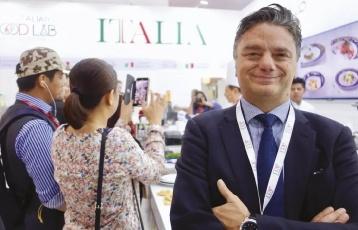
their competitiveness in terms of labour costs. This phenomenon, however, also concerns other countries, such as Indonesia, Pakistan, the Philippines, Bangladesh, but also Brazil. In any case, even considering these developments, China continues to dominate by far the global footwear and leather goods production and consumption sector although the industry is undergoing a major reorganisation as it is subject to a number of competitive pressures, such as:
- Growing geopolitical risks associated with trade and political frictions with the United States, which is the main outlet market for Chinese exports;
- Sharp increases in the cost of raw materials and labour that are significantly eroding profit margins;
- Competition on the lining market from big foreign brands in the medium-high segments of domestic demand;
- Process of lining consolidation with the expulsion of many small producers, due to the impact caused both by the restrictions associated with the 'zero tolerance' policy practised by local authorities against Covid-19 and the continuous pressure on the production costs and competitive level;
- Process of supply segmentation with several producers positioning themselves in highly specialised niche productions characterised by product customisation and production flexibility;
- Need to comply with increasingly stringent regulations in terms of quality standardisation and environmental sustainability regulations;
- Challenges imposed on traditional distribution channels by the very strong penetration of online sales platforms;
- Introduction of intelligent production processes and innovative technologies to improve efficiency and competitiveness as well as to implement differentiation processes (e.g. use of 3D printing, circular knitting, recyclable or energy-efficient materials, laser and numerical control machines, incorporation of 'wearable technologies' and sensor technology, etc.);
- Unfair competition exerted by the massive counterfeiting of several Chinese companies on the international market.
79 Market


Scienziato pazzo
Ricerca e innovazione nelle tecnologie e nei materiali investono anche il mondo delle calzature. Qui due curiose realtà.
Alimentare i nostri smartphone ogni sera, appoggiare lo spazzolino da denti su una base di ricarica, attaccare l’aspirapolvere alla spina perché sprigioni tutta la sua potenza. Sono diventati gesti consueti per noi umani: abitudini. Chissà mai che a breve ci tocchi usare il cavetto usb anche per le nostre scarpe.
Uno scenario non così futuristico visto il progetto Kickstarter elaborato da WAHU, le scarpe tecnologiche che vogliono portare il comfort a un livello superiore. Le scarpe WAHU utilizzano la tecnologia brevettata w-lift™ che consente di personalizzare il livello di ammortizzazione in base al proprio corpo attraverso l'App collegata, con un'escursione da 0 a 2,5 bar di ammortizzazione aggiuntiva. Il meccanismo robotico comandato dall’intelligenza artificiale adatta l’ammortizzazione della scarpa anche in base al terreno, aumentando comfort e performance.
Di tutt’altro segno le Auxetic Wear, scarpe che continuano ad adattarsi al piede. Progettate da Wertel Oberfell, le Auxetic Wear rappresentano un nuovo concetto di calzatura che combina la stampa 3D con la flessibilità dei materiali auxetici per creare una scarpa che si adatta ai piedi durante la giornata. A differenza dell'elastico, che diventa più sottile quando viene allungato, un materiale auxetico si espande quando viene tirato. Per le calzature, questo materiale è ideale perché i piedi non rimangono sempre gli stessi durante la giornata: si gonfiano e si espandono a seconda dell'uso. La scarpa Auxetic Wear si adatta a chi la indossa espandendosi o comprimendosi a livello locale. Attraverso molteplici iterazioni e test, i progettisti sono giunti a una struttura di base, simile a quella di uno scheletro. Questa struttura sostiene il modello auxetico e funge da rinforzo nel punto in cui i singoli componenti dello stivale si uniscono. La struttura auxetica viene stampata in 3D utilizzando un TPU resistente, viene incollata e poi cucita sulla suola, in modo del tutto simile alla tradizionale lavorazione artigianale delle scarpe. Il risultato finale è uno stivale moderno che sembra disegnato per l'estetica, ma che in realtà è stato progettato per il comfort di tutti i giorni.
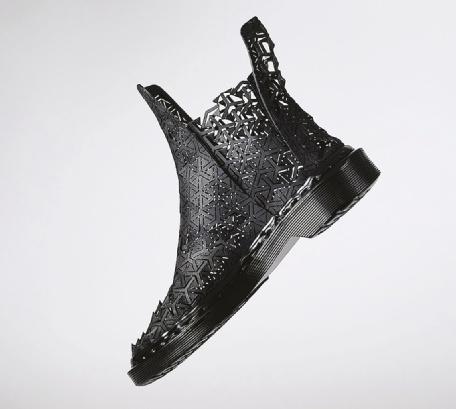
82 Trends
Mad scientist
Research and innovation in technologies and materials
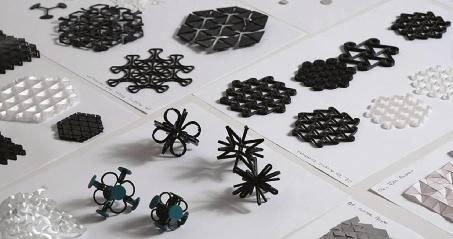
also invest the world of footwear. Here two curious realities.
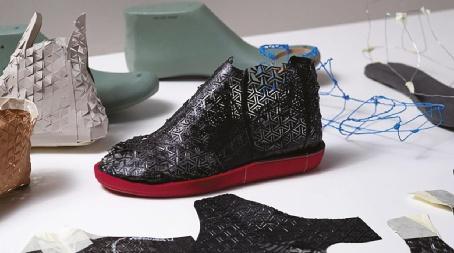

Powering our smartphones every night, resting our toothbrushes on a charging base, plugging the vacuum cleaner in for it to unleash its full power. These have become customary gestures for us humans: habits. Who knows, we may soon have to use the usb cable for our shoes as well.
A not-so-futuristic scenario given the Kickstarter project developed by WAHU, the tech shoes that want to take comfort to the next level. WAHU's shoes use the patented w-lift™ technology that allows users to customize the level of cushioning to their body through the connected App, ranging from 0 to 2.5 bars of additional cushioning. The robotic mechanism controlled by artificial intelligence also adapts the shoe's cushioning based on the terrain, increasing comfort and performance.
Of a different sign are the Auxetic Wear, shoes that continue to adapt to the foot. Designed by Wertel Oberfell, the Auxetic Wear represents a new concept in footwear that combines 3D printing with the flexibility of auxetic materials to create a shoe that adapts to your feet throughout the day. Unlike elastic, which becomes thinner when stretched, an auxetic material expands when pulled. For footwear, this material is ideal because feet do not always stay the same throughout the day, they swell and expand depending on use. The Auxetic Wear shoe adapts to the wearer by expanding or compressing locally. Through multiple iterations and tests, the designers arrived at a basic, skeleton-like structure. This structure supports the auxetic model and acts as a reinforcement where the individual components of the boot come together. The auxetic structure is 3D printed using a solid TPU, is glued and then sewn onto the sole in a manner entirely similar to traditional shoe craftsmanship. The end result is a modern boot that appears to be designed for aesthetics but is actually designed for everyday comfort.
83 Trends
BestSecret Group: la community di top fashion a ERS & Gardabags
L’azienda tedesca ha fatto del proprio originale modello di business un fattore di successo, che l’ha portata ad essere leader in Europa nell’e-commerce di moda premium off-price. Per BestSecret la fiera di Riva del Garda rappresenta un appuntamento-chiave per offrire alla propria community un assortimento permanete di oltre 3mila brand.
BestSecret Group è un'azienda leader in Europa nel commercio online di moda uomo, donna e bambino premium e di lusso offprice, con quasi 100 anni di storia alle spalle nell'industria tessile e della moda, e oggi di proprietà di Permira Funds e delle famiglie fondatrici Schustermann e Borenstein. Con sede a Monaco di Baviera, in Germania, BestSecret Group ha tre negozi fisici, ma concentra il proprio core business nella vendita online, dove è presente con un assortimento permanente di circa 3.000 marchi internazionali, in grado di offrire ai membri della propria community presenti in tutta Europa capi di moda trendy e di alta gamma, a prezzi molto concorrenziali. Grazie all’originale modello di business, incentrato sulla community e su un uso sapiente della tecnologia, e all’impegno costante per la sostenibilità, BestSecret Group offre ai propri clienti un'esperienza di shopping di alto livello e, al contempo, mette al servizio dei propri partner di marca la liquidazione di prodotti overstock su larga scala e nel rispetto della brand equity. Andiamo alla scoperta di questa realtà così originale e importante, che ha generato un fatturato di 943 milioni di euro nel 2021 e impiega oggi circa 1.900 persone provenienti da oltre 80 Paesi: ce ne parla Birgit Gall, Head Buyer di BestSecret Group.

Qual è la situazione del mercato che cogliete dal vostro osservatorio?
La nostra è una situazione un po’ particolare che difficilmente si può paragonare a quella dei competitors presenti sul mercato, perché noi siamo una community e il nostro successo è basato su relazioni profonde e di fiducia con i nostri clienti e i partner di marca. Proprio il concept originale che ci caratterizza permette di lavorare molto bene anche in un momento storico così complesso come quello attuale, in cui il mercato si trova in una situazione di grande confusione e generale difficoltà, a causa del Covid e dell’aumento generale dei costi. Problemi che creano difficoltà soprattutto nell’ambito delle consegne, tanto più che noi annoveriamo tra i nostri fornitori aziende cinesi e indiane. Tuttavia, riteniamo che oggi sia quanto mai fondamentale lavorare insieme ai nostri fornitori
84 Market
per offrire alla clientela un’esperienza di shopping di alto valore aggiunto.
Quali prodotti stanno funzionando meglio per l’inverno e quali pensate continueranno ad avere successo anche per il prossimo?
Per quanto ci riguarda, i prodotti più richiesti sono il mocassino e il Chelsea boot, ma anche gli stivali alti al ginocchio e oltre il ginocchio, che a mio parere saranno i grandi protagonisti del prossimo inverno.
Quale aspetto della vendita è oggi cruciale per voi? È difficile individuare un aspetto in particolare, perché il successo del business si può paragonare ad un meccanismo complesso fatto di molti ingranaggi che lavorano insieme: dalla fornitura di prodotti, al giusto rapporto qualità/prezzo, alla delivery… il nostro business si concentra sullo shopping online, che rappresenta oggi un canale di acquisto privilegiato soprattutto dalle giovani generazioni perché piacevole, comodo e veloce.
Come è cambiato il settore negli ultimi dieci anni? Negli ultimi dieci anni tutto è cambiato! Sicuramente l’avvento del Covid ha significativamente modificato la vita di ognuno di noi e ha influito profondamente anche sul settore della moda, dando una spinta decisiva al commercio online. Le persone, inoltre, si sono via via orientate sempre più su articoli e stili speciali. Anche il prezzo è diventato un fattore più importante rispetto al passato, così come è aumentata la sensibilità e la richiesta di prodotti sostenibili e rispettosi del pianeta, e non più solo di articoli fashion come avveniva nel passato.
Parliamo di appuntamenti fieristici: a quali fiere prenderete parte?
Partecipiamo alle fiere in Germania, siamo stati a Berlino e Monaco di Baviera, ma siamo presenti anche a Micam Milano e, naturalmente, a Expo Riva Schuh a Riva del Garda.
Perché ERS & Gardabags è per voi un appuntamento importante?
Perché sono presenti numerosi fornitori, soprattutto per
private labels, e poi perché a Expo Riva Schuh & Gardabags troviamo aziende produttrici che provengono da tutto il mondo e per noi che lavoriamo su scala globale, è un fattore di enorme importanza. E poi è facilmente raggiungibile da Monaco di Baviera, aspetto da non trascurare.
Cosa cercherete come riassortimento e per il prossimo inverno (sia a livello di fornitori che di prodotti)?
La nostra attenzione si rivolge a prodotti di qualità e ad un prezzo conveniente. In termini di tipologia di prodotto, invece, ci concentreremo sugli stivali, i chelsea boot e i mocassini.
BestSecret Group: the top fashion community at ERS & Gardabags
The German company has made its original business model a success factor, which has led it to be the European leader in off-price premium fashion ecommerce. For BestSecret, the trade fair in Riva del Garda represents a key appointment to offer its community a permanent assortment of over 3,000 brands.
BestSecret Group is Europe's leading online retailer of premium and luxury off-price men's, women's and children's fashion, with almost 100 years of history behind it in the textile and fashion industry, and today owned by Permira Funds and the founding families Schustermann and Borenstein. Headquartered in Munich, Germany, BestSecret Group has three
85 Market
physical shops, but concentrates its core business on online sales, where it is present with a permanent assortment of around 3,000 international brands, offering trendy, high-end fashion items at very competitive prices to members of its community throughout Europe. Thanks to its original business model, centred on the community and a skilful use of technology, and its constant commitment to sustainability, BestSecret Group offers its customers a top-class shopping experience and, at the same time, provides its brand partners with a large-scale liquidation of overstocked products while respecting brand equity. Let's discover this original and important reality, which generated a turnover of EUR 943 million in 2021 and now employs around 1,900 people from more than 80 countries: Birgit Gall, Head BuyeratBestSecretGroup, tells us about it.

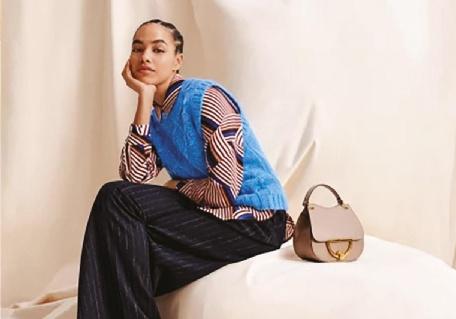
What is the market situation that you gather from your observatory?
Ours is a somewhat special situation that can hardly be compared with that of competitors in the market, because we are a community and our success is based on deep and trusting relationships with our customers and brand partners. It is precisely the original concept that characterises us that allows us to work very well even in such a complex historical moment as the current one, in which the market is in a situation of great confusion and general difficulty, due to Covid and the general
BestSecret
increase in costs. Problems that create difficulties especially in the area of deliveries, especially since we count Chinese and Indian companies among our suppliers. However, we feel that it is now more crucial than ever to work together with our suppliers to offer customers a high value-added shopping experience.
Which products are performing best this winter and which do you think will continue to be successful next?
As far as we are concerned, the most popular products are the moccasin and the Chelsea boot, but also the knee-high and over-the-knee boots, which in my opinion will be the big stars of next winter.
What aspect of sales is crucial for you today?
It's difficult to single out one aspect in particular, because the success of the business can be compared to a complex mechanism made up of many cogs working together: from the supply
86 Market
of products, to the right quality/price ratio, to delivery... our business focuses on online shopping, which today represents a favourite purchasing channel especially for the younger generations because it is pleasant, convenient and fast.
How has the sector changed over the last ten years?
Everything has changed in the last ten years! Certainly, the advent of Covid has significantly changed everyone's life and has also profoundly influenced the fashion industry, giving a decisive boost to online commerce. People have increasingly turned to special items and styles. Price has also become a more important factor than in the past, as has the awareness and demand for sustainable and planet-friendly products, and no longer just for fashion items as in the past.
Let's talk about trade fairs: which fairs do you participate in?
We participate in trade fairs in Germany, we have been to Berlin and Munich, but we are also present at Micam Milan and, of course, at Expo Riva Schuh in Riva del Garda.
Why is ERS & Gardabags an important event for you? Because there are many suppliers present, especially for priva-
te labels, and then because at Expo Riva Schuh & Gardabags we find manufacturers from all over the world and for us, who work on a global scale, this is of enormous importance. And then it is easily accessible from Munich, an aspect that should not be overlooked.
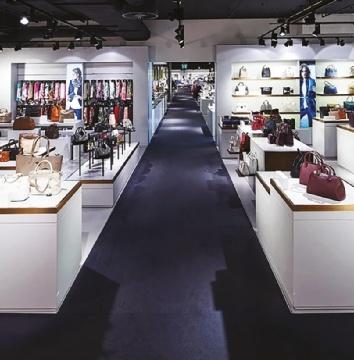
What will you be looking for in terms of restocking and for next winter (both in terms of suppliers and products)?
Our focus is on quality products at an affordable price. In terms of product type, we will focus on boots, chelsea boots and moccasins.

87 Market
GROUP
ADG
Con sede in Brasile, nella città di Dois Irmãos, nello stato di Rio Grande do Sul, ADG Export nasce per iniziativa di tre fratelli francesi con un’approfondita conoscenza del mercato calzaturiero europeo e dei suoi standard di qualità, che hanno saputo unire questo prezioso know-how con la qualità dei pellami e la competitività della produzione Made in Brazil. Il risultato sono calzature dal design accattivante e dal gusto internazionale, con un vantaggioso rapporto qualità/prezzo. ADG Export produce le proprie collezioni, ma è anche specializzata nello sviluppo per i clienti (compresi gli importatori e i grossisti) di linee esclusive, soprattutto nella fascia di lusso medio/alta. La forza dell'azienda risiede in un team di persone efficienti e qualificate, che si occupano di tutti i progetti, dall'ideazione allo sviluppo fino alla produzione, puntando sempre sulla qualità e sui desideri del cliente. ADG Export offre un servizio completo di follow-up durante tutto il processo: dalla selezione dei materiali, al taglio, fino all'ispezione di qualità della merce prima della spedizione. Andiamo a conoscere meglio questa realtà con Frederick Giteau, uno dei titolari.
ADG Export: anima internazionale
Una sede in Brasile, ma origini francesi: andiamo alla scoperta di un’azienda che con le proprie collezioni e lavorando con private labels ha saputo conquistare il mercato europeo e internazionale con gusto e qualità, senza dimenticarsi dell’ambiente. Ne abbiamo parlato con uno dei titolari, Frederick Giteau.
ADG Export ha sede in Brasile, nello stato di Rio Grande do Sul, ma è di proprietà di tre fratelli francesi con una profonda conoscenza del mercato calzaturiero europeo: quali vantaggi derivano da questa combinazione di culture e mercati?

Questa nostra caratteristica ci permette di avere una migliore conoscenza dei requisiti di qualità, fitting e dei piccoli dettagli. Per questo motivo esportiamo e non produciamo esclusivamente per il mercato brasiliano. Abbiamo un'organizzazione piccola e molto reattiva, con un nostro reparto dedicato all'interno delle fabbriche e un controllo della qualità totalmente indipendente da quello della fabbrica. Tutto questo ci permette di avere la fiducia dei nostri clienti, che sanno di avere scarpe di buona qualità al giusto prezzo, buone date di consegna e nessuna preoccupazione!
Come è cambiato, secondo lei, il mercato europeo e internazionale delle calzature? Quali sono i prodotti più richiesti dal mercato oggi? Assistiamo ad un ritorno della richiesta di calzature fem-
88 Sourcing
Raphaël Giteau, Alex Giteau & Fred Giteau
minili, décolleté e stivali a tacco alto, che erano pressoché scomparsi durante il periodo del Covid. Ora si spera che le donne vogliano uscire di nuovo, smettano di usare esclusivamente scarpe da ginnastica e desiderino mostrarsi di nuovo in tutta la loro femminilità.

A quali mercati vi rivolgete principalmente?
Il nostro mercato di riferimento è la Francia, naturalmente, ma anche il Nord Europa. La nostra qualità è in linea con quella delle migliori fabbriche italiane e spagnole, ma abbiamo prezzi migliori e più adatti al mercato di massa.
Quali sono le caratteristiche vincenti della vostra produzione?
Duro lavoro e perseveranza, entusiasmo e passione, umiltà e integrità...
Come si caratterizza la nuova collezione Autunno-Inverno 2023/24?
È un mix di molti temi e influenze. Poiché produciamo per le private label, cerchiamo sempre di proporre ciò di cui i nostri clienti sono alla ricerca. Per questo non mancano décolleté, stivali con tacco, mocassini, e una grande varietà di tacchi e bei materiali.
La sostenibilità è un tema molto importante oggi: come vi state muovendo in questo ambito? Abbiamo iniziato circa 10 anni fa e oggi siamo in grado di lavorare esclusivamente con concerie LWG Gold, se il cliente lo desidera. Abbiamo lanciato molti anni fa il materiale Cactus, prima di tutti nel nostro segmento e oggi proponiamo un materiale ancora migliore, a base di bambù, molto più resistente e ideale per produrre scarpe
e a prezzi competitivi. Il problema della sostenibilità è, infatti, che i prezzi che i fornitori applicano sono troppo alti e solo una "nicchia" di persone ricche può acquistare questo tipo di calzature. Ma chi desidera la sostenibilità nella vita di tutti i giorni è la gente normale, non l'élite.
Esponete a Expo Riva Schuh da molti anni: Come è cambiata la fiera per voi? Perché è così importante per voi essere presenti? È l'unica fiera che facciamo oggi e che faremo sempre, almeno finché continueranno ad essere un partner per noi come è stato fino ad oggi, allo stesso modo in cui noi consideriamo le persone con cui lavoriamo come partner e non solo come clienti o fornitori...
ADG Export: international soul
Based in Brazil, but with French origins: we go to discover a company that with its own collections and working with private labels has been able to conquer the European and international market with taste and quality, without forgetting the environment. We talked about it with one of the owners, Frederick Giteau.
Based in Brazil, in the city of Dois Irmãos, in the state of Rio Grande do Sul, ADG Export was founded on the initiative of three French brothers with an in-depth knowledge of the European footwear market and its quality standards, who were able to combine this valuable know-how with the quality of the leathers and the competitiveness of Made in Brazil production. The result is footwear with an attractive design and international taste, with an advantageous quality/price ratio. ADG Export produces its own collections, but also specialises in the development for customers (including importers and wholesalers) of exclusive lines, especially in the medium/high luxury
89 Sourcing
bracket. The company's strength lies in a team of efficient and qualified people, who take care of all projects, from conception to development to production, always focusing on quality and the customer's wishes. ADG Export offers a complete follow-up service throughout the process: from the selection of materials, to cutting, to quality inspection of the goods before shipment. We get to know this company better with Frederick Giteau, one of the owners.
ADG Export is based in Brazil, in the state of Rio Grande do Sul, but owned by three French brothers with an in-depth knowledge of the European footwear market: what advantages come from this combination of cultures and markets?
This allows us sto have a better knowledge of quality requeerment, fitting and small detailing. That’s why we are only exporting and not producing for the Brasilian market. We have a small and reactive organisation, we have our own dedicated tem inside the factories and our own quality control totally independant from the one from the factory. All this allows us to have the trust of our customers, who know they have good quality shoes at the right price, good delivery dates and no worries!
How, in your opinion, has the European and international footwear market changed? Which products are most in demand on the market today?
We are seeing a return of demand for feminine footwear, pumps and high-heeled boots, which had all but disappeared during the Covid period. Now it is hoped that women will want to go out again, stop wearing only trainers and want to show themselves in all their femininity again.
Which markets are you mainly targeting?
Our target market is France, of course, but also Northern Europe. Our quality is in line with that of the best Italian and Spanish factories, but our prices are better and more suited to the mass market.
What are the winning features of your production? Hard work and perseverances, Enthusiasm and passion, Humility and integrity…
How is the new Autumn Winter 2023/24 collection characterised?
It is a mix of many themes and influences. Since we produce for private labels, we always try to offer what our customers are looking for. That is why there is no shortage of pumps, heeled boots, loafers, and a wide variety of heels and beautiful materials.
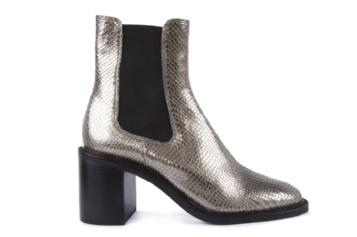
Sustainability is a very important topic today: how are you doing in this area?
We started about 10 years ago and today we are able to work exclusively with LWG Gold tanneries, if the customer so wishes. We launched the Cactus material many years ago, first of all in our segment, and today we offer an even better material, based on bamboo, which is much more resistant and ideal for making shoes and at competitive prices. The problem with sustainability is, in fact, that the prices that suppliers charge are too high and only a 'niche' of rich people can buy this type of footwear. But the people who want sustainability in their everyday lives are normal people, not the elite.
You have been exhibiting at Expo Riva Schuh for many years: How has the fair changed for you? Why is it so important for you to be present?
It is the only fair we do today and always will, at least as long as they continue to be a partner for us as they have been until now, in the same way that we consider the people we work with as partners and not just as customers or suppliers.
90 Sourcing
export

La transizione sostenibile nell’industria della moda è una questione strategica

Lo
Al Venice Sustainable Fashion Forum (VSFF) 2022, che si è tenuto il 27 e 28 ottobre presso la Fondazione Giorgio Cini (Isola di San Giorgio, Venezia), hanno partecipato attivamente istituzioni, brand, professionisti di filiera, rappresentanti del mondo dell'industria e dell’impresa e ONG.
L’obiettivo principale del Forum, di cui questa è stata la prima edizione, è accelerare un percorso di transizione sostenibile in un settore che soffre di carenza di dati e di strumenti di misurazione standardizzati. Si tratta di elementi sempre più fondamentali per la sopravvivenza delle imprese, per accedere ai fondi e agli investimenti previsti per progetti di innovazione e sostenibilità. Come emerso durante la prima giornata di summit: è possibile migliorare solo quello che si può prima di tutto identificare e misurare. L’Europa si è posta l'ambizioso traguardo di diventare il primo continente neutrale per emissioni di carbonio entro il 2050 e ha redatto una tabella di marcia fatta di misure con tappe intermedie. Ad esempio, è prevista una riduzione del 55% delle emissioni di gas serra (rispetto ai livelli del 1990) entro il 2030, un aumento al 40% della quota di energie rinnovabili nel mix energetico e un obiettivo di efficienza energetica del 36%.
Nell’ambito del Green Deal, che comprende investimenti per €1.000 miliardi nei prossimi 10 anni per la transizione ecologica, a marzo 2020 la Comunità Europea ha adottato un Piano d'azione per l'economia circolare. Il piano si concentra sui settori ad alta intensità di risorse, tra cui la filiera della moda, e punta sul concetto di circolarità come base per raggiungere l'obiettivo UE di neutralità climatica entro il 2050. Ma quali sono e a chi spettano i passi da compiere necessariamente per conseguire il risultato? Durante i due giorni di VSFF si è provato a trovare delle risposte affinché tutti gli attori della catena di approvvigionamento e coloro che esercitano pressioni sul sistema abbiano dei punti comuni da cui partire per incoraggiare la transizione green.
Sustainability 92
scorso
l’industria italiana della moda si è data appuntamento al Venice
Fashion Forum 2022, il primo summit internazionale interamente dedicato al progredire
sostenibilità
settore.
ottobre
Sustainable
della
nel
In particolare, durante la giornata del 27 ottobre realizzata da Confindustria Venezia Area Metropolitana di Venezia e Rovigo e The European House - Ambrosetti, con il patrocinio di Assocalzaturifici, sono stati forniti per la prima volta i risultati di un assessment di sostenibilità condotta sulle aziende delle filiere della moda italiana. Il titolo del lavoro è “Just Fashion Transition”, coordinato da Carlo Cici - Partner e Head of Sustainability di Ambrosetti, e ha permesso di indagare in modo più puntuale gli impatti ambientali e sociali del sistema moda. Lo studio mette a fuoco le sfide e le opportunità della transizione sostenibile nel settore fashion e delinea sei raccomandazioni, che vedremo in seguito, rivolte alle istituzioni e agli attori chiave della filiera per promuovere una transizione che non sia solo sostenibile ma anche giusta, equa, capace di bilanciare gli interessi e le aspettative dei diversi portatori d’interesse senza lasciare indietro nessuno (approfondimento nel box). Secondo le rilevazioni effettuate da Ambrosetti, emergono delle forti discrepanze riguardo le diverse stime sui parametri di sostenibilità delle aziende e questo è dovuto alla carenza di dati e strumenti di misurazione standardizzati. Per esempio, le emissioni di carbonio nel settore moda registrano uno scostamento fino al 310% tra le diverse fonti prese in considerazione per lo studio; similmente, le stime sui prelievi annuali di acqua dolce da parte delle imprese evidenziano variazioni fino al 172% l’una dall’altra e fino al 429% rispetto ai dati sull’utilizzo di acqua per la produzione di jeans. A fronte però di questo scenario di incongruenza delle rilevazioni, su cui poi leader politici e aziendali sono chiamati quotidianamente a prendere decisioni fondamentali, emerge l’obbligo per circa 1.000 aziende europee dei settori fashion e lusso di rendere
pubbliche annualmente le loro performance quantitative di sostenibilità a partire dall’anno fiscale 2023 o, al più tardi, dal 2024, secondo gli standard introdotti dalle nuove direttive europee.
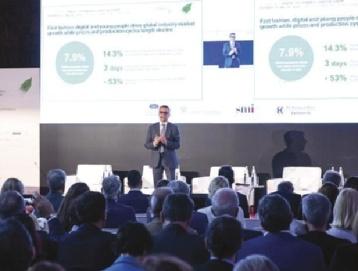
L’Italia, in particolare, è prima in Europa per numero di imprese interessate da questa scadenza, quasi 300, seguita dalla Francia con più di 130 e dalla Germania con 110, mentre tutti gli altri paesi dell’area UE presentano una media di circa 25 aziende interessate. Numeri che certificano come la transizione sostenibile sia una questione strategica per l’industria nazionale della moda che ha il dovere e l’onere di essere al centro del dibattito globale del settore e indicare una strada per la riduzione degli impatti ambientali, sociali ed economici generati da questa industria.
“Agli addetti ai lavori è ben noto come la transizione verso la sostenibilità sia molto complessa”, spiega il responsabile della divisione Fashion & Luxury di The European House - Ambrosetti, Flavio Sciuccati. “Alcuni fattori peculiari caratterizzano il settore: la forte segmentazione che va dal Lusso di fascia alta ai segmenti più bassi del ‘mass market’ e‘fast fashion’; la brevità del ciclo di vita dei prodotti e il continuo rinnovamento delle collezioni; le scelte di ‘globalizzazione’ e la ricerca del ‘low cost’ che hanno portato alla delocalizzazione di massa e alla frammentazione esasperata delle supply chains di tutti i prodotti in condizioni molto spesso non sostenibili”. Il tutto, aggiunge Sciuccati, “in un quadro di riferimento normativo e di regole in via di definizione che rischia di penalizzare proprio le imprese che da sempre rappresentano il vero serbatoio di innovazione e di creazione di gran parte dei prodotti del settore”. È emerso un grande tema chiave che coinvolge tutti ed

Sustainability 93
Carlo Cici - Partner e Head of Sustainability di Ambrosetti
Maria Teresa Pisani - Acting Head, Sustainable Trade and Outreach Unit, United Nations Economic Commission for Europe
è quello della responsabilità che si declina in modalità diverse fra il produttore, il consumatore e il legislatore. Questo l’approfondimento condotto durante la seconda giornata, il 28 ottobre, dal titolo “The Values of Fashion”, realizzata da Camera Nazionale della Moda Italiana e Sistema Moda Italia (SMI). Dunque, è responsabilità delle istituzioni fornire regole chiare che definiscano criteri standard per identificare le aziende sostenibili, di conseguenza queste devono essere premiate con investimenti e sostegni mirati. “La sostenibilità ha un costo, ma non deve avere anche il costo della complessità” ha affermato Maria Teresa Pisani - Acting Head, Sustainable Trade and Outreach Unit, United Nations Economic Commission for Europe. D’altra parte, è responsabilità delle imprese e dei soggetti coinvolti su tutta la filiera trovare il modo di sbloccare e favorire circolarità e sostenibilità che sono diventati veri e propri elementi di competitività sul mercato.

Infine, vi è la responsabilità dei consumatori chiamati a informarsi, ma a cui,, devono arrivare tutte le informazioni necessarie per compiere acquisti consapevoli. Il cliente deve sapere quello che sta comprando per esercitare la propria libertà di scelta. Quindi, il successo dipenderà da un lavoro svolto a più mani che include le aziende, tutta la filiera e i consumatori finali. Si aprono, così, altri temi
importanti, quello della comunicazione, della collaborazione e della tracciabilità. La scelta di materie prime che limitino l’impatto ambientale in tutti i passaggi di produzione, la tecnologia come acceleratore della sostenibilità, utilizzata attraverso dei passaporti digitali per informare gli attori della filiera ma anche i clienti sulle credenziali etiche e sostenibili dei prodotti, la qualità del Made in Italy non solo come espressione estetica, ma come elemento fondante della longevità dei beni e della loro circolarità. I modelli emergenti di economia circolare rappresentano oggi solo il 3,5% del mercato globale della moda. Durante la seconda giornata dell’evento sono state proposte otto parole chiave che corrispondono ad altrettante tematiche di valore finalizzate a delineare il quadro dicambiamento su cui la moda italiana si sta focalizzando per individuare nuovi percorsi virtuosi che mirano al conseguimento della sostenibilità del settore. Harmonise, ovvero armonizzare nuovi modi comuni di interpretare la sostenibilità: Educate, educare tutti gli attori della filiera per guidare il cambiamento; Think, cambiare state of mind e agire a tutto tondo in modo sostenibile; Measure, abilitare il miglioramento continuo delle prestazioni attraverso sistemi di misurazione standardizzati; ReMake, puntare all’economia circolare; Create, creare pensando già a quella che sarà la vita futura dei prodotti; Make, agire considerando il ruolo essenziale della collaborazione all’interno della filiera; Make (It happen), per la gestione del cambiamento mediante la tecnologia e l’innovazione sostenibile. Seguendo queste indicazioni le aziende testimonieranno la trasformazione delle attività e della catena del valore attraverso l’implementazione di buone pratiche e la filiera diventerà protagonista su quanto fatto finora e su ciò che si sta facendo per l’evoluzione di un settore così centrale per l’industria a livello globale.
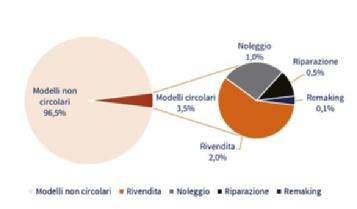
Sustainability 94
Flavio Sciuccati - responsabile della divisione Fashion & Luxury di The European House - Ambrosetti
Elaborazione The European House - Ambrosetti su dati Ellen MacArthur Foundation: Circular business models Redefining growth for a thriving fashion industry (2021)
JUST FASHION TRANSITION
STUDIO DI THE EUROPEAN HOUSEAMBROSETTI SULLA FILIERA DELLA MODA
Lo studio ha valutato le performance economico-finanziarie di 2.700 aziende della catena di fornitura, ha valutato la sostenibilità di 167 aziende della filiera italiana e ha analizzato gli strumenti di gestione della sostenibilità delle 100 più grandi imprese europee.
Non ci sono dubbi sul fatto che la moda determini degli impatti significativi sull’ambiente, ma non lo si può dire basandosi sui dati oggi disponibili a livello globale. La stima delle emissioni che alterano il clima terrestre generate dal settore oscilla dal 2 all’8,1% delle emissioni globali, un valore fino a 4 volte superiore. Sul fronte sociale la stima di lavoratori che operano nel settore a livello globale oscilla tra i 60 e i 75 milioni, la maggior parte dei quali vive in Paesi in via di sviluppo dove sono più presenti disuguaglianze, fenomeni di lavoro minorile, sfruttamento e condizioni di lavoro insalubri o pericolose. L’obiettivo è standardizzare la misurazione della sostenibilità di imprese e prodotti e di aumentare il livello di trasparenza dei brand. Le nuove normative europee di sostenibilità impatteranno principalmente i brand e, a seguire, l’intera filiera. Senza una filiera sostenibile non potranno esserci brand sostenibili. Dall’indagine di The European House - Ambrosetti su 167 aziende della filiera italiana della moda, inoltre, si evince che solo all’aumentare delle dimensioni dell’azienda cresce l’adozione di strumenti per la gestione della sostenibilità, il monitoraggio, la presenza di figure dedicate e l’ottenimento delle certificazioni. A questo proposito, nello studio vengono proposte sei raccomandazioni utili ad accompagnare il settore verso il traguardo della sostenibilità: l’adozione anticipata di strumenti in grado di fornire feedback, definire una roadmap in grado di supportare l’industria nel percorso alla sostenibilità, concordare alleanze tra gli attori della filiera, creare un database e un osservatorio permanente dei dati, promuovere e condividere all’esterno una cultura sostenibile attraverso azioni di divulgazione, promuovere le imprese del lusso di Italia e Francia, non solo come simbolo di qualità ma come avanguardia della sostenibilità. Emerge la necessità di reinvestire quote fisse dei margini dei brand per favorire la scalabilità di modelli di business circolari e la condivisione delle migliori pratiche di settore.
Sustainable
transition in the fashionindustryisastrategicissue
Last October, the Italian fashion industry gathered at the Venice Sustainable Fashion Forum 2022, the first international summit
The Venice Sustainable Fashion Forum (VSFF) 2022, which was held on 27 and 28 October at the Giorgio Cini Foundation (San Giorgio Island, Venice), was actively attended by institutions, brands, supply chain professionals, industry and business representatives and NGOs. The main goal of the Forum, of which this was the first edition, is to accelerate a sustainable transition path in a sector that suffers from a lack of data and standardised measurement tools. These are increasingly crucial for the survival of companies and for accessing the funds and investments earmarked for innovation and sustainability projects. As emerged during the first day of the summit: you can only improve what you can first identify and measure.
Europe has set itself the ambitious goal of becoming the first carbon-neutral continent by 2050 and has drawn up a roadmap of measures with milestones in between. For example, a 55 per cent reduction in greenhouse gas emissions (compared to 1990 levels) by 2030, an increase in the share of renewables in the energy mix to 40 per cent, and an energy efficiency target of 36 per cent.
As part of the Green Deal, which includes investments of €1 trillion over the next 10 years for the ecological transition, the European Community adopted an Action Plan for the Circular Economy in March 2020. The plan focuses on resource-intensive sectors, including the fashion industry, and points to the concept of circularity as the basis for achieving the EU goal of climate neutrality by 2050. But what and to whom are the necessary steps to be taken to achieve this? During the two-day VSFF, an attempt was made to find answers so that all actors in the supply chain and those who exert pressure on the system have common points from which to encourage the green transition.
During the day on 27 October organised by Confindustria Venezia Area Metropolitana di Venezia e Rovigo and The European House - Ambrosetti, with the sponsorship of Assocalzaturifici, the results of a sustainability assessment conducted on companies in the Italian fashion supply chain were provi-
Sustainability 95
entirely dedicated to advancing sustainability in the industry.
ded for the first time. The title of the work was “Just Fashion Transition", coordinated by Carlo Cici - Partner and Head of Sustainability at Ambrosetti, and allowed for a more detailed investigation of the environmental and social impacts of the fashion system.
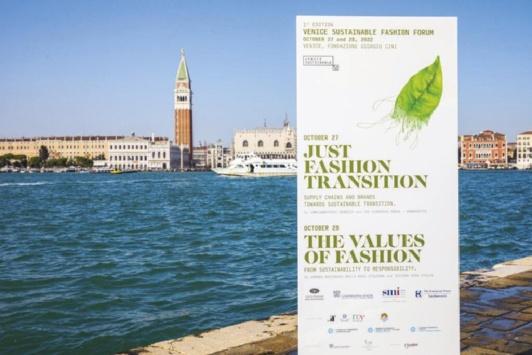
The study focuses on the challenges and opportunities of the sustainable transition in the fashion sector and outlines six recommendations, which we will see below, addressed to institutions and key players in the supply chain to promote a transition that is not only sustainable but also fair, equitable and capable of balancing the interests and expectations of the various stakeholders without leaving anyone behind (more on this in the box).
According to Ambrosetti's research, there are large discrepancies in the various estimates of companies' sustainability parameters, and this is due to the lack of standardised data and measurement tools. For example, carbon emissions in the fashion sector show a deviation of up to 310% between the different sources considered for the study; similarly, estimates of annual freshwater withdrawals by companies show variations of up to 172% from each other and up to 429% from data on water use for jeans production. Against this backdrop of inconsistent measurements, on which political and business leaders are then called upon to make fundamental decisions on a daily basis, however, emerges the obligation for around 1,000 European companies in the fashion and luxury sectors to make their quantitative sustainability performance public annually from the fiscal year 2023 or 2024 at the latest, according to the standards introduced by the new European directives.
Italy, in particular, ranks first in Europe in terms of the number of companies affected by this deadline, almost 300, followed by France with more than 130 and Germany with 110, while all other EU countries have an average of around 25 companies affected. Numbers that certify that the sustainable transition is a strategic issue for the national fashion industry, which has the duty and burden to be at the centre of the global debate in the sector and point the way to reducing the environmental, social, and economic impacts generated by this industry.
"It is well known to those in the industry how the transition towards sustainability is very complex," explains Flavio Sciuccati, Head of the Fashion & Luxury division of The European House - Ambrosetti. "Some peculiar factors characterise the sector: the strong segmentation ranging from high-end luxury to the lower segments of 'mass market' andfast fashion'; the brevity of the product life cycle and the continuous renewal of collections; the choices of 'globalisation' and the search for 'low cost' that have led to mass delocalisation and the exasperated fragmentation of the supply chains of all products in very often unsustainable conditions". All this, adds Sciuccati, 'in a regulatory framework and rules that are still being defined and that risk penalising the very companies that have always represented the true reservoir of innovation and creation of most of the sector's products'.
A major key theme emerged that involves everyone and that is that of responsibility, which is declined in different ways between the producer, the consumer, and the legislator. This was the topic discussed during the second day, October 28th, entitled “The Values of Fashion”, organised by Camera Nazionale della Moda Italiana and Sistema Moda Italia (SMI). Therefore, it is the responsibility of the institutions to provide clear rules defining standard criteria to identify sustainable companies, and consequently these must be rewarded with targeted investments and support. "Sustainability has a cost, but it does not have to come at the cost of complexity," said Maria Teresa Pisani - Acting Head, Sustainable Trade and Outreach Unit, United Nations Economic Commission for Europe. On the other hand, it is the responsibility of companies and stakeholders throughout the supply chain to find ways to unlock and foster cir-
Sustainability 96

cularity and sustainability, which have become real elements of market competitiveness.
Lastly, there is the responsibility of consumers who must be given all the information they need to make informed purchases. Customers must know what they are buying in order to exercise their freedom of choice. Therefore, success will depend on a multi-handed effort that includes companies, the entire supply chain and end consumers. This opens other important issues, that of communication, collaboration and traceability. The choice of raw materials that limit the environmental impact at all stages of production, technology as an accelerator of sustainability, used through digital passports to inform the players in the supply chain but also customers on the ethical and sustainable credentials of products, the quality of Made in Italy not only as an aesthetic expression, but as a founding element of the longevity of goods and their circularity. Emerging circular economy models today represent only 3.5% of the global fashion market.
During the second day of the event, eight keywords were proposed that correspond to as many valuable themes aimed at outlining the framework of change that Italian fashion is focusing on to identify new virtuous paths that aim to achieve sustainability in the sector. Harmonise, i.e. to harmonise new common ways of interpreting sustainability; Educate, to educate all players in the supply chain to drive change; Think, to change state of mind and act in an all-round sustainable manner; Measure, to enable the continuous improvement of performance through standardised measurement systems; ReMake, to aim for the circular economy; Create, to create by already thinking about the future life of products; Make, to act by considering the essential role of collaboration within the supply chain; Make (It happen), to manage change through technology and sustainable innovation. Following these guidelines, companies will witness the transformation of activities and the value chain through the implementation of best practices and the supply chain will become a protagonist on what has been done so far and what is being done for the evolution of a sector so central to the industry globally.
JUST FASHION TRANSITION
STUDY BY THE EUROPEAN HOUSEAMBROSETTI ON THE FASHION SUPPLY CHAIN
The study measured the economic and financial performance of 2,700 companies in the supply chain, assessed the sustainability of 167 companies in the Italian supply chain and analysed the sustainability management tools of the 100 largest European companies.
There is no doubt that fashion causes significant impacts on the environment, but this cannot be said based on the data available today at a global level. Estimates of earth's climate-altering emissions generated by the industry range from 2 to 8.1 per cent of global emissions, a figure up to four times higher. On the social front, the estimated number of workers in the sector globally ranges between 60 and 75 million, most of whom live in developing countries where inequality, child labour, exploitation and unhealthy or hazardous working conditions are most prevalent. The purpose is to standardise the measurement of sustainability of companies and products and to increase the level of transparency of brands. The new European sustainability regulations will primarily impact brands and, subsequently, the entire supply chain. Without a sustainable supply chain, there can be no sustainable brands.
Furthermore, The European House - Ambrosetti's survey of 167 companies in the Italian fashion supply chain reveals that the adoption of instruments for managing sustainability, monitoring, the presence of specialised figures, and getting certifications only occurs when a company grows.
Da qui è possibile accedere al link dove scaricare lo studio completo Just Fashion Transition.
From here you can access the link where you can download the complete Just Fashion Transition study.
In this regard, the study proposes six useful recommendations to accompany the sector towards the goal of sustainability: the early adoption of tools capable of providing feedback, defining a roadmap capable of supporting the industry on the path to sustainability, agreeing on alliances between the players in the supply chain, creating a database and a permanent observatory of data, promoting and sharing a sustainable culture externally through dissemination actions, promoting luxury companies in Italy and France, not only as a symbol of quality but as the vanguard of sustainability. It emerges the need to reinvest fixed shares of brand margins to favour the scalability of circular business models and the sharing of best practices in the sector.

Sustainability 98

La tracciabilità è l’unica strada per una sostenibilità sostenibile
Solo strutturando un terreno comune riguardo un sistema di tracciabilità condiviso dall’intero settore calzature e pelletteria sarà possibile, per le aziende produttive dell’intera filiera, percorrere un serio e comparabile cammino verso la sostenibilità che sia di aiuto a compratori e consumatori nel valutare i propri acquisti.
I due termini sostenibilità e tracciabilità sono spesso utilizzati come sinonimi, anche se sinonimi non sono. Pur abitando uno spazio contiguo, ritengo la tracciabilità propedeutica a realizzare un percorso di sostenibilità sensato e sostenibile per le aziende che producono calzature e pelletteria”. Questo il pensiero di Enrico Cietta, Amministratore Delegato di Diomedea e Presidente del Comitato Scientifico di Expo Riva Schuh & Gardabags, da oltre 20 anni economista impegnato in ricerche e consulenza strategica nel settore moda e nelle industrie creative.
I PROBLEMI DELLA SOSTENIBILITÀ
La sostenibilità presenta due problemi su tutti. Il primo: non esiste un'azienda sostenibile sotto ogni singolo aspetto. La sostenibilità, per come è stata interpretata fino a oggi, prevede un approccio per temi (siano essi l’uso di acqua, di energia, di chimica, di sostanze da riciclo, di politiche del lavoro e via dicendo). “È evidente che un approccio di questo tipo è l'unico possibile nello stadio iniziale di trasformazione di un settore - spiega Cietta -, ma non è applicabile in una fase matura poiché presenta diversi ed evidenti limiti. Un approccio segmentato, infatti, non permette di ottimizzare i costi o di condividerli con altri operatori del settore; quindi, genera ulteriori aggravi organizzativi e finanziari che non è possibile assorbire”. Il secondo problema della sostenibilità riguarda l'eccesso di certificazioni. Negli ultimi anni abbiamo assistito a una vera e propria proliferazione incontrollata di enti e sistemi di certificazione. “Anche questo fenomeno genera frammentazione e confusione rendendo quasi impossibile al mondo della produzione adeguarsi alle singole e variegate richieste che ogni marchio può avanzare”, sottolinea Cietta. La mancanza di un percorso condiviso dall’intero settore moda internazionale e l’assenza di standard comuni comporta che l'intera filiera del valore sia obbligata ad affrontare investimenti e sviluppare strategie che non favoriscono la crescita di soluzioni sostenibili, bensì l’aumento delle spese e il caos organizzativo,
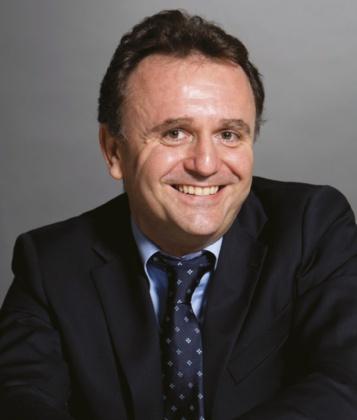
100 Sustainability
Enrico Cietta
oltre al non potersi presentare ai compratori o ai consumatori con una comunicazione chiara, univoca e quindi comparabile.
LA TRACCIABILITÀ COME SOLUZIONE
Per uscire dall’impasse Enrico Cietta, d’accordo con il Comitato Scientifico di Expo Riva Schuh, suggerisce di puntare sulla tracciabilità, e di interpretare i tanti temi connessi alla sostenibilità a partire da un sistema di tracciabilità univoco e trasparente. Un sistema che consenta via via di implementare i parametri chiave che permetterebbero a tutte le aziende della filiera moda internazionale di intraprendere un percorso a tappe verso collezioni sempre più sostenibili, senza temere sorprese o richieste inattese. Un sistema a cui potrebbero riferirsi anche buyer e consumatori, così da formarsi un’idea chiara riguardo il portato sostenibile di ogni prodotto.

Un sistema che non implicherebbe per le aziende solamente un investimento; infatti, consentirebbe loro di disporre di dati chiari da analizzare per ottimizzare i processi. “La tracciabilità è l'approccio essenziale per consentire un orientamento ampio e omnicomprensivo al tema sostenibilità. Cosa intendiamo per tracciabilità?
Un sistema di informazioni legato alla catena del valore che funga da collettore di dati predeterminati e regolamentati”. Fino a oggi si è ragionato più per best practices, individuate dal marketing di ogni singola azienda e non connesse alle necessità del settore e dell'intera filiera. L’adozione di un sistema di tracciabilità condiviso aiuterebbe il comparto a operare un salto evolutivo: “Bisogna passare da un approccio Company Specific a uno Industry Specific. Bisogna puntare non tanto a far diventare il settore sostenibile in quanto composto da tante aziende sostenibili, ma immaginare e realizzare un sistema industriale sostenibile che consenta alle aziende di aderirvi”. Un esempio concreto: se una scarpa è composta da circa 60 materiali, realizzati da quasi altrettante aziende, e per ogni parte devo determinarne il portato sostenibile, così da assegnare un passaporto di sostenibilità chiaro e trasparente a ogni prodotto finito, è assurdo immaginare che tale sfida non avvenga sulla base di un approccio univoco e condiviso dall’intera filiera. Armonizzare ogni volta certificazioni diverse e dati non omogenei sarebbe inconcludente, oltre che dispendioso.
EXPO RIVA SCHUH & GARDABAGS
E LA TRACCIABILITÀ
La fiera rivana, attraverso il lavoro del Comitato Scien-
tifico, si fa cassa di risonanza di questa idea più matura di sostenibilità e promuove una filiera tracciabile. Non desidera mettere in evidenza le buone pratiche delle singole aziende, ma lavorare perché si giunga a un sistema condiviso dal settore e fornire, così, una linea guida per tutte le aziende.
“Expo Riva Schuh & Gardabags intende individuare alcuni partner tecnici e un gruppo selezionato di aziende. Un team di lavoro che sarà chiamato a determinare quei principi di tracciabilità che potrebbero identificare con trasparenza il livello di sostenibilità di ogni azienda”, anticipa Cietta.
Perché una fiera dovrebbe occuparsi di tali tematiche? “Perché è forse l’unico soggetto indipendente in grado di radunare intorno a sé tutta la filiera a livello internazionale. Al contrario dei singoli imprenditori o delle associazioni, nazionali come sovranazionali, possiede una leva competitiva non indifferente: essere piattaforma di promozione, comunicazione e business, quindi interlocutore chiave del mercato. Quando una fiera come Expo Riva Schuh & Gardabags si impegna a fornire ai compratori informazioni chiare e confrontabili riguardo il livello di sostenibilità di aziende e collezioni, lancia un segnale forte a tutto il settore che sarà sempre più incentivato a investire in sostenibilità. La fiera si fa strumento di diffusione culturale rendendo la sostenibilità una potente arma competitiva”.
La strategia pensata da Expo Riva Schuh & Gardabags non prevede che la manifestazione diventi un ente certificatore o lo sviluppatore di una piattaforma per la tracciabilità, ma vuole mettere insieme e far dialogare i soggetti che quello fanno di mestiere con le aziende del comparto. Costruire, così, un percorso condiviso che, attraverso lo strumento tracciabilità, conduca alla sostenibilità dell’intera industria della calzatura e della pelletteria.
101 Sustainability
“The terms ‘sustainability’ and ‘traceability’ are often used interchangeably, but they are not synonyms. While they exist in close proximity, I consider traceability to be a prerequisite for a sensible and lasting path towards sustainability for footwear and leather goods companies”. This is the view of Enrico Cietta, CEO of Diomedea and Chairman of the Expo Riva Schuh & Gardabags Scientific Committee. For over 20 years, Enrico has been an economist working in research and strategic consulting in the fashion and creative industries.
THE PROBLEMS OF SUSTAINABILITY
Sustainability presents two problems above all else. The first: no company is sustainable in every single respect. As it has been interpreted to date, sustainability involves an issue-based approach (whether this be the use of water, energy, chemicals, recycling, labour policies, etc.). Enrico Cietta explains: “Clearly, only an approach such as this is possible at the initial stage of a sector's transformation, but it is not applicable at a mature stage, because it has several obvious limitations. A segmented approach does not allow costs to be optimised or shared with other industry operators; it therefore generates additional organisational and financial burdens that cannot be absorbed”. The second problem of sustainability concerns excessive certification. In recent years, we have seen a real uncontrolled proliferation of certification bodies and systems. “This phenomenon also causes fragmentation and confusion, making it almost impossible for production companies to adapt to the individual and varied demands that each label can make”, Enrico points out.
The lack of a pathway shared by the entire international fashion industry and the absence of common standards means
that the whole value chain is forced to make investments and develop strategies that do not promote the growth of sustainable solutions. Rather, they increase expenses and organisational chaos, and mean that companies cannot present themselves to buyers or consumers with clear, unambiguous and therefore comparable communication.
TRACEABILITY AS A SOLUTION

In order to overcome this impasse, Enrico Cietta, in agreement with the Expo Riva Schuh Scientific Committee, suggests focusing on traceability, and interpreting the many issues related to sustainability with an unambiguous and transparent traceability system as the basis. This system would gradually implement key parameters that would allow all companies in the international fashion sector to embark on a step-by-step journey towards increasingly sustainable collections, without fear of surprises or unexpected demands. Buyers and consumers could also refer to this system, to form a clear idea of how sustainable each product is. This system would not only imply a cost for companies; it would provide them with clear data that could be analysed to optimise processes.
“Traceability is the essential approach to enable a broad and all-encompassing focus on the topic of sustainability. What do we mean by traceability? An information system linked to the value chain that collects predetermined and regulated data”. Until now, we have been thinking more in terms of best practices, identified by the marketing teams of each individual company and not related to the needs of the sector or the supply chain as a whole. Adopting a shared traceability system would help the industry make an evolutionary leap: “We need to move from a company-specific to an industry-specific approach. The aim is not so much to make the industry sustainable by making many companies sustainable, but to imagine and introduce a sustainable industrial system that allows companies to become part of it”.
102 Sustainability
Traceabilityistheonlywayto achievelastingsustainability
Only by creating common ground for a traceability system shared by the entire footwear and leather goods sector will it be possible for production companies along the entire supply chain to follow a serious and comparable path towards sustainability that will help buyers and consumers assess their purchases.
A concrete example: if a shoe is made up of around 60 materials, manufactured by almost as many companies, and for each part I have to determine how sustainable it is, so as to assign a clear and transparent sustainability passport to each finished product, it is absurd to imagine that such a challenge would not be met on the basis of an unambiguous approach shared by the entire sector. Harmonising different certifications and non-homogeneous data each time would be inconclusive as well as costly.
EXPO RIVA SCHUH & GARDABAGS AND TRACEABILITY
Through the work of the Scientific Committee, the Riva del Garda trade show is acting as a sounding board for this more mature idea of sustainability and promoting a traceable supply chain. Its intention is not to highlight the good practices of individual companies, but to work towards a system shared by the industry and thus provide a guideline for all companies. “Expo Riva Schuh & Gardabags intends to identify a number of technical partners and a select group of companies. This working team will be asked to determine the traceability principles that could transparently identify each company’s level of sustainability”, anticipates Enrico Cietta.
Why should a trade show deal with such issues? “Because it is perhaps the only independent entity capable of bringing together the entire sector at international level. As opposed to individual entrepreneurs or associations, whether national or supranational, it has considerable competitive leverage: as a platform for promotion, communication and business, it is a key player in the market. When a trade show such as Expo Riva Schuh & Gardabags is committed to providing buyers with clear and comparable information on the sustainability level of companies and collections, it sends a strong signal to the entire industry, which will be increasingly incentivised to invest in sustainability. The trade show becomes an instrument of cultural dissemination, making sustainability a powerful competitive weapon”.
The strategy devised by Expo Riva Schuh & Gardabags does not envisage the event becoming a certifying body or the developer of a platform for traceability, but rather aims to bring together and establish a dialogue between those who do this for a living and sector companies. Thus building a shared path that, through the traceability tool, will lead to the sustainability of the entire footwear and leather goods industry.
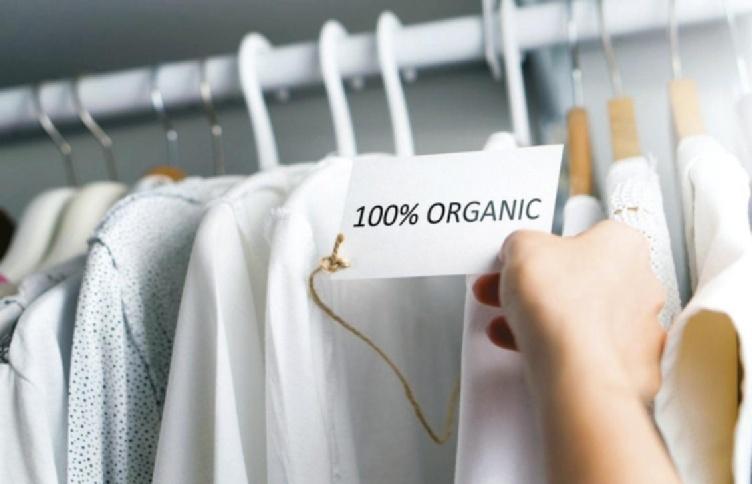
103 Sustainability


ACBC: “UN Global Compact” e certificazioni ISO
La prima B Corp in Italia nel mondo delle calzature ha aderito a UN Global Compact, l’iniziativa su base volontaria promossa da Nazioni Unite con l’obiettivo di incoraggiare aziende di tutto il mondo ad adottare politiche sostenibili e osservanti la responsabilità sociale d’impresa, ed è entrata come nuovo attore all’interno del suo ampio network di imprese aderenti. La vision del Global Compact è promuovere su scala mondiale la creazione di una economia più inclusiva e sostenibile, identificando dei business model in grado di rispettare gli Obiettivi di Sviluppo Sostenibile (SDGs), una serie di 17 obiettivi definiti dall’Organizzazione delle Nazioni Unite che mirano a migliorare in modo decisivo le condizioni di vita di tutta la popolazione mondiale. L’impegno al raggiungimento degli SDGs, insieme al rispetto dei 10 Principi nelle aree dei diritti umani, lavoro, ambiente e anti-corruzione è infatti necessario ai fini della partecipazione all’iniziativa di UN. Oltre a questo importante traguardo, ACBC ha ottenuto l’autorizzazione, seconda azienda in Italia, a rilasciare due delle certificazioni ISO ad aziende terze per poter valutare i fattori determinanti di aziende terze per il conseguimento di due delle certificazioni ISO (International Organization for Standardization) per la gestione della qualità aziendale. La prima, legata al calcolo dello dell’impronta carbonica, permette alle organizzazioni di quantificare le proprie emissioni al fine di attuare delle politiche di Carbon Management. La seconda, connessa alle pratiche di Environmental Management System, definisce i requisiti per contribuire a ridurre significativamente la responsabilità aziendale nei confronti della legislazione ambientale e a promuovere operazioni volte al raggiungimento di obiettivi virtuosi in termini di prestazioni ambientali. Attraverso queste due qualifiche, la green factory milanese si posiziona ancora una volta come un’affidabile label di consulenza per i maggiori attori dello scenario moda nazionale e internazionale, accompagnandoli nello sviluppo sistemi di gestione ambientale e verso un percorso di crescita responsabile.

106
Sustainability
L’azienda italiana, esperta nella progettazione e nella produzione di sneakers sostenibili, raggiunge due importanti traguardi nell’ambito della sostenibilità: aderisce al “UN Global Compact” e diventa seconda in Italia a poter rilasciare due delle certificazioni ISO .

ACBC: “UN Global Compact” and ISO certifications

The Italian company, an expert in the design and production of sustainable trainers, reaches two important milestones in the field of sustainability: joins the “UN Global Compact” and becomes the second in Italy to be awarded two ISO certifications.

Italy’s first B Corp in the world of footwear has joined UN Global Compact, the voluntary initiative promoted by the United Nations with the aim of encouraging companies all over the world to adopt sustainable policies and observe corporate social responsibility, and has entered as a new player lining its extensive network of member companies. The Global Compact’s vision is to promote on a global scale the creation of a more inclusive and sustainable economy by identifying business
models capable of meeting the Sustainable Development Goals (SDGs), a set of 17 goals defined by the United Nations that aim to decisively improve the living conditions of the world’s entire population. Commitment to the attainment of the SDGs, together with compliance with the 10 Principles in the areas of human rights, labour, environment and anti-corruption is indeed necessary for participation in the UN initiative. In addition to this important milestone, ACBC obtained authorisation, the second company in Italy, to issue two of the ISO (International Organisation for Standardisation) quality management certifications to third-party companies. The first, related to carbon footprint calculation, allows organisations to quantify their emissions in order to implement carbon management policies. The second, related to Environmental Management System practices, defines requirements to help significantly reduce corporate responsibility towards environmental legislation and promote operations aimed at achieving virtuous objectives in terms of environmental performance. Through these two qualifications, the Milanese green factory once again positions itself as a reliable consulting label for major players in the national and international fashion scenario, accompanying them in the development of environmental management systems and towards a path of responsible growth.
108
Sustainability


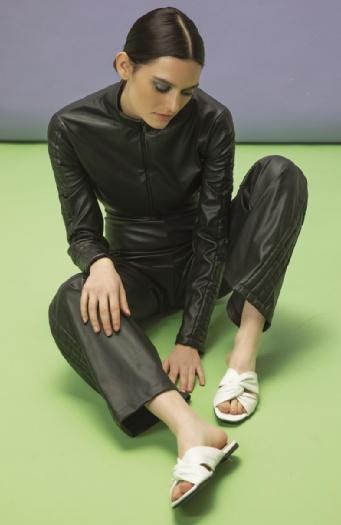
B
Beautiful girls
AF Production
BELLA B.
BELLA B.

BELLA B.


BELLA B.


N AF
Nothing to loose
Production NANO
NANO

NANO


La
L AF Production
Vie en Rose
LYFIT
LYFIT

LYFIT
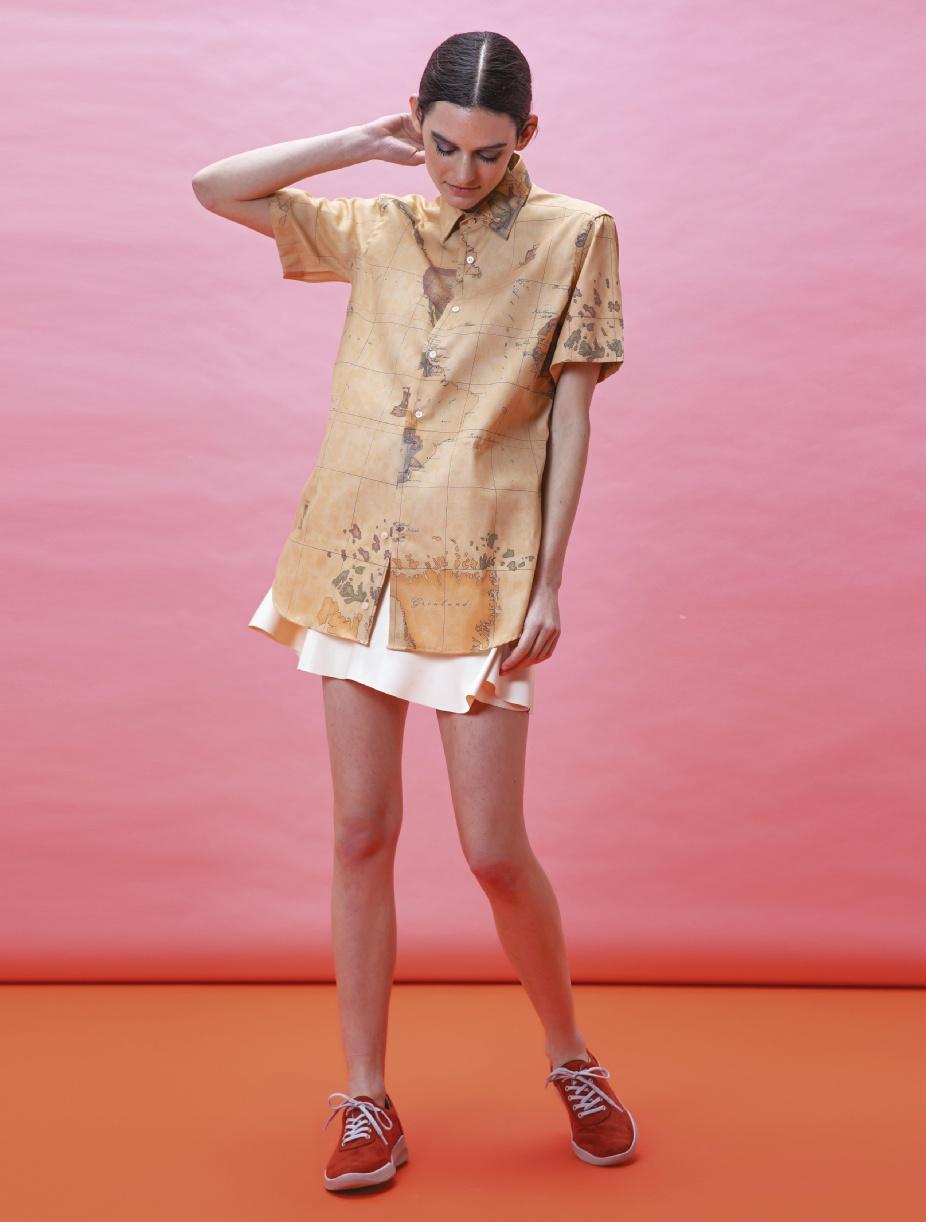
LYFIT

LYFIT
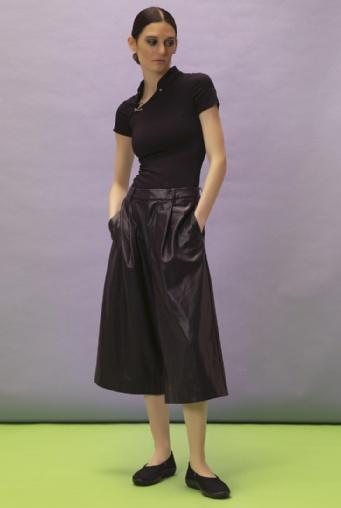

Pure line P AF Production PLUMEX
PLUMEX
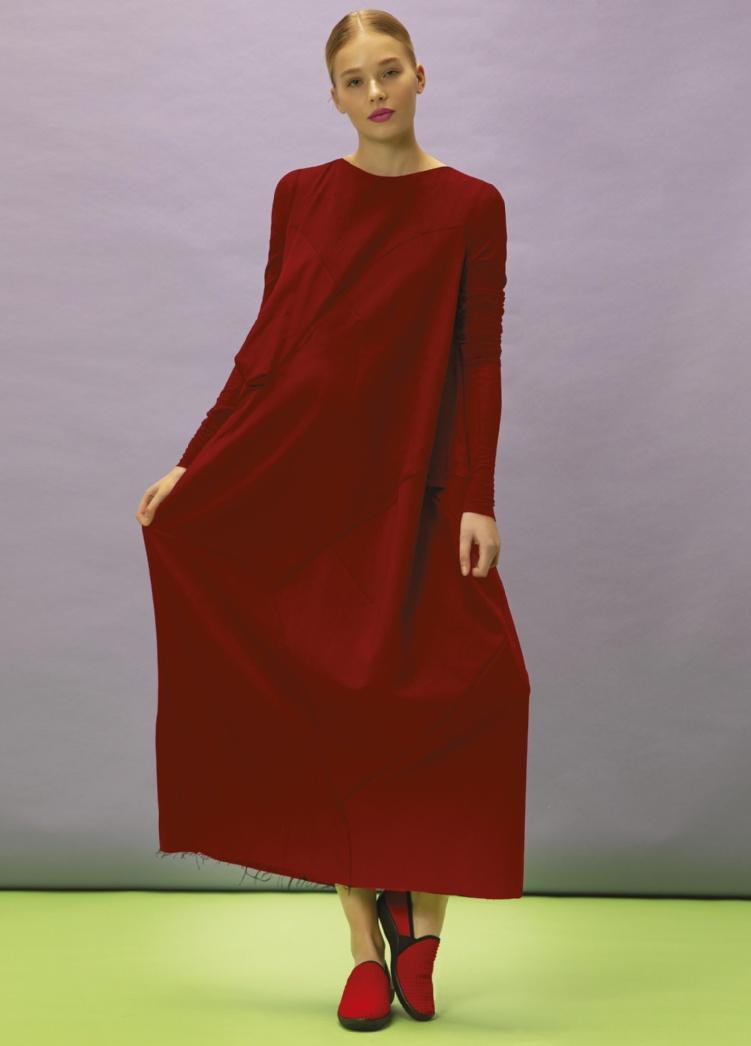
PLUMEX
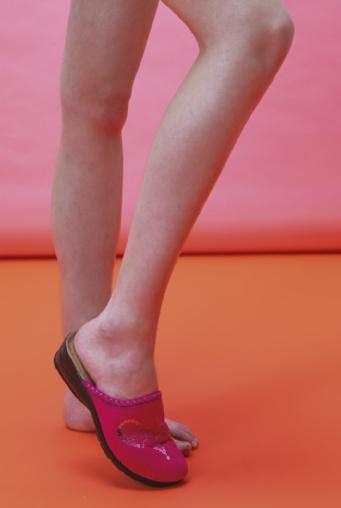
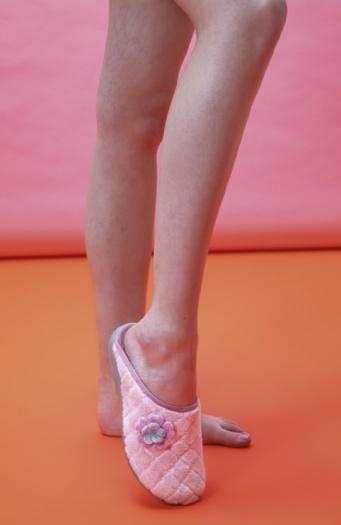
Relaxing day R AF Production EASY WALK EASY WALK

EASY WALK
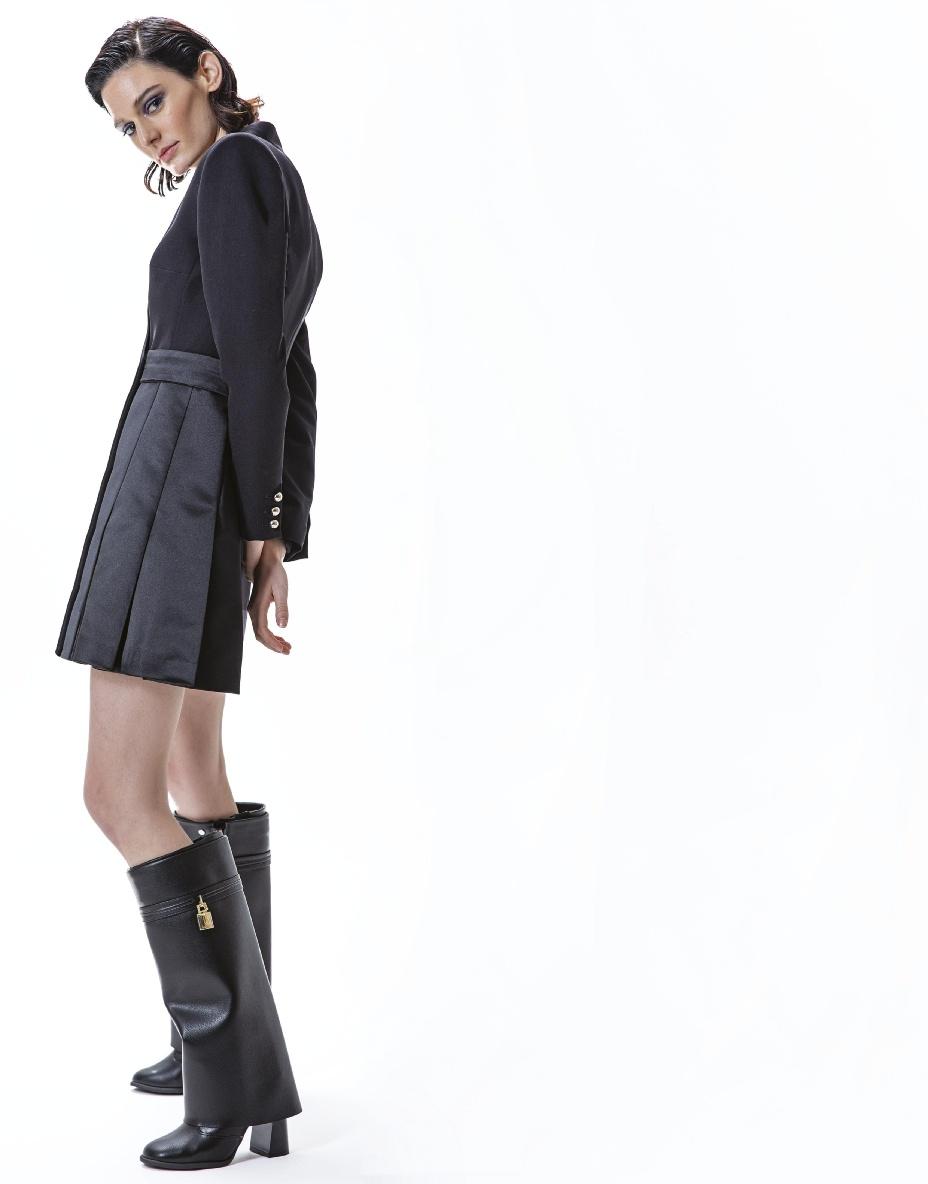
Very
V AF Production VIZZANO
colored day

VIZZANO
VIZZANO

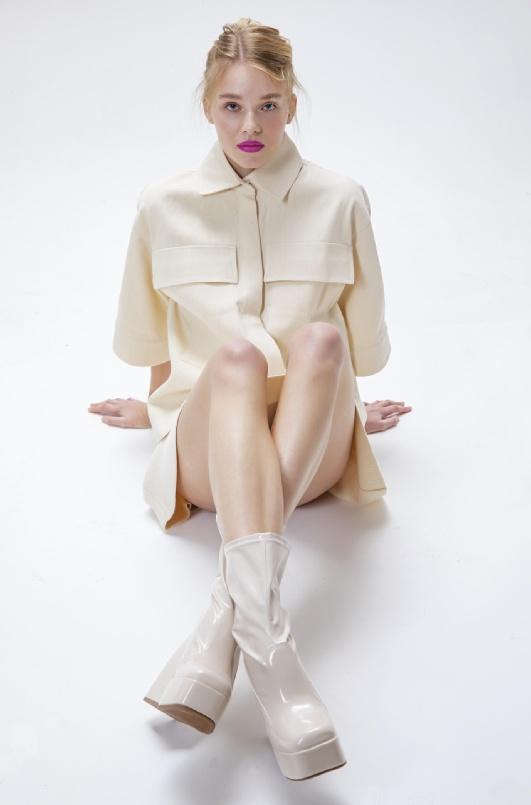
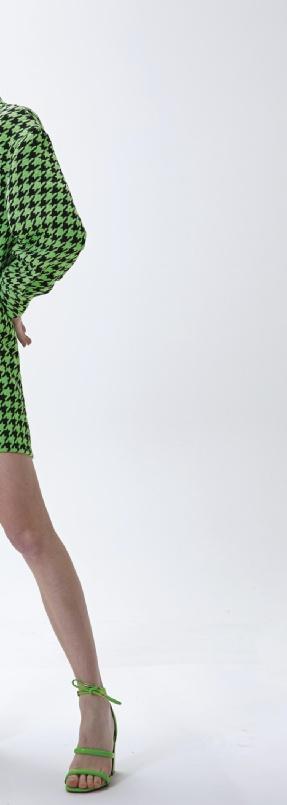
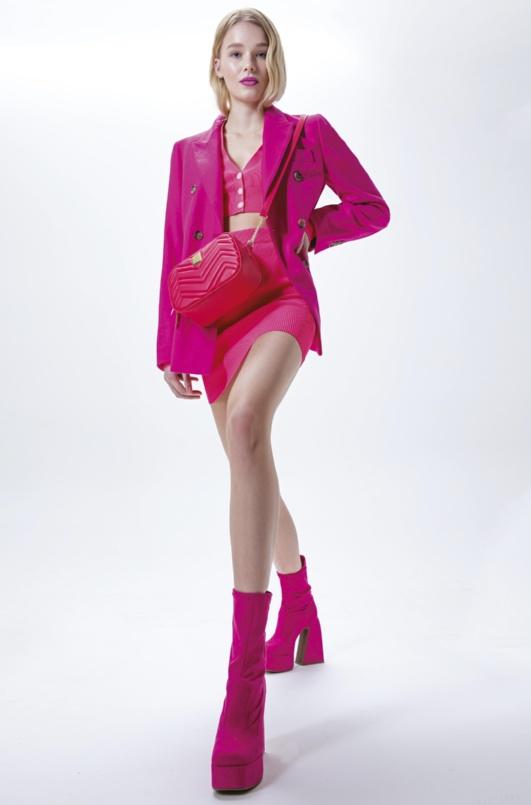
VIZZANO VIZZANO
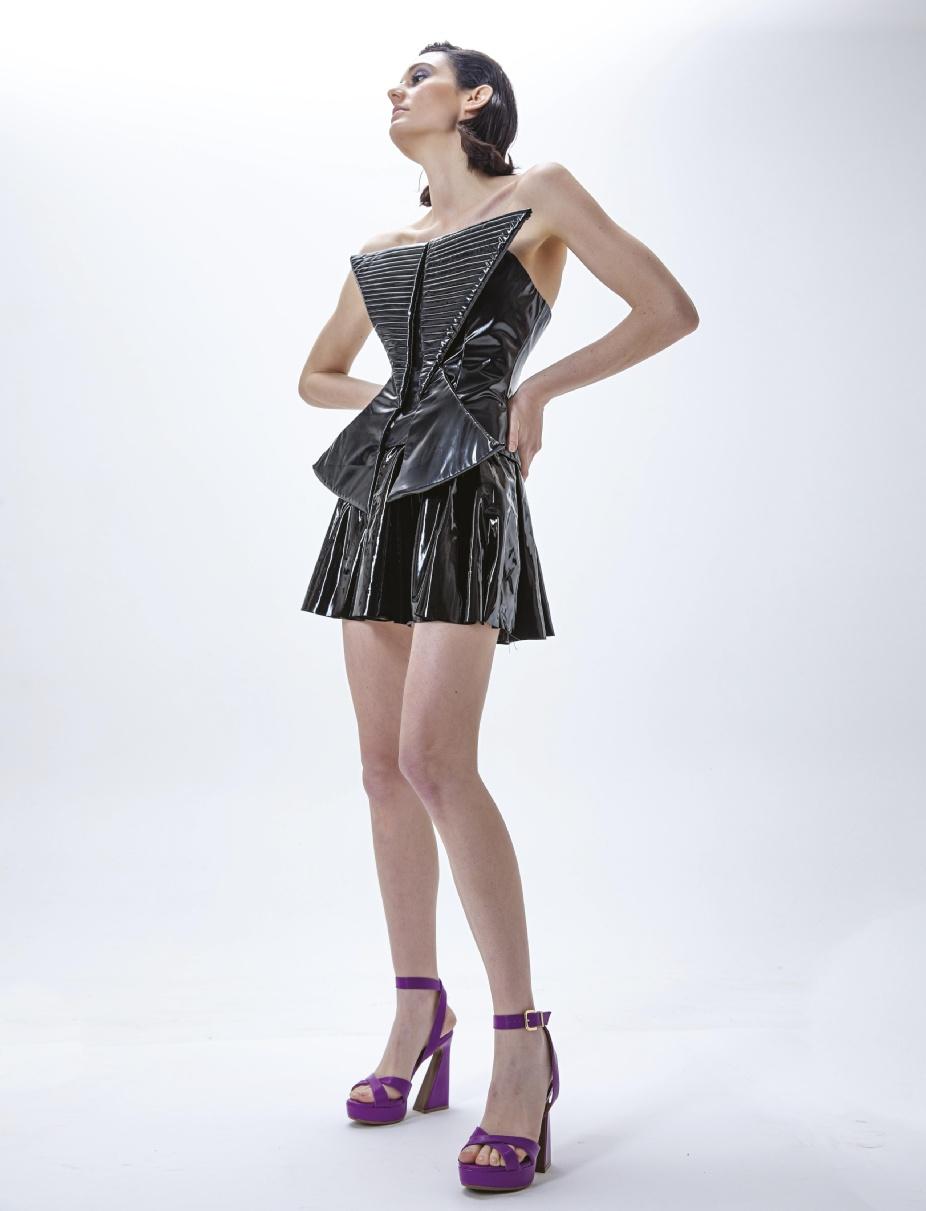
VIZZANO

VIZZANO


M AF Production
My way
MELVIN & HAMILTOM
MELVIN & HAMILTOM
 MELVIN & HAMILTOM
MELVIN & HAMILTOM

 MELVIN & HAMILTOM
MELVIN & HAMILTOM
MELVIN & HAMILTOM
MELVIN & HAMILTOM
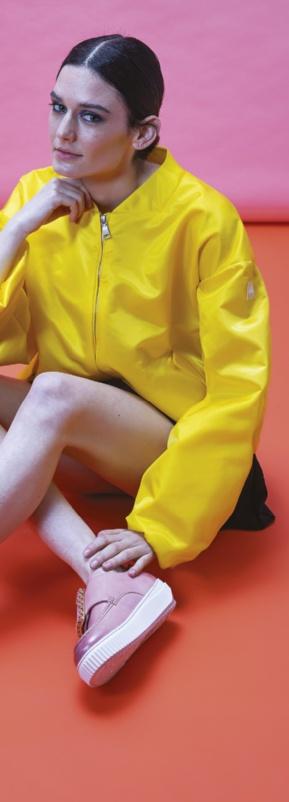
 MELVIN & HAMILTOM
MELVIN & HAMILTOM

Sunny day S AF Production
SAFE STEP

SAFE STEP


Eternal
E AF Production
love
ERAT SHOES ERAT SHOES

ERAT SHOES


Oblivion O AF Production
OBUCA VESNA
OBUCA VESNA
 OBUCA VESNA
OBUCA VESNA

VESNA
OBUCA

OBUCA VESNA
Falor debutta a Gardabags
Specializzata nella lavorazione a intreccio fatta a mano, l’azienda di pelletteria di Castelfiorentino (FI) debutta alla fiera di Riva del Garda con una linea più ‘easy’ destinata alla grande distribuzione.
Oltre 30 anni nel settore della pelletteria e una lavorazione di alto artigianato fanno di Falor una delle più rappresentative realtà della manifattura pellettiera italiana. Spiccano, in particolare, nelle proposte dell’azienda di Castelfiorentino, in provincia di Firenze, le lavorazioni ad intreccio fatte a mano, per le quali Falor è conosciuta e apprezzata sia con il proprio brand, che nella produzione conto terzi per importanti griffe del lusso. Oggi come trent’anni fa, alla guida di Falor troviamo la famiglia Falorni e, come nel passato, il legame con il territorio e il suo saper-fare costituiscono un valore aggiunto apprezzato in tutto il mondo, e in particolare sul mercato giapponese, Usa, tedesco e francese. La produzione è realizzata nel distretto pisano e fiorentino, sia per l’acquisto
dei materiali, che per il design, curato dal team interno, fino alla lavorazione e al confezionamento finale. Con il 2023, Falor debutterà a Gardabags, nell’edizione di gennaio, dove presenterà per la prima volta in una manifestazione fieristica una propria linea più economica e destinata alla grande distribuzione internazionale. Ne abbiamo parlato con il titolare, Giampiero Falorni.
Cosa vi ha spinto a partecipare per la prima volta a Gardabags?
Abbiamo sempre lavorato per il mercato di alta gamma con lavorazioni a intreccio fatte a mano, che hanno decretato il nostro successo in tutti questi anni e nei mercati più esigenti, come quello americano e giapponese. Dal mercato americano ci sono arrivate di recente delle richieste da parte di grandi catene di retail per un prodotto più economico (circa 50 euro al retail) e destinato al grande pubblico. Da qui è nata l’idea di sviluppare una parte di collezione con una modelleria più basica ma accattivante, abbinata comunque a materiali di pregio, e abbiamo scelto una vetrina di primaria importanza come Expo Riva Schuh & Gardabags per proporla agli operatori internazionali.
Cosa vi aspettate da questa prima edizione a Riva del Garda?
Vogliamo vedere come sarà accolta questa nostra proposta dal retail internazionale, sapendo di poter contare su una produzione che abbiamo già perfezionato e che è già disponibile a magazzino per la pronta consegna. L’obiettivo finale è che questo tipo di prodotto più economico possa arrivare a coprire un 5-10% della nostra produzione complessiva.
Come si caratterizza la collezione del prossimo Autunno Inverno 23/24?
Noi realizziamo solo prodotti in pelle e con una modelleria che mantiene la sua attualità nel tempo, pur seguendo la moda. Per il prossimo inverno si confermano i colori classici e neutri come marrone, nero, grigio ma troviamo anche proposte verde bosco e turchese. Di grande tendenza sarà anche lo shearling, per un effetto più ricercato e caldo. Le tracolle faranno da padrone per la loro praticità, e si affermeranno sempre più le piccole dimensioni, soprattutto per le ragazze più giovani, che amano portare con sé l’indispensabile ed essere libere di muoversi nelle varie occasioni della giornata.
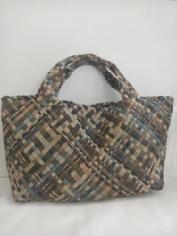

142 Sourcing
Si parla molto oggi di sostenibilità: come viene da voi interpretata?
Da sempre realizziamo i nostri prodotti solo in pelle conciata al vegetale, quindi un materiale naturalmente sostenibile. Siamo inoltre orgogliosi di produrre interamente in Italia, nel distretto toscano, avvalendoci di manodopera specializzata di grande valore. Questa è, e sarà sempre, la nostra forza.
Falor debuts at Gardabags
Specializing in handmade woven workmanship, the Castelfiorentino (FI) leather goods company debuts at the Riva del Garda fair with a more 'easy' line intended for large-scale distribution.
More than 30 years in the leather goods industry and high craftsmanship make Falor one of the most representative Italian leather goods manufacturers. Standing out, in particular, in the proposals of the company from Castelfiorentino, in the province of Florence, are the handmade woven workings, for which Falor is known and appreciated both with its own brand and in contract manufacturing for important luxury brands. Today, as thirty years ago, we find the Falorni family at the helm of Falor, and, as in the past, the link with the territory and its know-how constitute an added value appreciated all over the world, and in particular in the Japanese, U.S., German and French markets. Production is carried out in the Pisan and Florentine districts, both for the purchase of materials and for the design, taken care of by the lining team, up to the processing and final packaging. With 2023, Falor will make its debut at Gardabags, in the January edition, where it will present for the first time at an exhibition event its own line, which is more economical and intended for large international distribution. We talked about it with the owner, Giampiero Falorni.
What prompted you to participate in Gardabags for the
first time?
We have always worked for the high-end market with handmade woven workmanship, which has decreed our success over all these years and in the most demanding markets, such as the American and Japanese markets. From the American market we have recently received requests from large retail chains for a product that is cheaper (about 50 euros at retail) and intended for the general public. This gave rise to the idea of developing a part of the collection with a more basic but appealing modeling, combined however with valuable materials, and we chose a major showcase like Expo Riva Schuh & Gardabags to propose it to international operators.
What do you expect from this first edition in Riva del Garda?
We want to see how this proposal of ours will be received by international retail, knowing that we can count on a production that we have already perfected and that is already in stock for ready delivery. The ultimate goal is for this cheaper type of product to make up 5-10% of our total production.
How do you characterize the upcoming Fall Winter 23/24 collection?
We make only leather products and with modeling that maintains its timelessness while following fashion. For next winter we confirm classic and neutral colors such as brown, black, gray but we also find forest green and turquoise proposals. Also very trendy will be shearling, for a more refined and warm effect. Shoulder bags will dominate because of their practicality, and small sizes will become more and more popular, especially for younger girls, who like to carry the essentials and be free to move around on the various occasions of the day.
There is a lot of talk today about sustainability: how is it interpreted by you?
We have always made our products only from vegetable-tanned leather, thus a naturally sustainable material. We are also proud to produce entirely in Italy, in the Tuscan district, using skilled labor of great value. This is, and always will be, our strength.
143 Sourcing
FALOR
La rivoluzione Punk ha cambiato anche il mondo della moda

I segni del movimento punk sono diventati simboli caratteristici non solo del mondo musicale, sociale e della politica, ma anche dell’estetica attraverso una moda anticonformista. Ancora oggi, l’influenza del punk continua ad essere di ispirazione per gli stilisti.
Il cuore della rivoluzione punk che ha cambiato per sempre la storia della moda, della musica, dell’arte e della cultura occidentale in generale è un piccolo negozietto dal nome evocativo “Sex” al 430 Kings Road a Londra, meta ancora oggi di pellegrinaggio da parte di fashionisti provenienti da ogni parte del mondo. È qui che, grazie all’incontro fortunato tra Vivienne Westwood, l’ultima icona punk vivente, e Malcom McLaren, futuro manager dei Sex Pistols, prende vita una rivoluzione giovanile di portata incalcolabile.
I segni distintivi che caratterizzavano il movimento punk - nato agli albori degli anni Settanta negli Stati Uniti ma che ha avuto la sua consacrazione nella seconda metà del decennio sulle sponde della Manica - sono diventati simboli universali di una rivolta non solo musicale ma anche sociale e politica. Spille da balia, creste, borchie, abiti strappati e scuciti, stampati e decolorati tanto cari a Vivienne Westwood, prima di diventare moda e costume, sono stati un modo d'essere e di vedere il mondo ribelle e anticonformista.
Nato come fenomeno inizialmente musicale, grazie a gruppi leggendari come i Sex Pistols, The Clash e Ramones, è nella moda che il movimento trova la sua consacrazione universale. L’utopia degli hippie, che sognavano un mondo più libero e giusto, è ormai al tramonto. Il punk è stato il contraltare del benessere economico, il frutto di una società benestante che ha partorito dei figli in rivolta. Nessuna illusione e nessun futuro, nessuna ingenuità e nessun ritorno alla natura, nel pieno della recessione inglese degli anni Settanta, i giovani punk delusi ed arrabbiati ne riflettevano il sentiment nelle parole e nell’abbigliamento. Pelle, borchie, catene, elementi anche vicini al mondo fetish ma indossati con più durezza, pantaloni bondage e corsetti, latex, frustini, t-shirt con scritte provocatorie, capi fai da te che incorporano indifferentemente tubi, tappi o catene, diventano gli elementi portanti di uno street style intriso di critica sociale e di infrazione dei tabù.
144 Trends
Ancora tutto quell’immaginario, depotenziato dalla sua forza dirompente, è sinonimo di ribellione sulle passerelle e nelle collezioni degli stilisti dell’intero pianeta. Interessante è, ad esempio, la fortuna che ha avuto la spilla da balia, indossata ovunque e in qualunque modo, come face jewel per trafiggere i volti dei giovani oppure portata sulle magliette e i pantaloni, che, pur rimanendo il simbolo del movimento, diventerà un elemento decorativo di lusso sulle passerelle dei big della moda come nell’iconico abito disegnato nel 1994 da Versace e indossato da Elizabeth Hurley per la première del film "Quattro Matrimoni e un Funerale". Tutta l’estetica punk, pur indebolita dalla sua carica eversiva, continua ad essere fonte inesauribile di ispirazione per stilisti di ogni generazione. Basti pensare a quanto visto sulle passerelle Primavera/Estate 2023. Scontato è l’omaggio di Andreas Kronthaler for Vivienne Westwood che traccia una linea di continuità facendo proprio il motto della stilista inglese “Compra meno, scegli meglio e fai durare a lungo ciò che compri. Punta sulla qualità, non la quantità”, riattualizzando materiali di archivio e scarti di tessuti già utilizzati per porre l’accento sulla questione della salvaguardia del Pianeta e dell’uso smodato del fast fashion. Via libera, quindi, alla celebrazione della storia del brand attraverso corsetti, giarrettiere, short coat e gli immancabili platform altissimi perfetti sia per lui che per lei. È un approccio al punk decisamente più colorato e quasi carnevalesco quello che abbiamo visto sulla passerella parigina di Thom Browne per la prossima Primavera/ Estate. Lo stilista americano presenta un tripudio di abiti drappeggiati tempestati di ricami dorati, balze sfavillanti che definiscono cappotti in taffetà, piume, corsetti, intimo a vista e creste altissime sulla testa. Balenciaga, inve-

ce, gioca sul contrasto tra visione apocalittica e accessori funny come la borsa a forma di orsetto punk indossata da Bella Hadid in passerella.
La pelle è protagonista assoluta, ma in veste super sexy e abbinata alla lingerie. Pelle che ritorna in maniera prorompente da Gucci nella versione più classica del chiodo con la zip obliqua; nel doppiopetto di Burberry; nella variante con le frange di Versace e in quella borchiata di Annakiki. Tutte in chiave rigorosamente sexy: con abiti lingerie, microgonne o body che lasciano poco all’immaginazione. La provocazione, elemento inequivocabile del punk, resta in primo piano ma senza prendersi troppo sul serio. Una fortuna, quella del punk che non accenna a diminuire come dimostra l’apertura imminente, prevista per gennaio 2023, di un museo, il Punk Rock Museum a Las Vegas, interamente dedicato alla storia del movimento. Al suo interno saranno esposti migliaia di oggetti e memorabilia delle più importanti band punk della storia, ma punterà a coinvolgere i visitatori anche attraverso esperienze interattive, come la possibilità di suonare alcuni strumenti utilizzati dai più grandi musicisti punk.
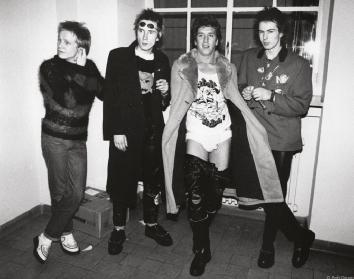

145 Trends
Elizabeth Hurley per la première del film "Quattro Matrimoni e un Funerale”
Vivienne Westwood punk fashion
Sex Pistols
ThePunkrevolutionalsochanged the world of fashion

The marks of the punk movement have become characteristic symbols not only of the musical, social and political worlds, but also of aesthetics through non-conformist fashion. Even today, the influence of punk continues to inspire fashion designers.
The heart of the punk revolution that forever changed the history of fashion, music, art, and western culture in general is a small shop with the evocative name 'Sex' at 430 Kings Road in London, still a pilgrimage destination for fashionistas from all over the world. It was here that, thanks to the fortunate meeting between Vivienne Westwood, the last living punk icon, and Malcolm McLaren, the future manager of the Sex Pistols, a youth revolution of incalculable scope was born.
The distinctive signs that characterised the punk movementborn at the dawn of the 1970s in the United States but which had its consecration in the second half of the decade on the shores of the English Channel - became universal symbols of a revolt that was not only musical but also social and political. Safety pins, crests, studs, ripped and unravelled, printed and discoloured clothes so dear to Vivienne Westwood, before becoming fashion and custom, were a way of being and seeing the world that was rebellious and non-conformist.

Initially born as a musical phenomenon, thanks to legendary groups such as the Ramones, The Clash and Sex Pistols, it is in fashion that the movement finds its universal consecration. The utopia of the hippies, who dreamed of a freer and fairer world, is now in its twilight years. Punk was the counterpart of econo-
mic prosperity, the fruit of an affluent society that bore children in revolt. No illusions and no future, no naivety and no return to nature, in the midst of the British recession of the 1970s, disappointed and angry young punks reflected the sentiment in their words and clothing. Leather, studs, chains, elements even close to the fetish world but worn with more toughness, bondage trousers and corsets, latex, whips, t-shirts with provocative writing, DIY garments that indifferently incorporated pipes, caps, or chains, became the main elements of a street style steeped in social criticism and taboo breaking. Again, all that imagery, stripped of its disruptive force, is synonymous with rebellion on the catwalks and in the collections of stylists all over the planet. Interesting is, for example, the fortune that the safety pin has had, worn everywhere and in any way, as face jewellery to pierce the faces of young people or worn on T-shirts and trousers, which, while remaining the symbol of the movement, will become a luxury decorative element on the catwalks of the big names in fashion, as in the iconic dress designed in 1994 by Versace and worn by Elizabeth Hurley for the première of the film “Four Weddings and a Funeral”. The whole punk aesthetic, though weakened by its subversive charge, continues to be an inexhaustible source of inspiration for designers of every generation. Just think of what we saw on the Spring/ Summer 2023 catwalks. The homage of Andreas Kronthaler for Vivienne Westwood is obvious, tracing a line of continuity by making the British designer's motto "Buy less, choose better and make what you buy last longer. Aim for quality, not quantity", re-actualising archive materials and fabric scraps already used
146 Trends
Elisabeth Hurley in Versace

to emphasise the issue of safeguarding the Planet and the immoderate use of fast fashion. Green light, then, to the celebration of the brand's history through corsets, garters, short coats and the unfailingly high platforms perfect for both him and her. It is a decidedly more colourful and almost carnivalesque approach to punk that we saw on Thom Browne's Parisian catwalk for next Spring/Summer. The American designer presented a riot of draped dresses studded with gold embroidery, glittering flounces defining taffeta coats, feathers, corsets, exposed underwear, and head-high crests. Balenciaga, on the other hand, plays on the contrast between apocalyptic vision and funny accessories such as the punk bear bag worn by Bella Hadid on the catwalk. Leather is the absolute protagonist, but in a super sexy guise and combined with lingerie. Leather that returns in a bursting way at Gucci in the more classic version of the jacket with the oblique zip; in Burberry's double-breasted jacket; in Versace's fringed variant and in Annakiki's studded one. All in a strictly sexy key: with lingerie dresses, micro-skirts or leotards that leave little to the imagination. Provocation, an unequivocal element of punk, remains in the foreground but without taking itself too seriously. Punk's fortunes show no sign of slowing down, as demonstrated by the imminent opening, scheduled for January 2023, of a museum, the Punk Rock Museum in Las Vegas, entirely dedicated to the history of the movement. Inside, thousands of objects and memorabilia from the most important punk bands in history will be on display, but it will also aim to involve visitors through interactive experiences, such as the possibility of playing some of the instruments used by the greatest punk musicians.
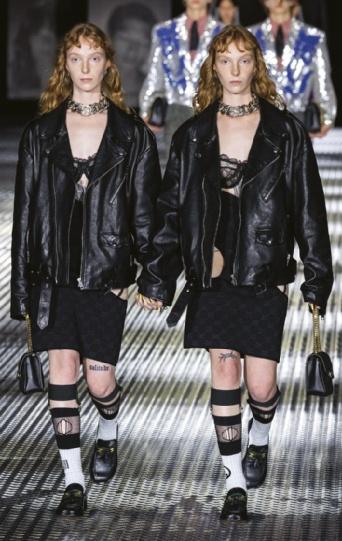



148
Thom Browne S/S 2023
Balmain S/S 2023
Vetements S/S 2023
Trends
Gucci S/S 2023


Godersi i migliori momenti in famiglia con BEPPI
Da oltre 40 anni l’azienda portoghese Planitoi porta nel mondo la qualità e il comfort delle sue calzature pensate per calzare tutta la famiglia, nei diversi momenti della giornata e nelle diverse occasioni di vita.
Scarpe per tutta la famiglia e per tutte le occasioni: è questa la mission che Planitoi, con i suoi marchi BEPPI e BEPPI KIDS, porta avanti con determinazione e professionalità dal 1981, sempre con un’attenzione particolare alla qualità, all’eleganza e al comfort. Con un catalogo che vanta oltre 1.800 prodotti, infatti, BEPPI offre calzature e accessori per tutte le età e gli stili di vita ed occasioni della giornata. Questa completezza ha permesso all’azienda portoghese di essere oggi presente con successo in 72 Paesi nel mondo, in Europa, Africa, Medio Oriente, Asia e Sud America. La crescita sui diversi mercati è garantita da un mix sapiente di canali di distribuzione e dalla presenza sul territorio. È, inoltre, disponibile della clientela uno Showroom permanente, un luogo dove sono proposte le ultime novità di collezione e un’ampia gamma di articoli e stili. Contenuto moda e un rapporto equilibrato tra qualità e prezzo sono la garanzia per la clientela di potersi godere i migliori momenti di vita in famiglia con l'originalità e la qualità BEPPI ai propri piedi.
For more than 40 years, the Portuguese company Planitoi has been bringing to the world the quality and comfort of its footwear designed to fit the whole family, at different times of the day and on different occasions in life.

Shoes for the whole family and for all occasions: this is the mission that Planitoi, with its BEPPI and BEPPI KIDS brands, has been pursuing with determination and professionalism since 1981, always with a focus on quality, elegance and comfort. Indeed, with a catalogue boasting over 1,800 products, BEPPI offers footwear and accessories for all ages, lifestyles and occasions of the day. This comprehensiveness has enabled the Portuguese company to be successfully present today in 72 countries worldwide, in Europe, Africa, the Middle East, Asia and South America. Growth in the different markets is ensured by a skilful mix of distribution channels and local presence. A permanent showroom is also available to customers, a place where the latest collection novelties and a wide range of articles and styles are presented. Fashion content and a balanced relationship between quality and price are the guarantee for customers that they can enjoy the best moments of family life with BEPPI originality and quality at their feet.
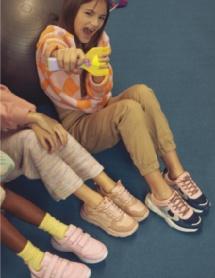
Market 151
EnjoythebestfamilymomentswithBEPPI

FOTOSHOE 30 TRENDS
Spring/Summer 2024 - Inspirations, themes, materials and colours

Per avere accesso allo studio completo delle tendenze per la Primavera/Estate 2024 (ispirazioni, materiali, colori Pantone…) accedi al sito arsutoriastudio.com
To get access to the complete trend study for Spring/Summer 2024 (inspirations, materials, Pantone colors...) log in at arsutoriastudio.com
S/S 2024
MAKING WAVES IN MOTION
Surfing, rappresentail mood più attuale che unisce lo spirito di avventura, la libertà del movimento, la sfida, la ricerca per l’esplorazionee l’innovazione della tecnica. Per sfidare il vento, l’acqua, l’equilibrio, la gravità, il peso, per volare, ovvero“surfare”, cavalcando le onde dell’acqua e le dimensioni del web.
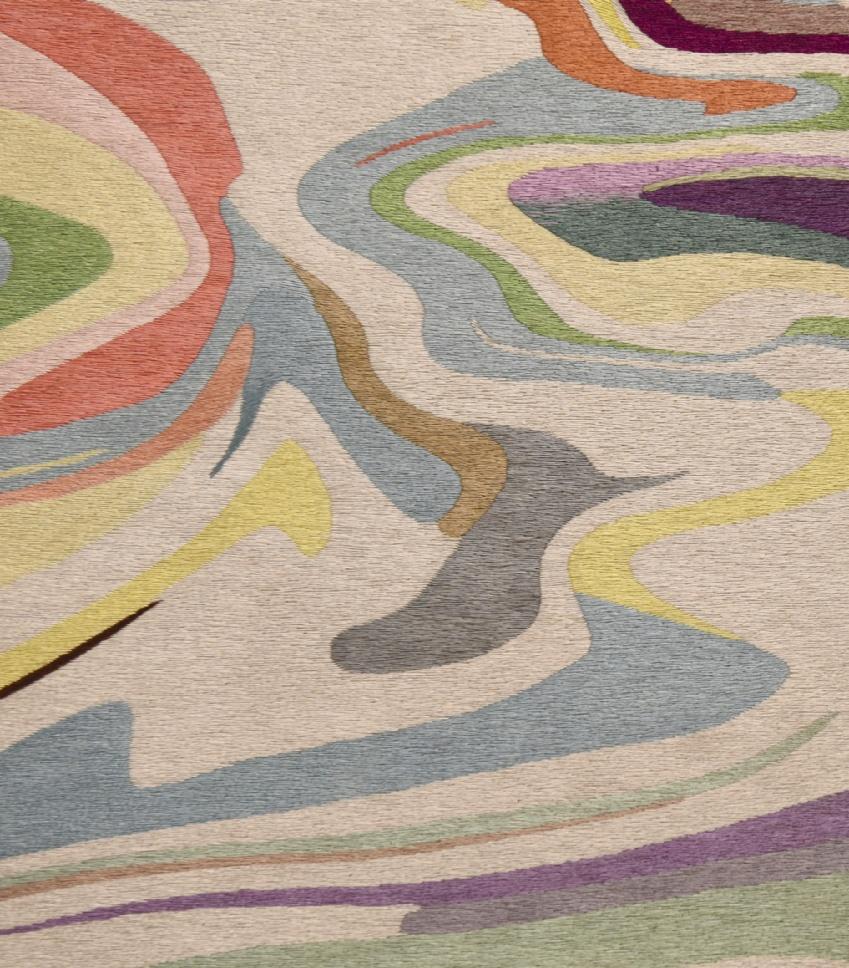
154 CONCEPT: SURFING

155 S/S 2024 WAVES, BALANCE, GRAVITY, WATER, HYDRODYNAMISM, FLUIDITY, WEIGHTLESS, BUOYANCY, DENSITY.



156 CONCEPT: SURFING 3D THERMOPRINTED
STRETCH WAVINGS


157 S/S 2024
ULTRASOUND INTARSIA
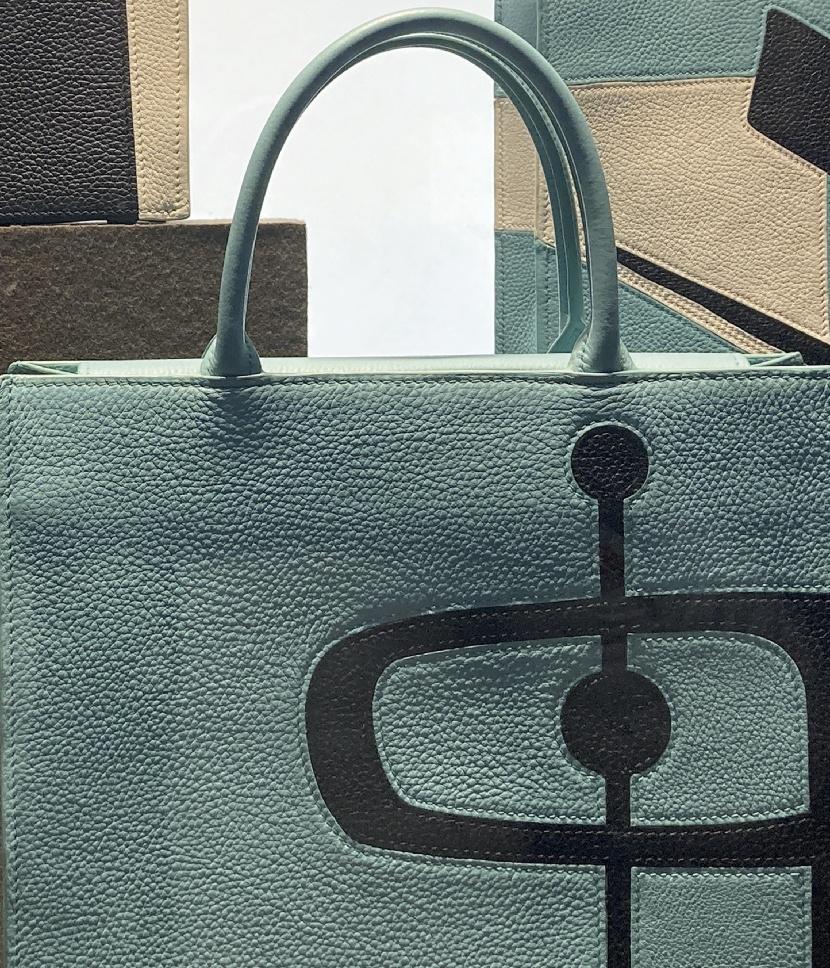
158 CONCEPT: SURFING

159 A/W 2023/24
ROUNDED ESAGONAL LINES

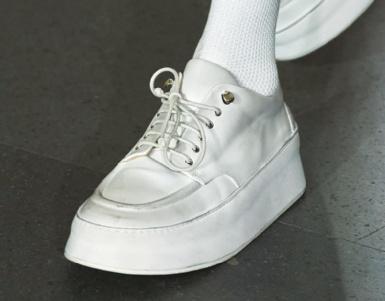
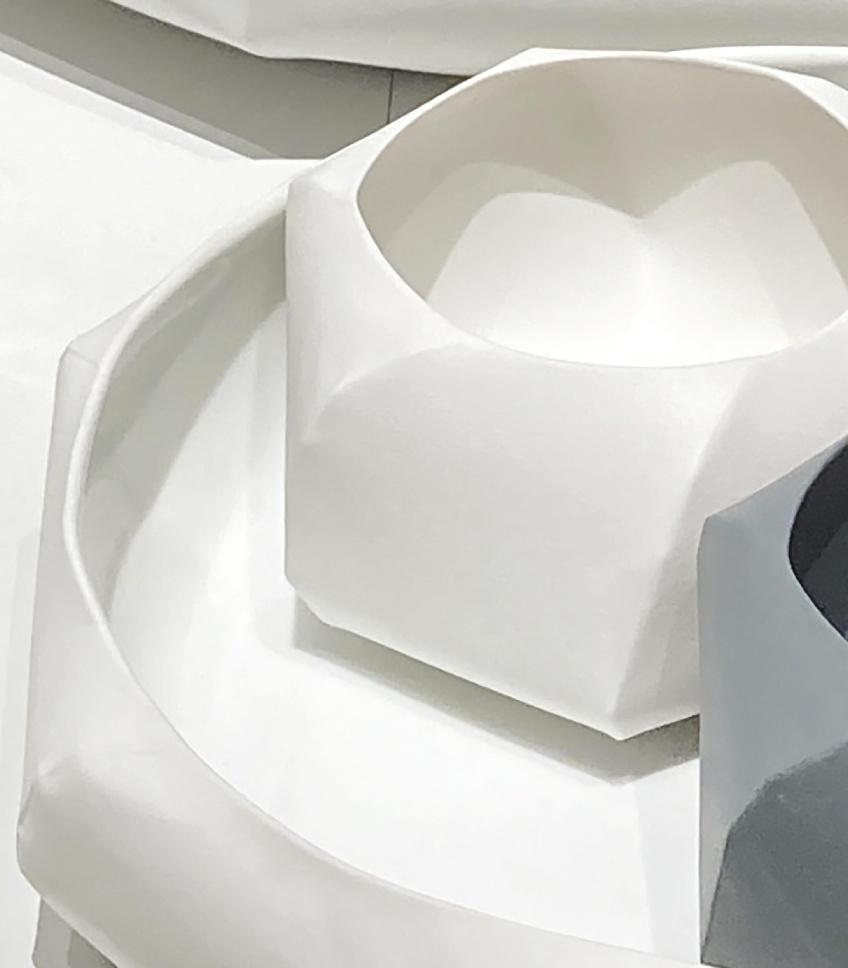
160 CONCEPT: SURFING

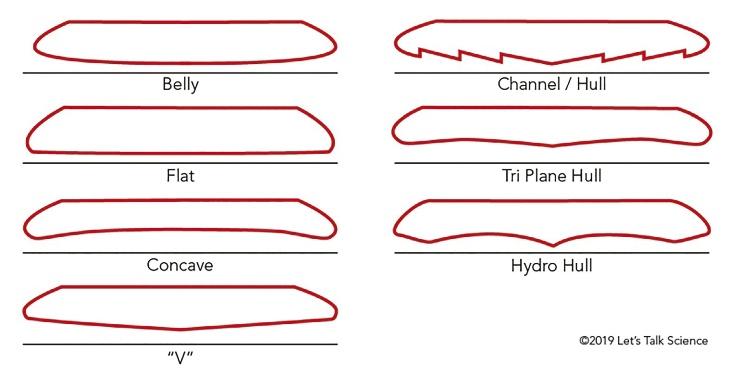
161 S/S 2024

162 CONCEPT: SURFING
BLUBBING SHAPES
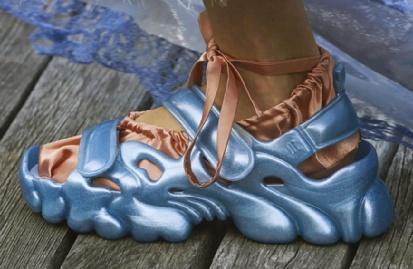
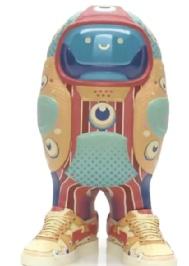

163 S/S 2024
AI SCRATCH PATTERNS


164 GET ISPIRED BY ALGORITHM DESIGN


165 S/S 2024

166 GET ISPIRED BY ALGORITHM DESIGN
SAVAGE PRINTS AND JAQUARDS


167 S/S 2024
ALUMINIUM HOLOGRAM
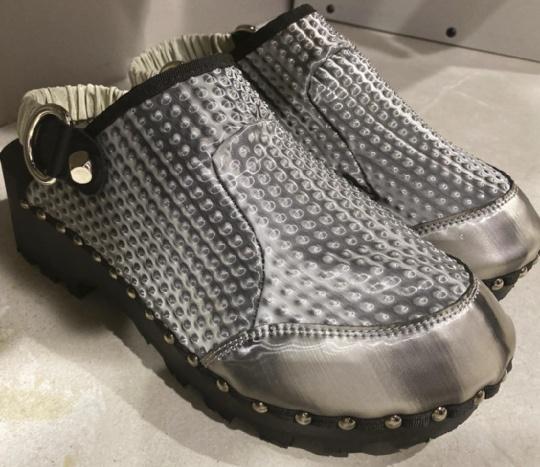
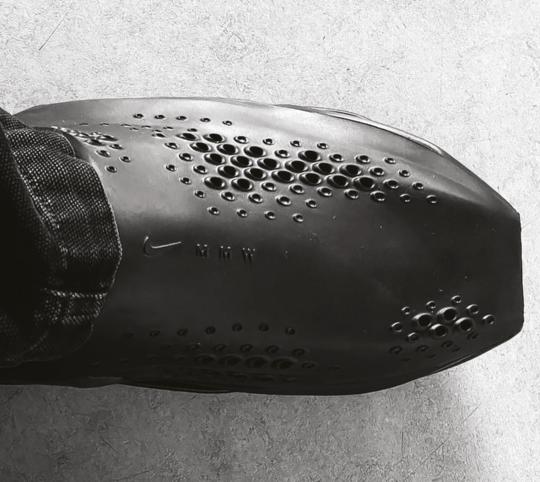

168 EXPLORE METALLICS

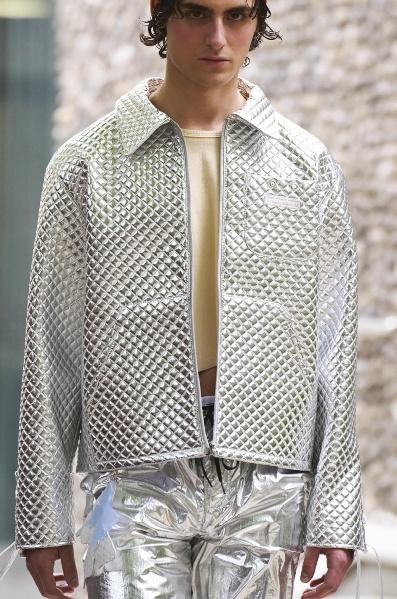
169 S/S 2024
YARNS AND BLEACHING
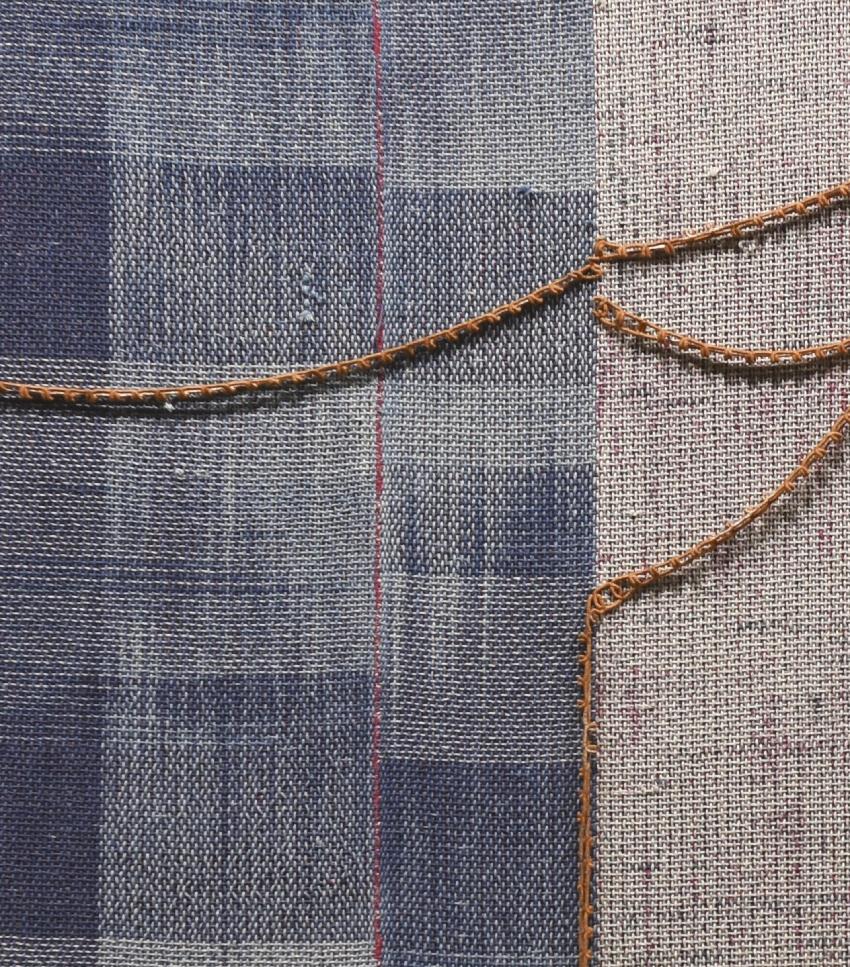
170 UPCYCLE ORGANICS MATERIALS


171 S/S 2024



172 UPCYCLE ORGANICS MATERIALS
SAND TEXTURES
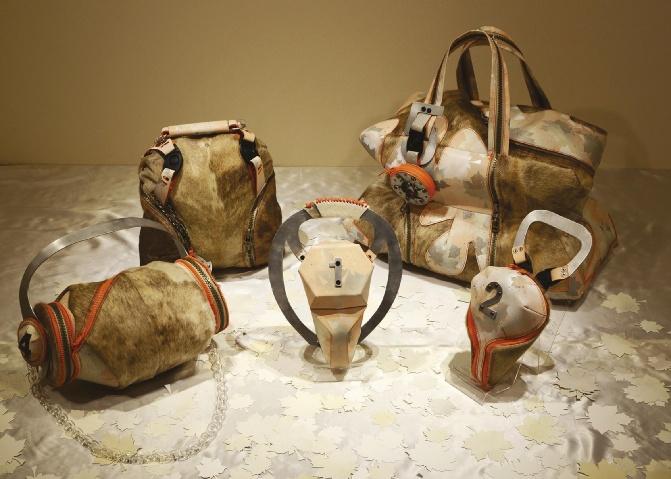

173 S/S 2024
Design inspirations from the past, present and future
Many of the top shoe and bag designers worldwide use Arsutoria Studio to create their new collections and to find new market opportunities.
We have a simple mission: help you turn your ideas into products




A.S.S.O. S.p.A. tel. +39 0734.628.940 info@assoitaly.it www.assoitaly.it pag. 147
ANCI SERVIZI s.r.l. tel. +39 02.438.291 info@assocalzaturifici.it - info@themicam.com www.assocalzaturifici.it - www.themicam.com pag. 176
APICCAPS tel. +351 22.507.41.50 aicep.milan@portugalglobal.pt www.apiccaps.pt pag. 45
BEPPI - PLANITOI S.A. tel. +351 256.337.500 infoplanitoi@beppi.com.pt www.beppi.com.pt pag. 16-17
Bioeco by ARKA 1927 tel. +48 33 876.55.33 info@bioeco-shoes.com www.bioeco-shoes.com Cover
CFTE
CHINA FOREIGN TRADE GUANGZHOU EXHIBITION CO., LTD. tel. +86 20.891.281.18 shaoyz@fairwindow.com.cn www.fairwindow.com/index pag. 107
CHINA LEATHER PUBLISHER CO. LTD. tel. +86 10-64337808 / 64337812 jsltc-china@leather365.com www.leather365.com pag. 109
CLUB SHOES s.r.l. tel. +39 0583.920.118 info@clubshoessrl.com www.clubshoessrl.com pag. 9
EASYWALK - I.G.F. s.r.l. ITALIAN GROUP OF FACTORIES tel. +39 0883.536.246 info@igfshoes.it - www.easywalk.it pag. 91
ECOBIO CALZATURE - GLOBAL FASHION s.r.l. tel. + 39 080.926.35.31 - 0883.950.034 info@globalfashion.it www.ecobiocalzature.com pag. II cover
EXPO RIVA SCHUH - RIVA DEL GARDA FIERECONGRESSI S.p.A. tel. +39 0464.520.000 info@exporivaschuh.it www.exporivaschuh.it pag. III cover
FLY FLOT s.r.l. tel. +39 030.968.900 info@flyflot.it - www.flyflot.it pag. 99
FLY s.r.l. tel. + 39 0422.363.097 info@flygroup.biz - www.flygroup.biz pag. 177
G&F CO., LTD. Fujian Foreign Economic Service Trade Corp. tel. +86 591.878.358.32 zyj@gffairs.com - www.gffairs.com pag. 152
GUANGZHOU NEWTOP EXHIBITION CO. LTD. tel. +86 13808878046 13808878046@189.cn pag. 150
I.L.M. INT L LEATHER GOODS FAIR - MESSE OFFENBACH GmbH tel. +49 69.82.97.55.0 info@messe-offenbach.de www.messe-offenbach.de pag. 41
IMAC S.p.A. tel. +39 0734.938.721 info@imac-italia.it - www.imacspa.com pag. 3
INTERNATIONAL FOOTWEAR & LEATHER SHOW - ACICAM tel. +57 281.64.00 acicam@acicam.org - www.ifls.com.co pag. 97
L&C (XIAMEN) GROUPXIAMEN L&C INT’L EXHIBITION CO., LTD. tel. +86 592.226.10.26 chenshuning.m@lcfairs.com info@lcfairs.com - www.lcfairs.com pag. 149
LYFIT info@lyfitshoes.com - www.lyfitshoes.com pag. 7
Q SEVEN s.a.r.l. tel. +212 662.115.486 salhagr@gmail.com pag. 11-175
REFRESH by MARSAN FOOTWEAR S.L. tel. +34 968.718.313 info@refreshoes.com - www.refreshoes.com pag. Sottocover
SHOES DUSSELDORF tel. +49 211.43.96.01 info@igedo.com - www.gallery-shoes.com pag. 29
SYARIKAT PERUSAHAAN JOOI BERSAUDARA SDN BHD www.asadi.com.my pag. 80-81
TASD Fuarcilik A.S. tel. +90 212.549.71.71 info@aymod.com - www.aymod.com pag. 23
VESNA SHOES (Obuca Vesna) tel. +381 63. 255.777 - 62.164.53.25 vesna.footwear@gmail.com www.obucavesna.rs pag. 4-5
WISTEFF SCHUH tel. +39 0733 262637 wisteffschuh@mercurio.it pag. 104-105
XTI FOOTWEAR S.L. tel. +34 968.718.313 xti@xti.es www.xti.es pag. IV cover
178
Addresses
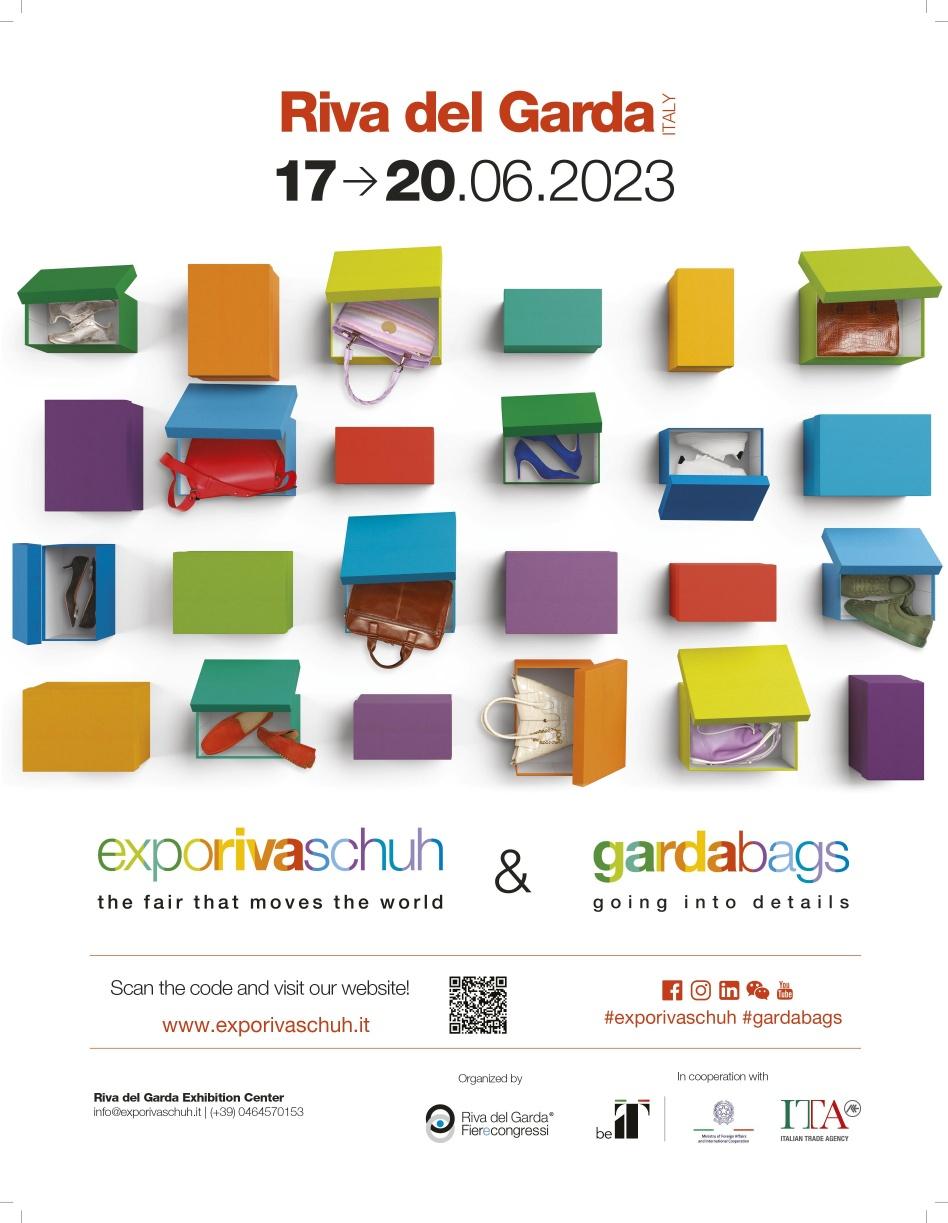
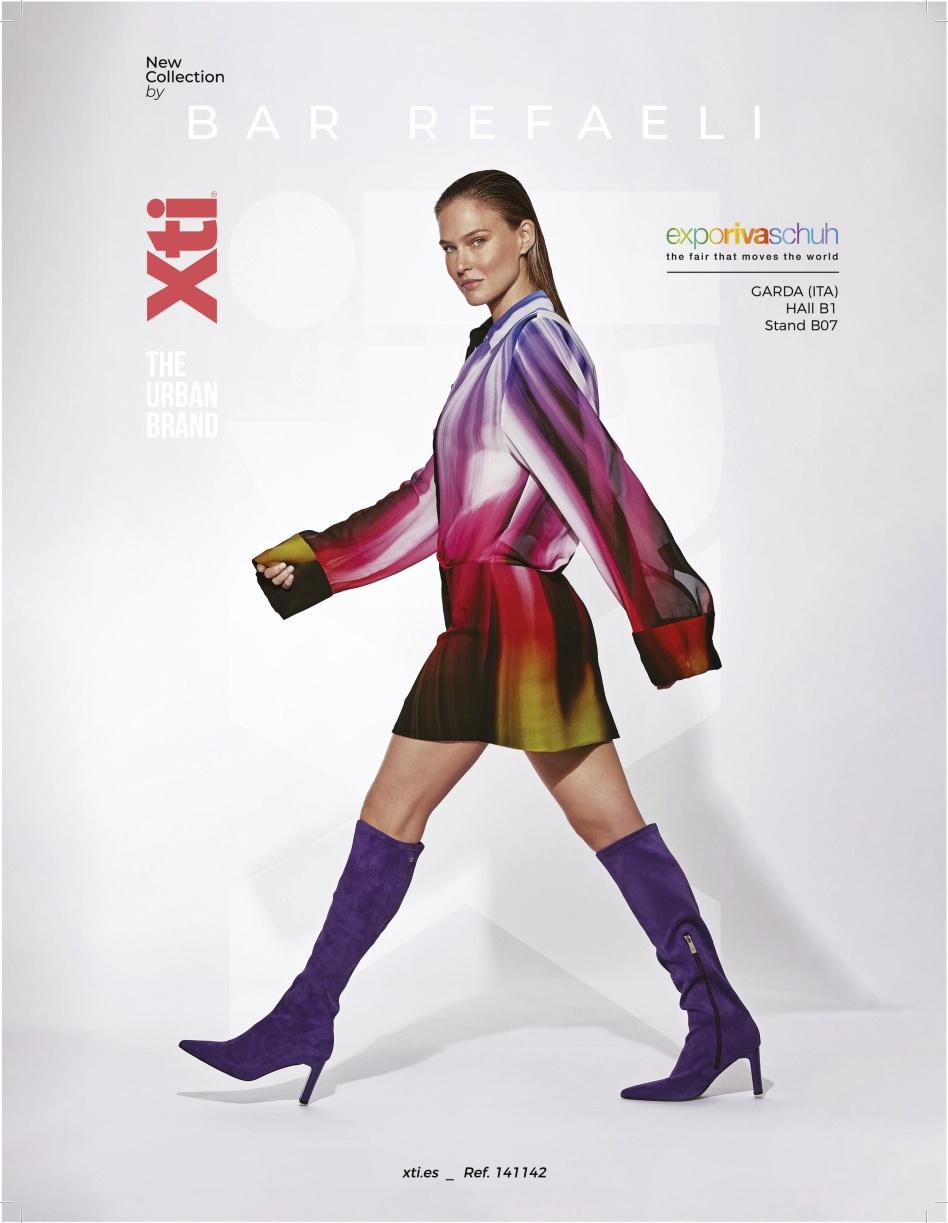
































































 ALEXANDROS VASDEKIS Arsutoria School - Alumni 2022
ALEXANDROS VASDEKIS Arsutoria School - Alumni 2022

 VINCENZO CARPENTIERI Arsutoria School - Alumni 2022
VINCENZO CARPENTIERI Arsutoria School - Alumni 2022



 KARISMA NANAVATI Arsutoria School - Alumni 2022
KARISMA NANAVATI Arsutoria School - Alumni 2022





 GISELE GERMANY Arsutoria School - Alumni 2022
GISELE GERMANY Arsutoria School - Alumni 2022




 RICCARDO
Arsutoria School - Alumni 2022
RICCARDO
Arsutoria School - Alumni 2022







































































 MELVIN & HAMILTOM
MELVIN & HAMILTOM

 MELVIN & HAMILTOM
MELVIN & HAMILTOM
MELVIN & HAMILTOM
MELVIN & HAMILTOM

 MELVIN & HAMILTOM
MELVIN & HAMILTOM







 OBUCA VESNA
OBUCA VESNA








































































